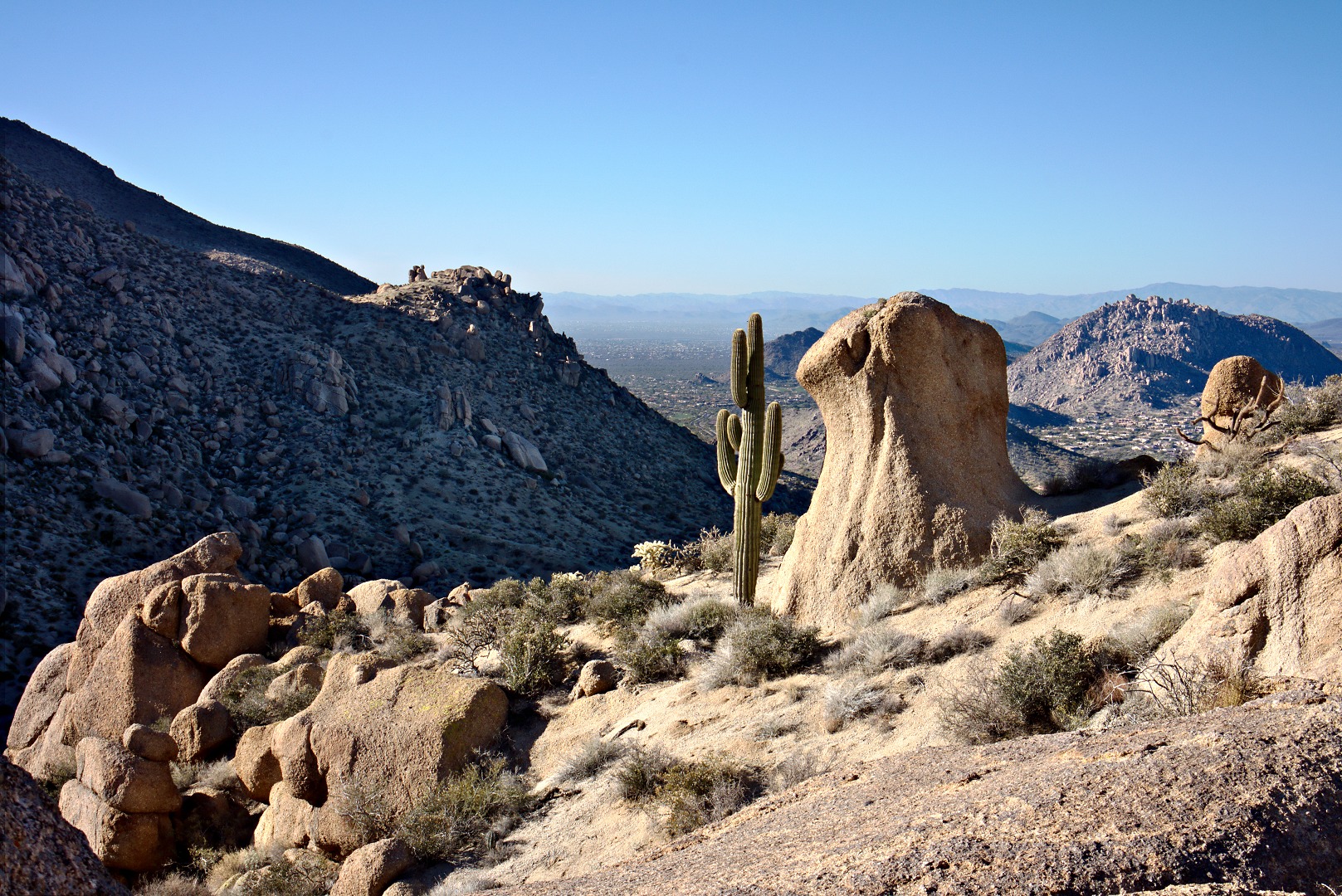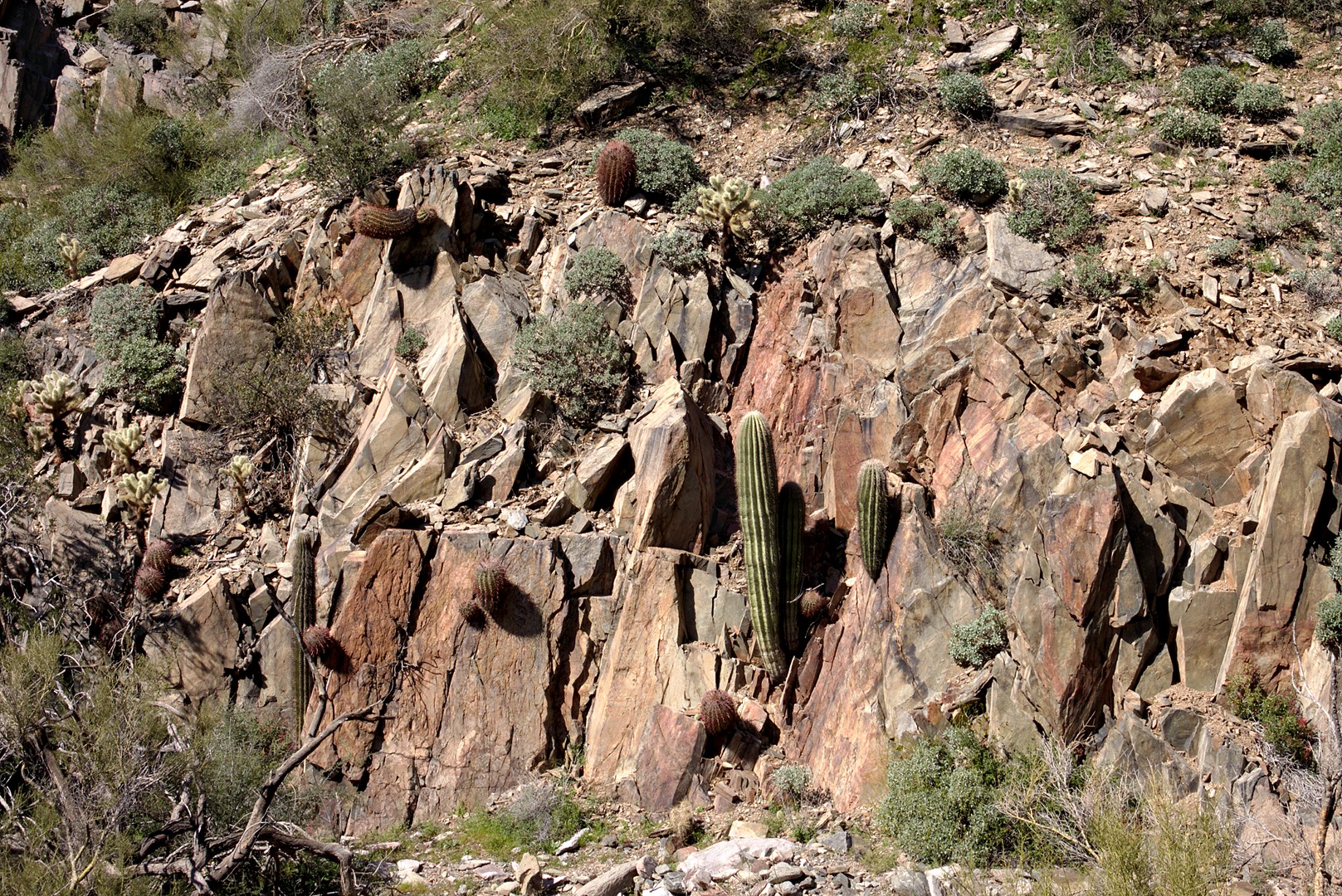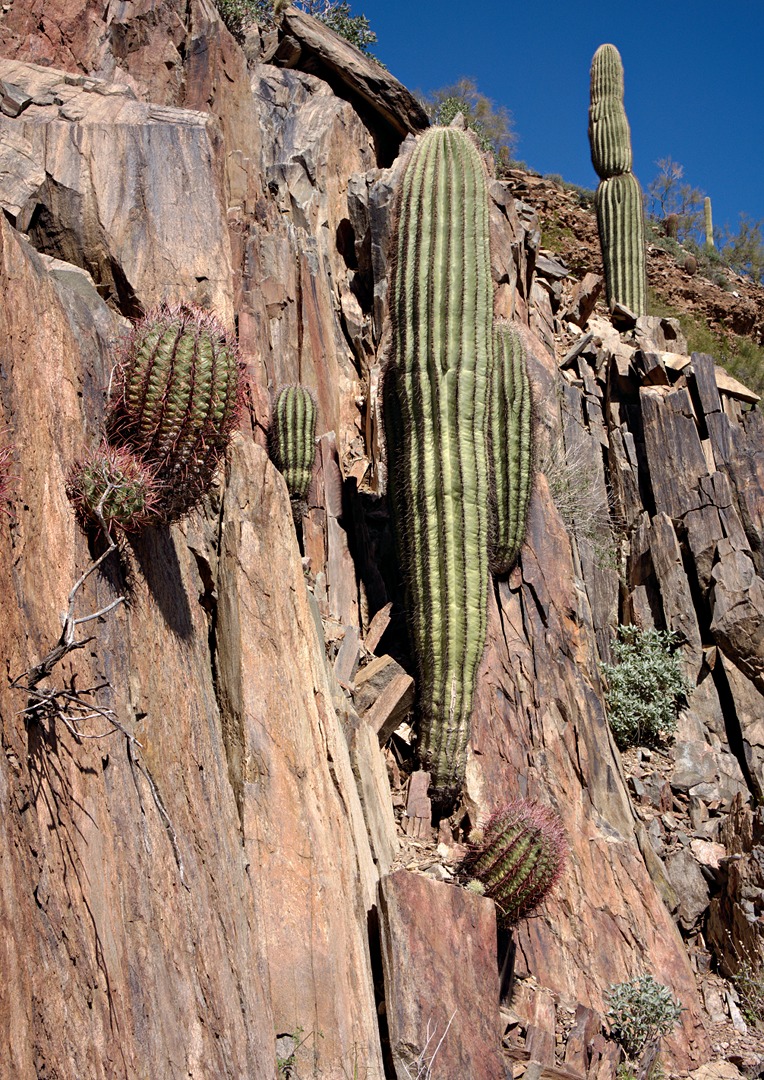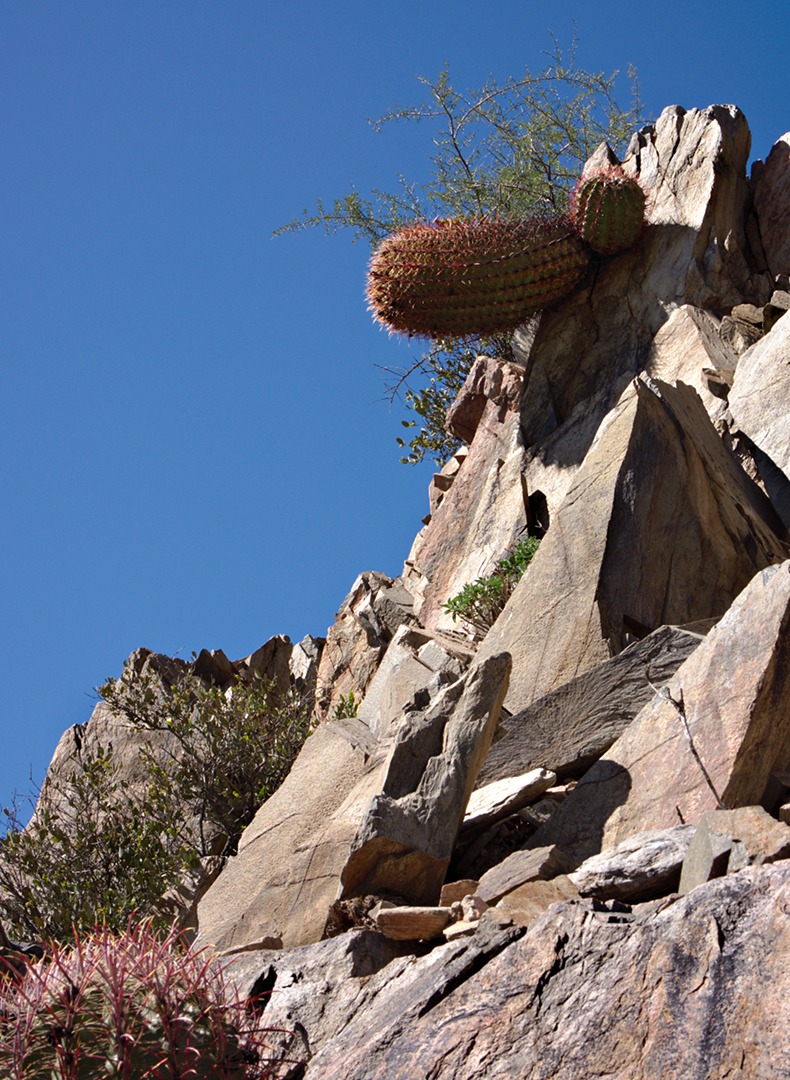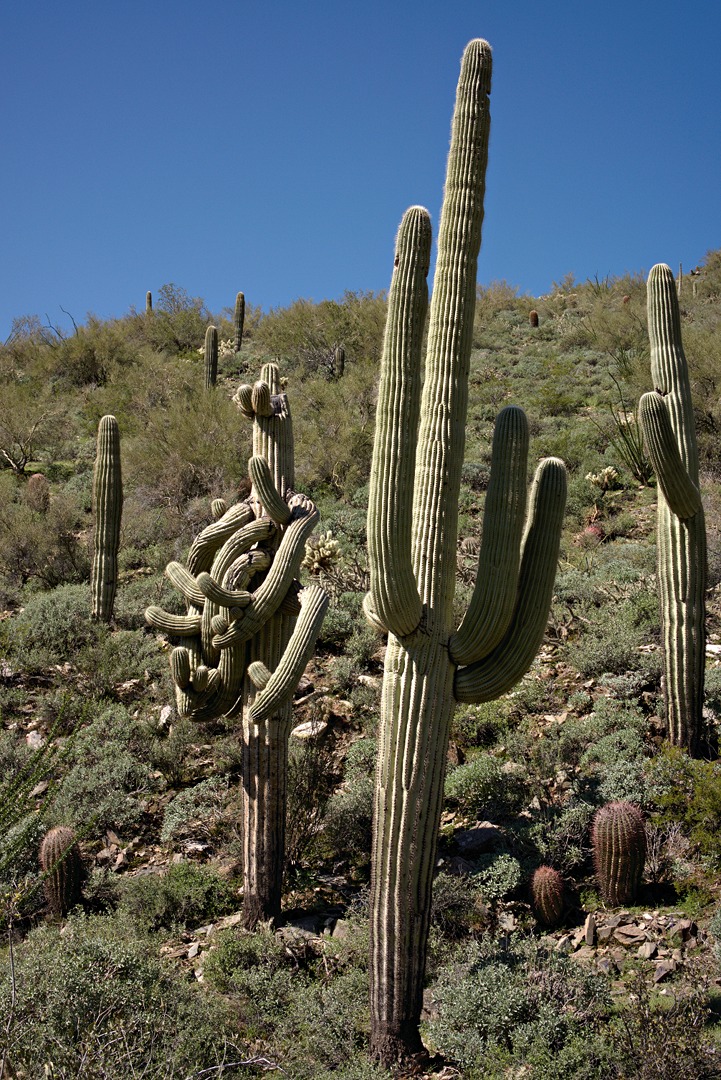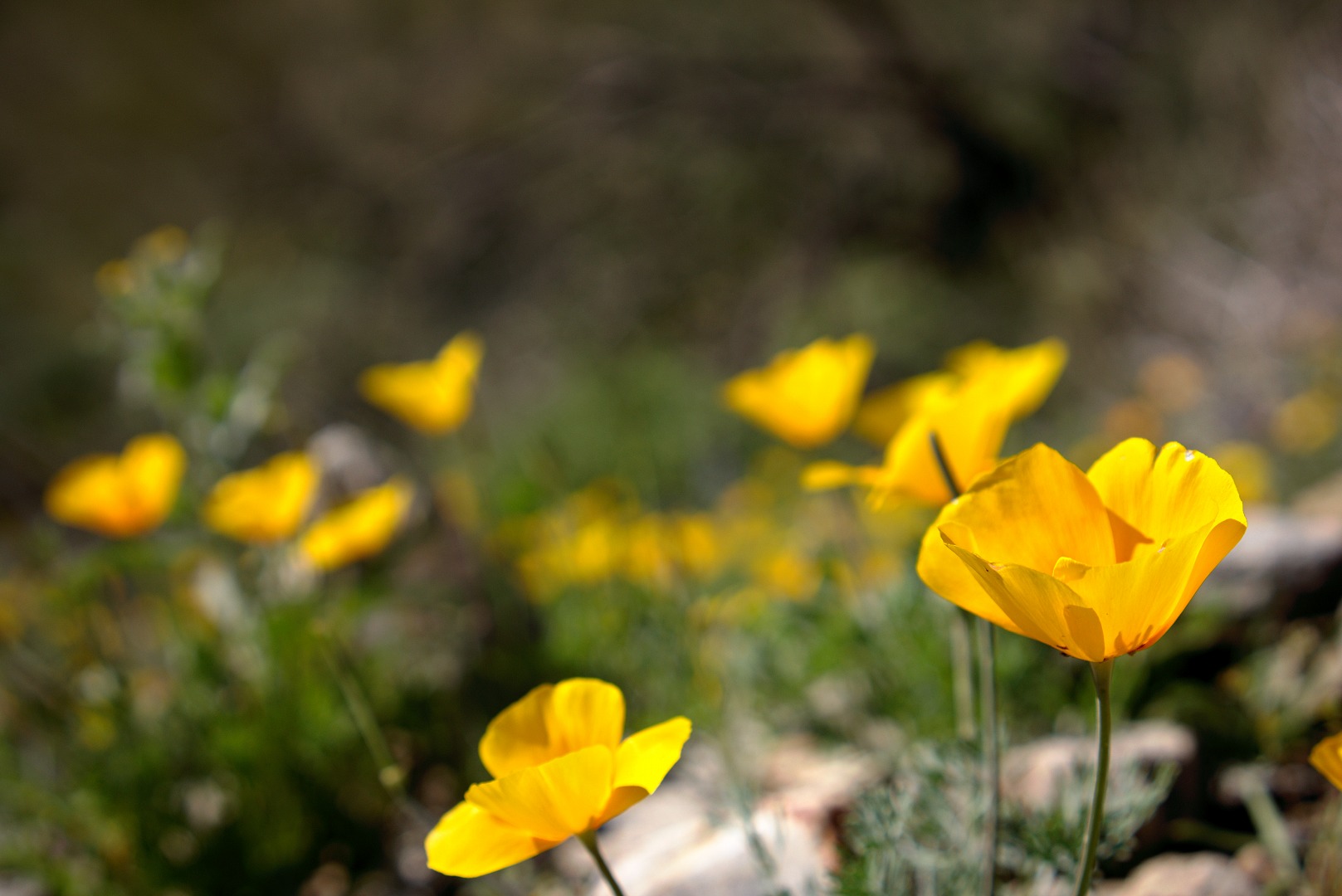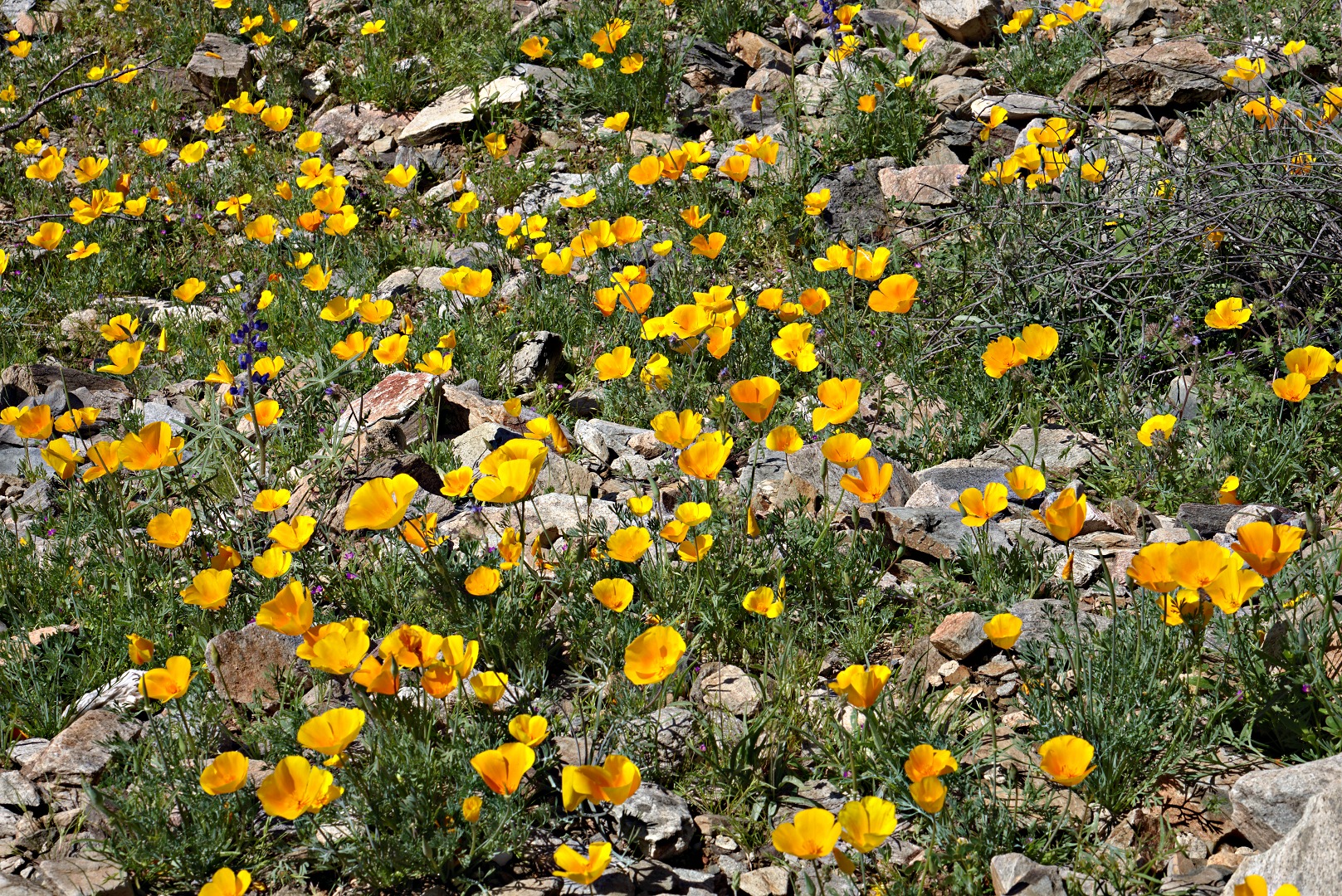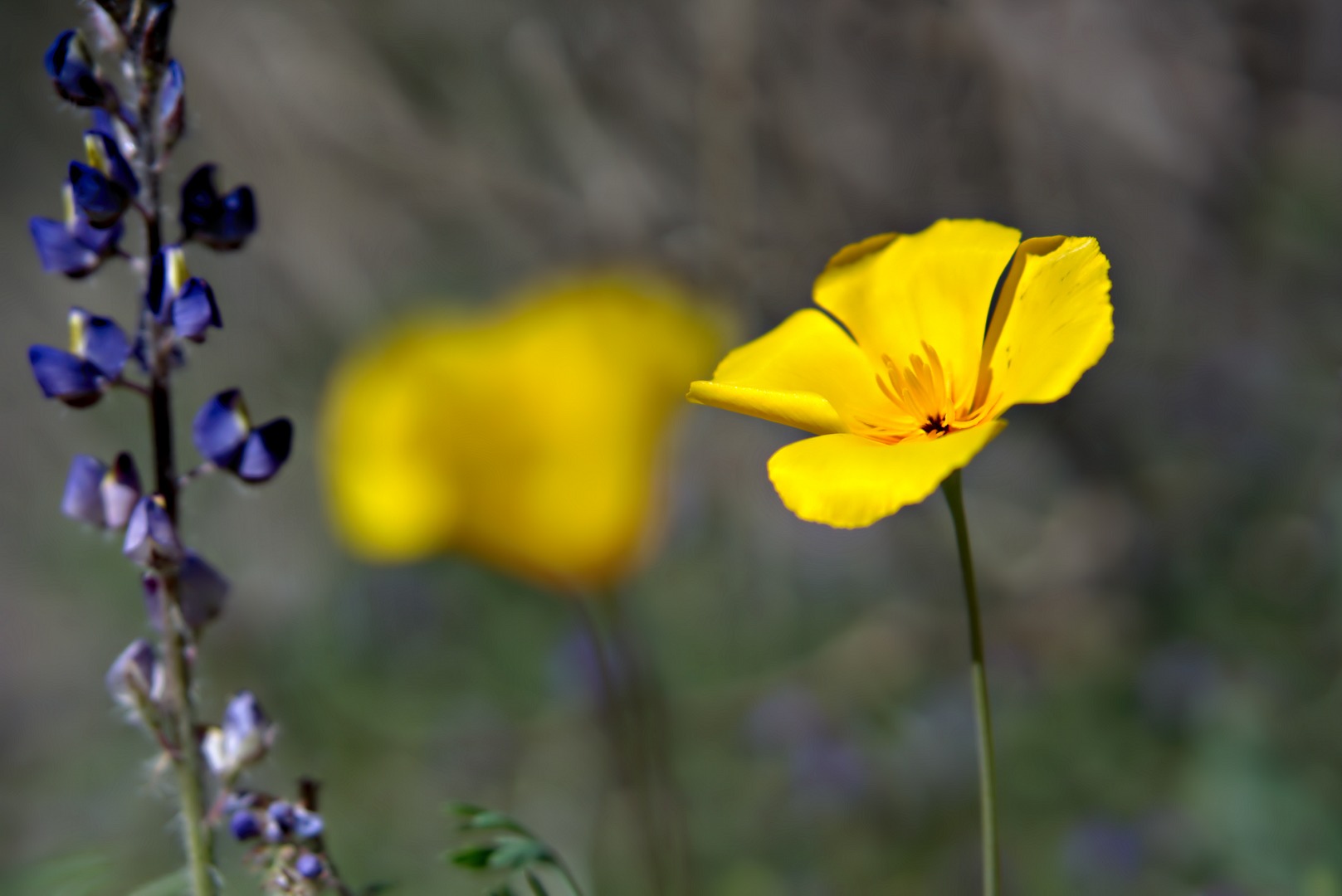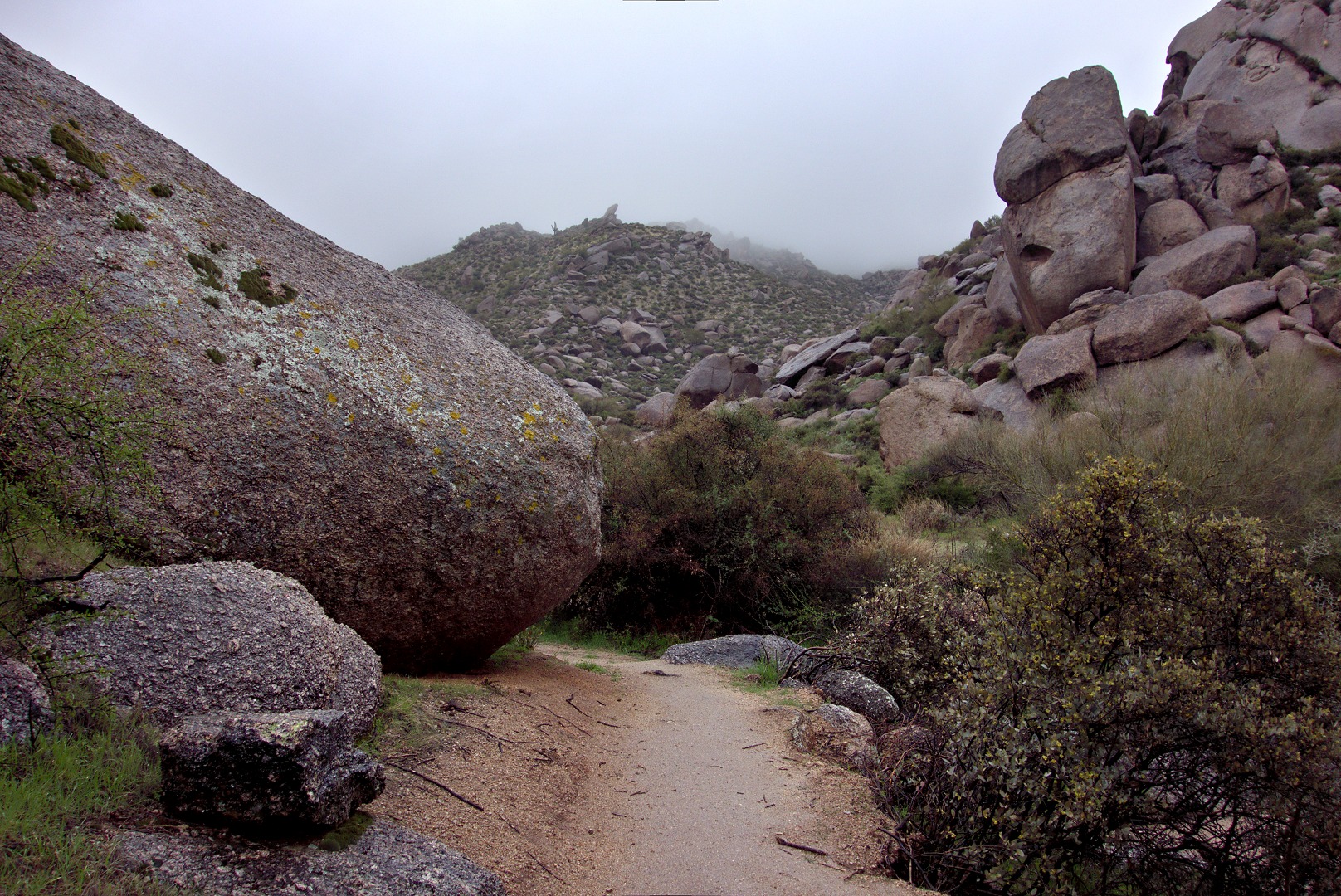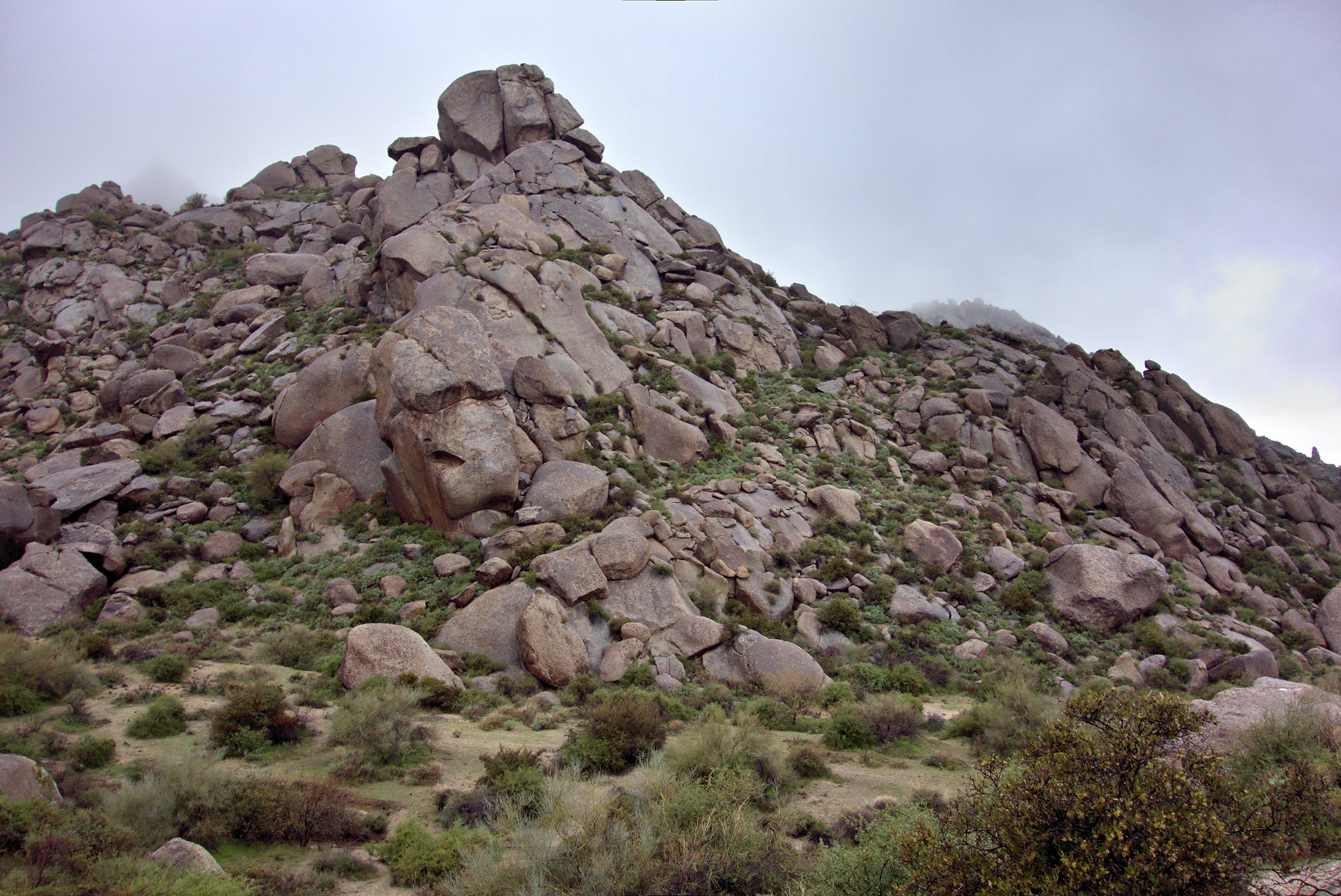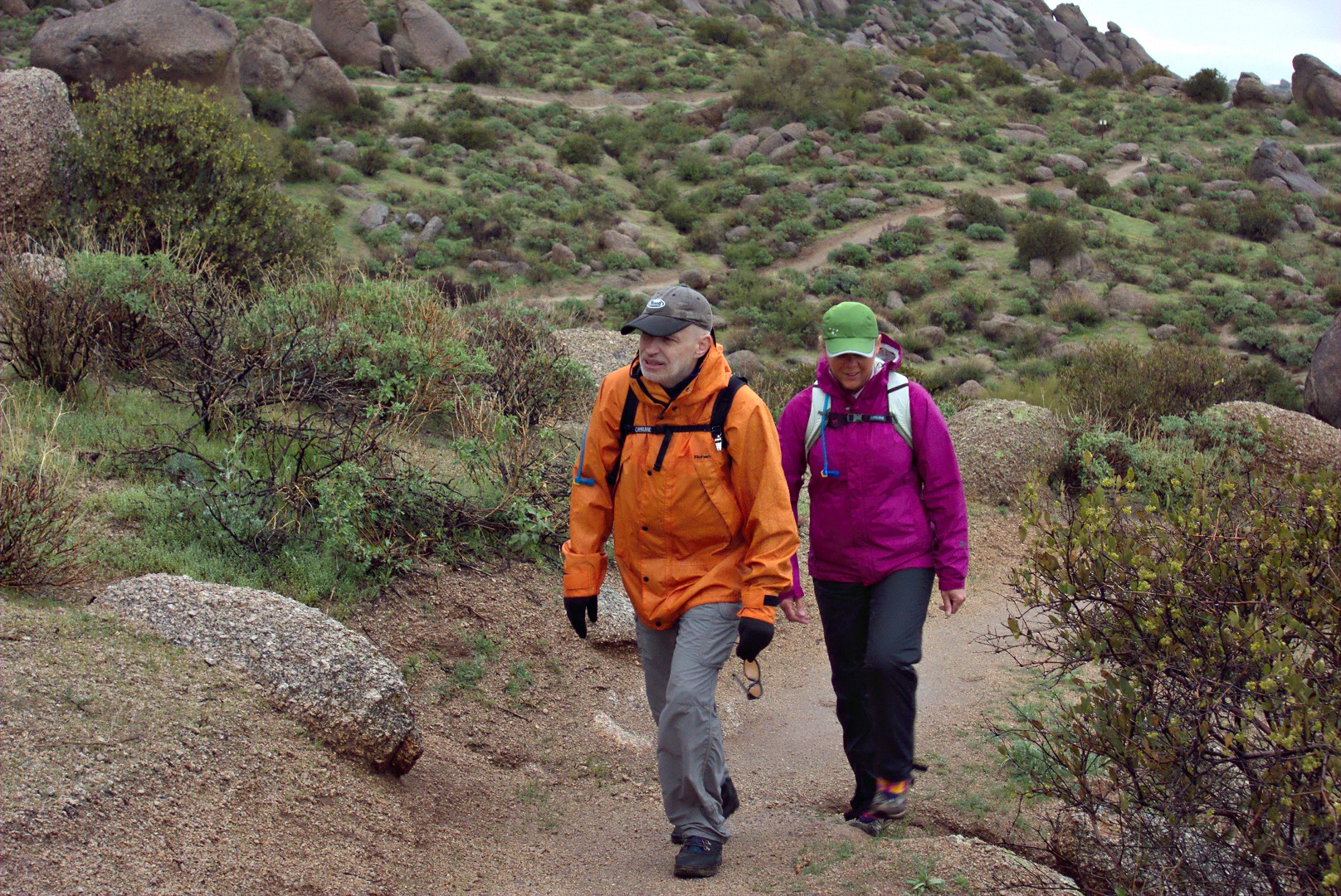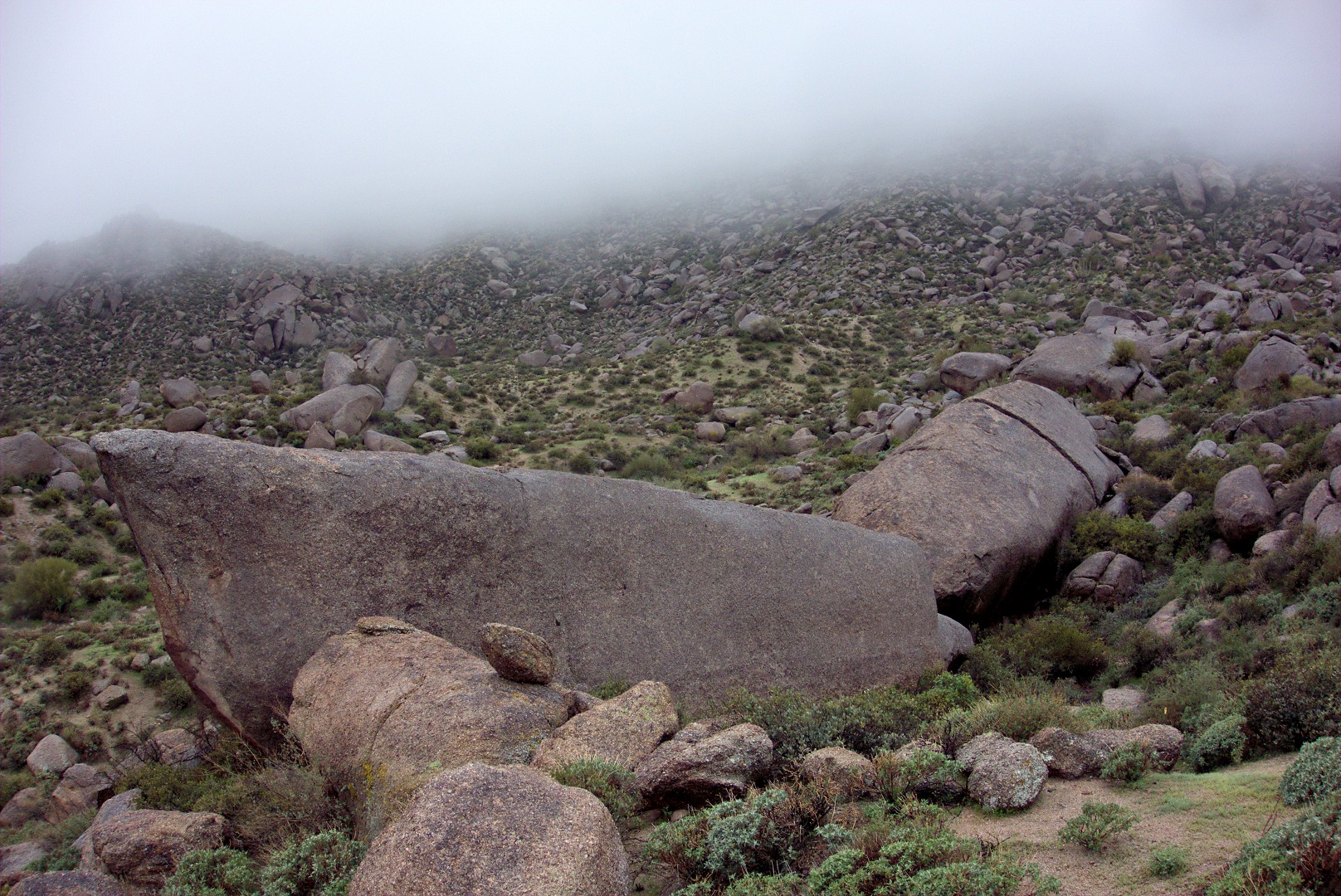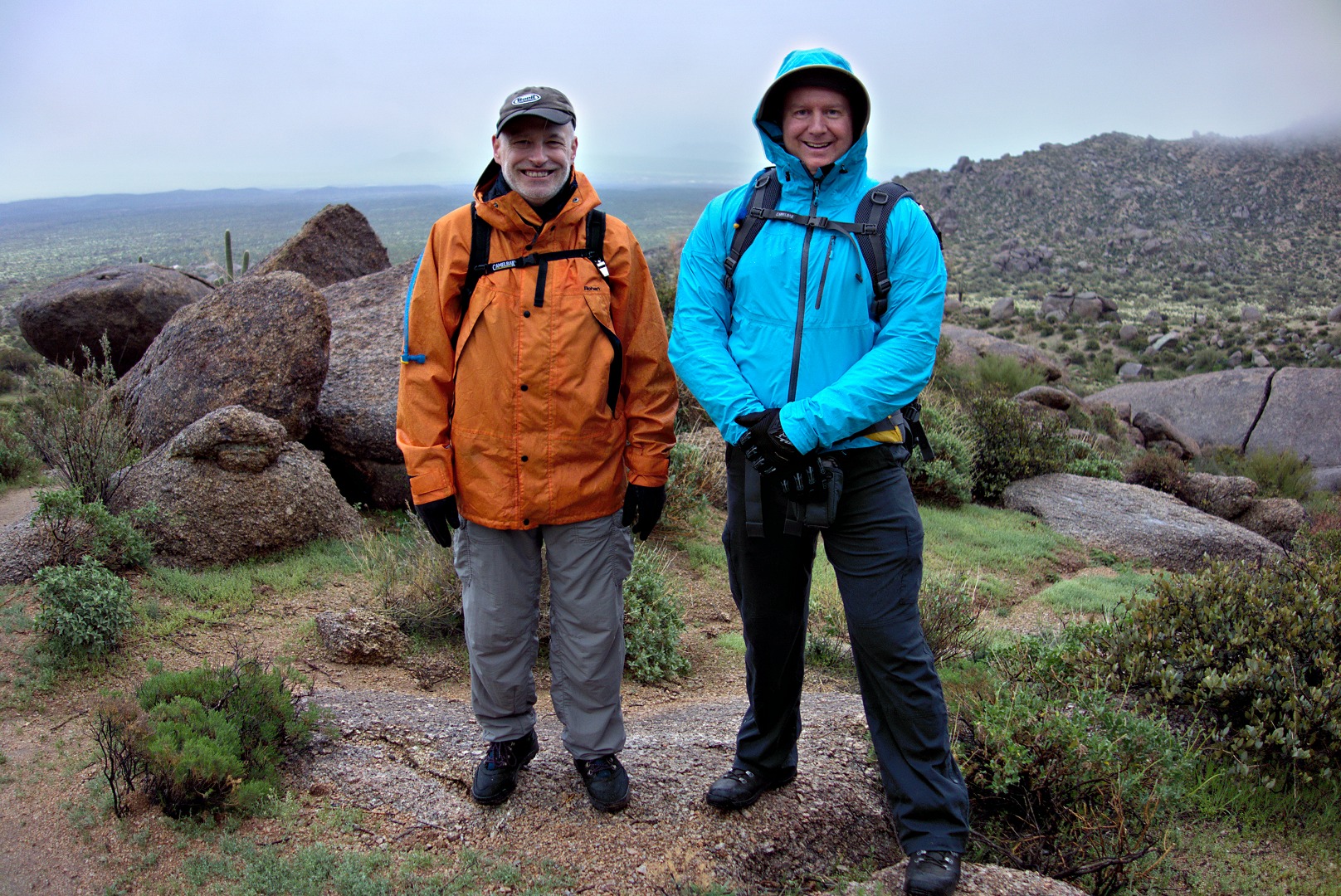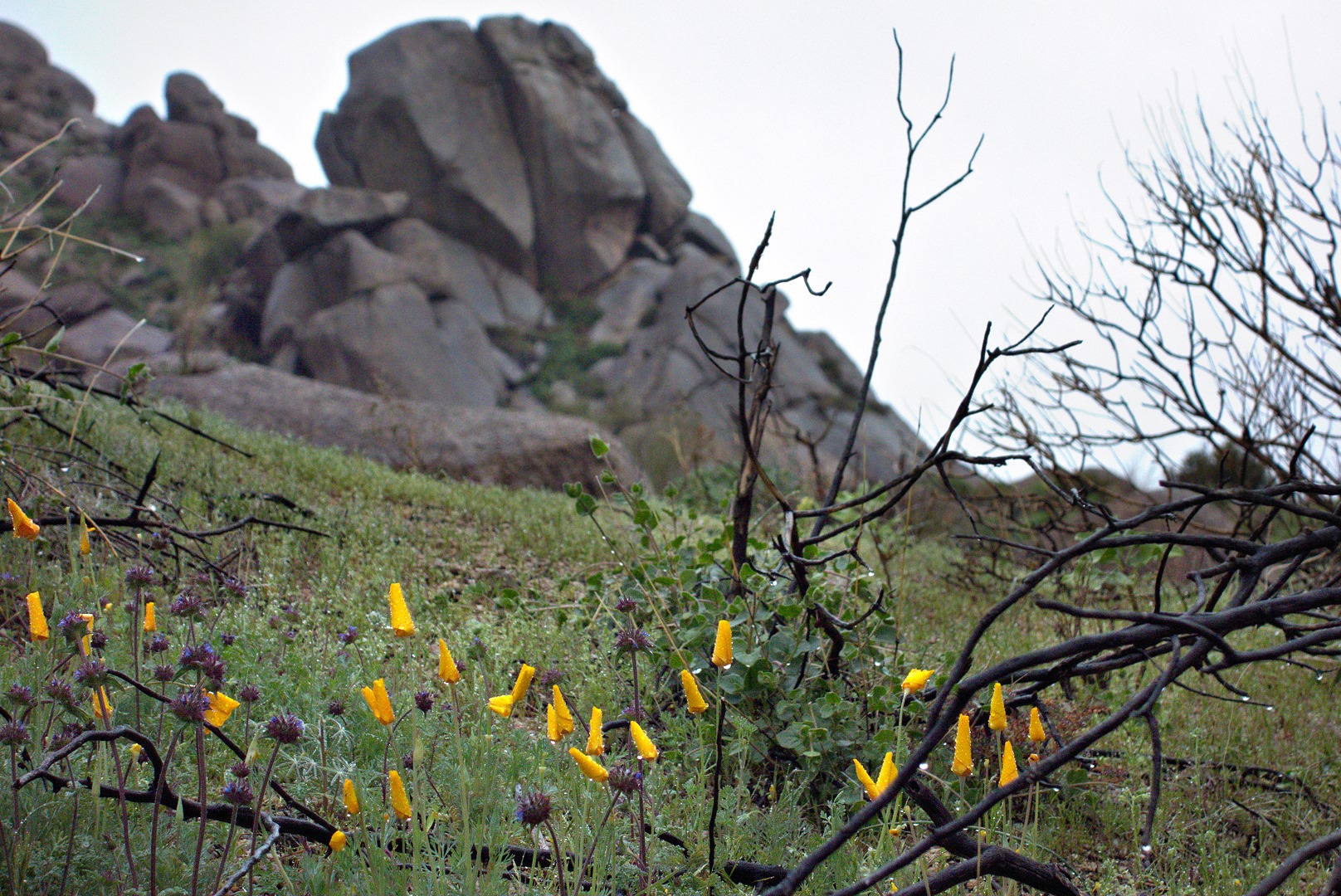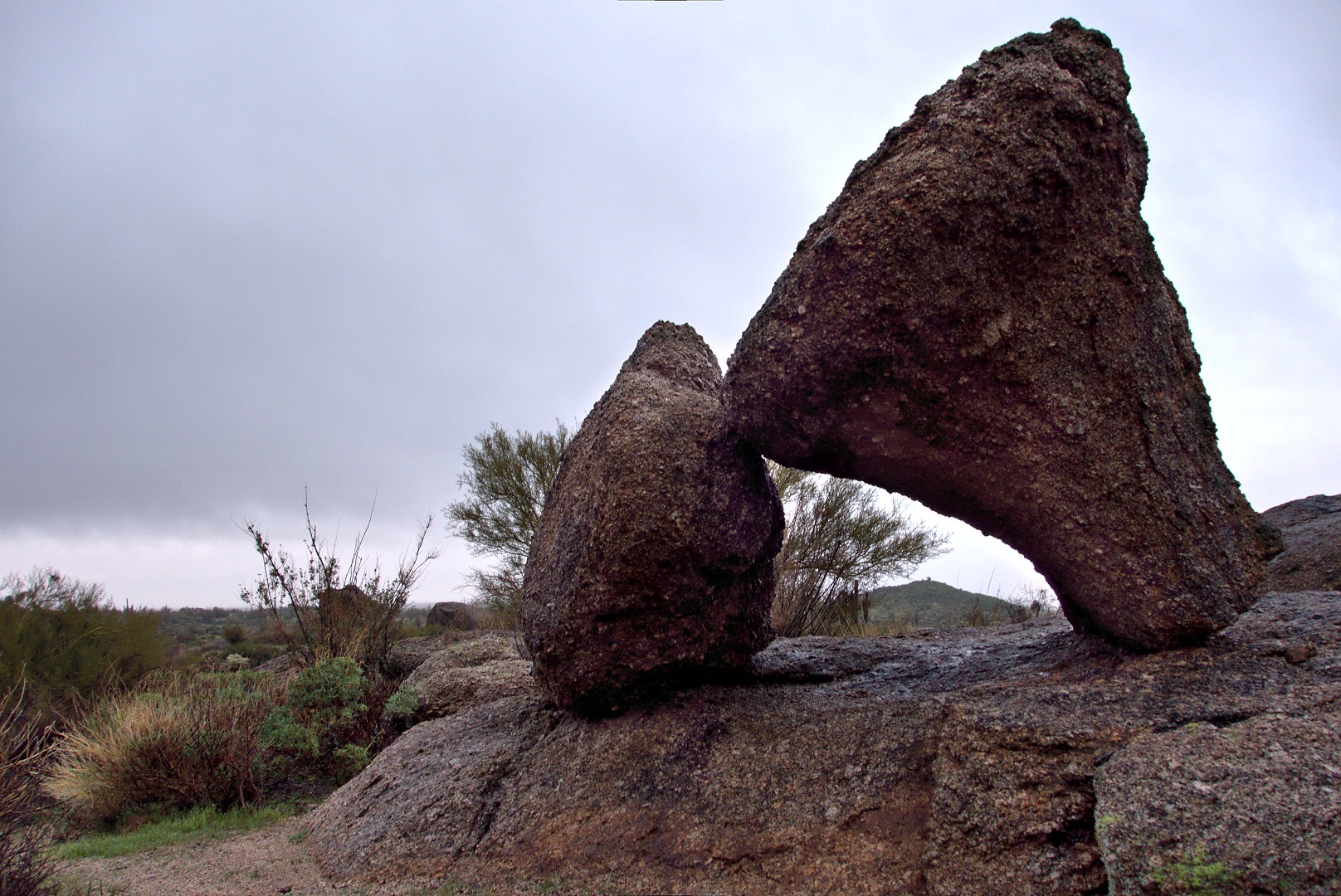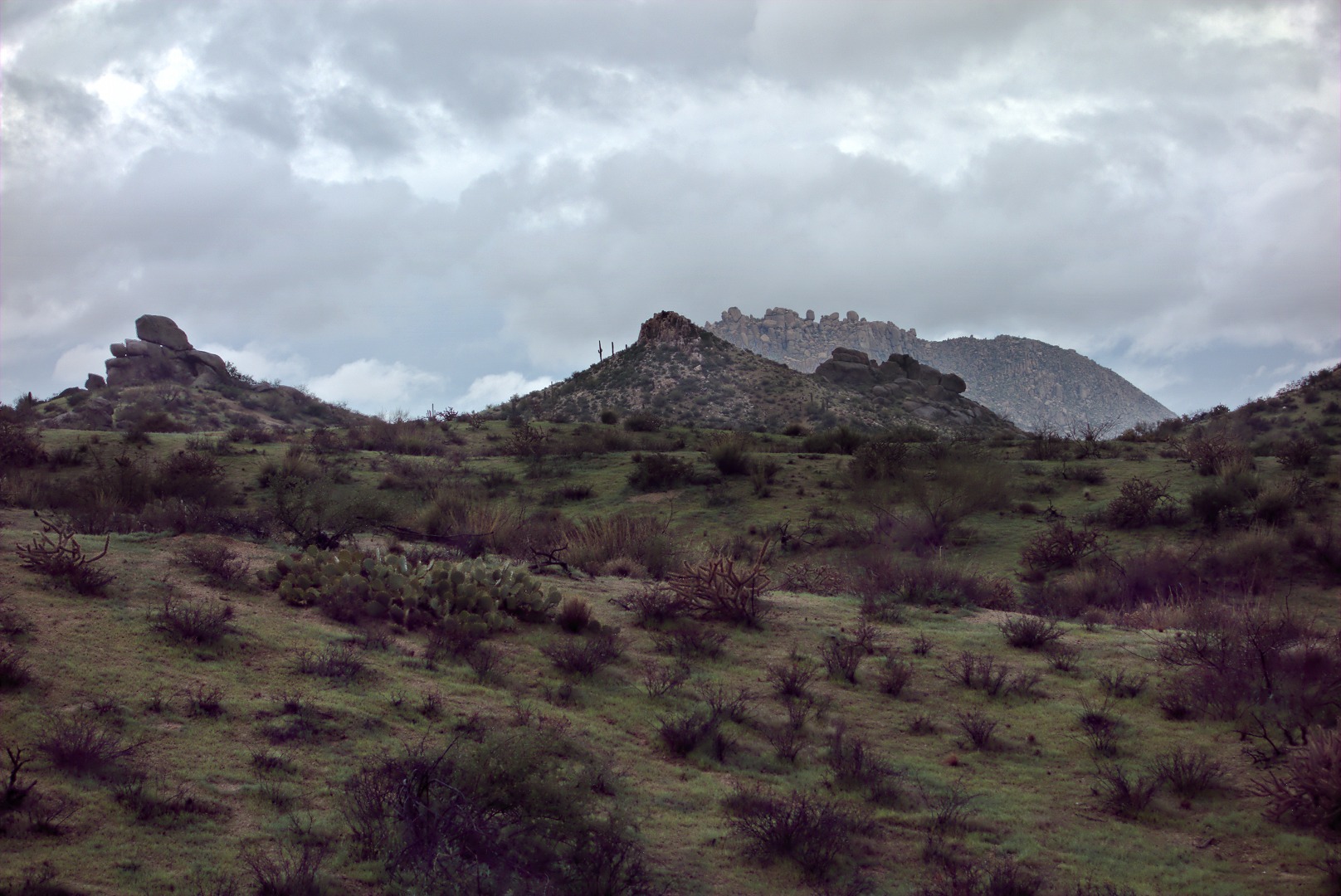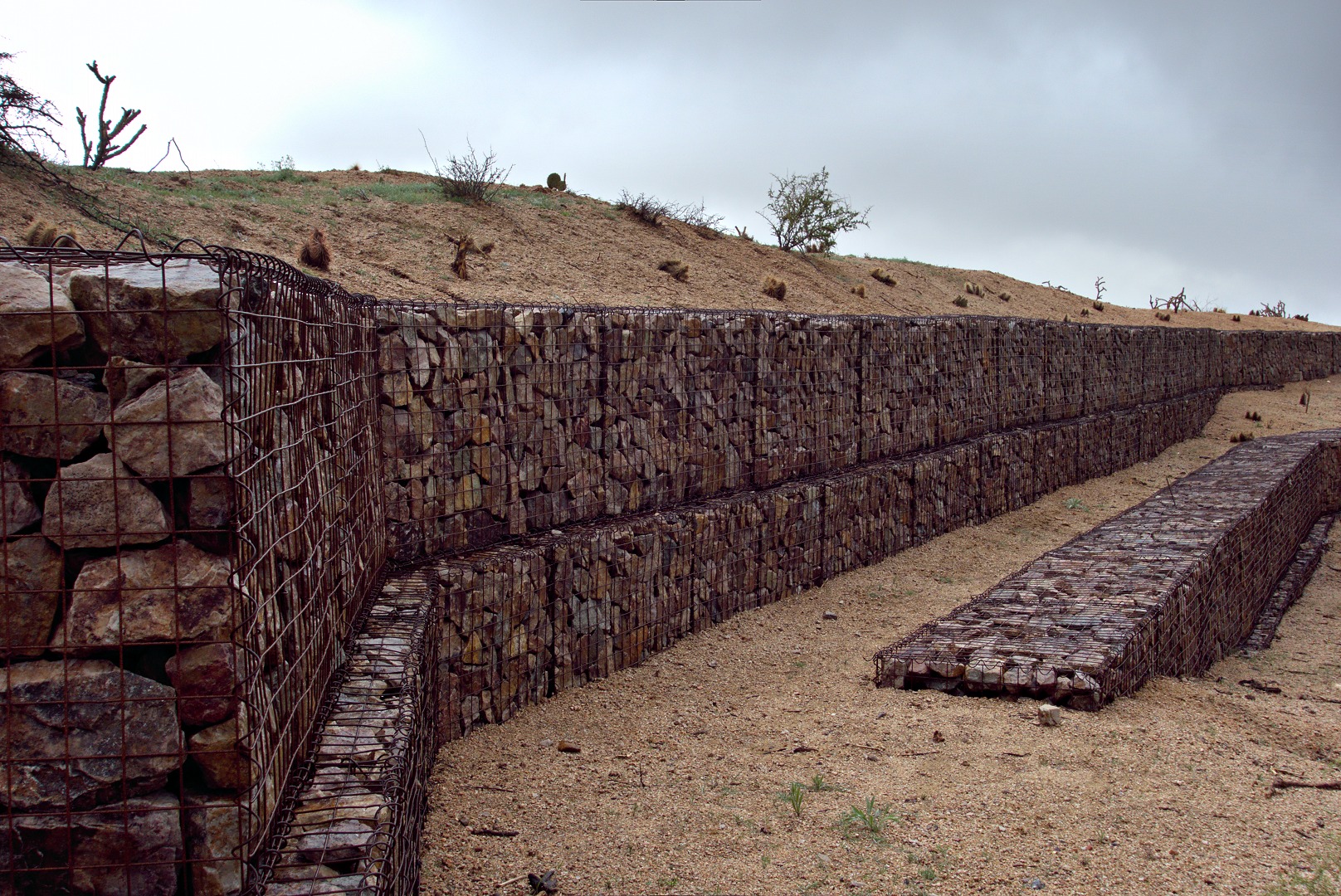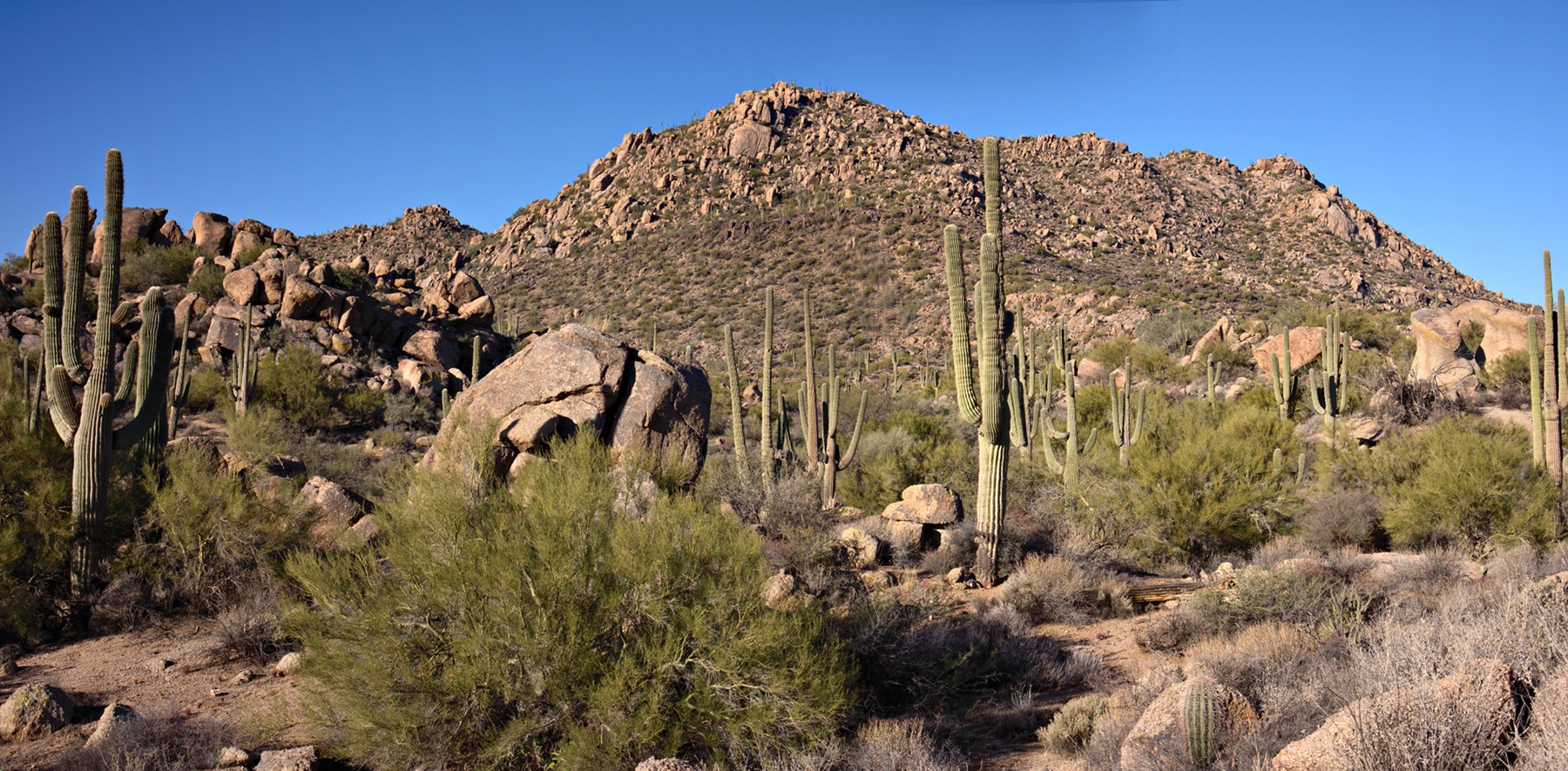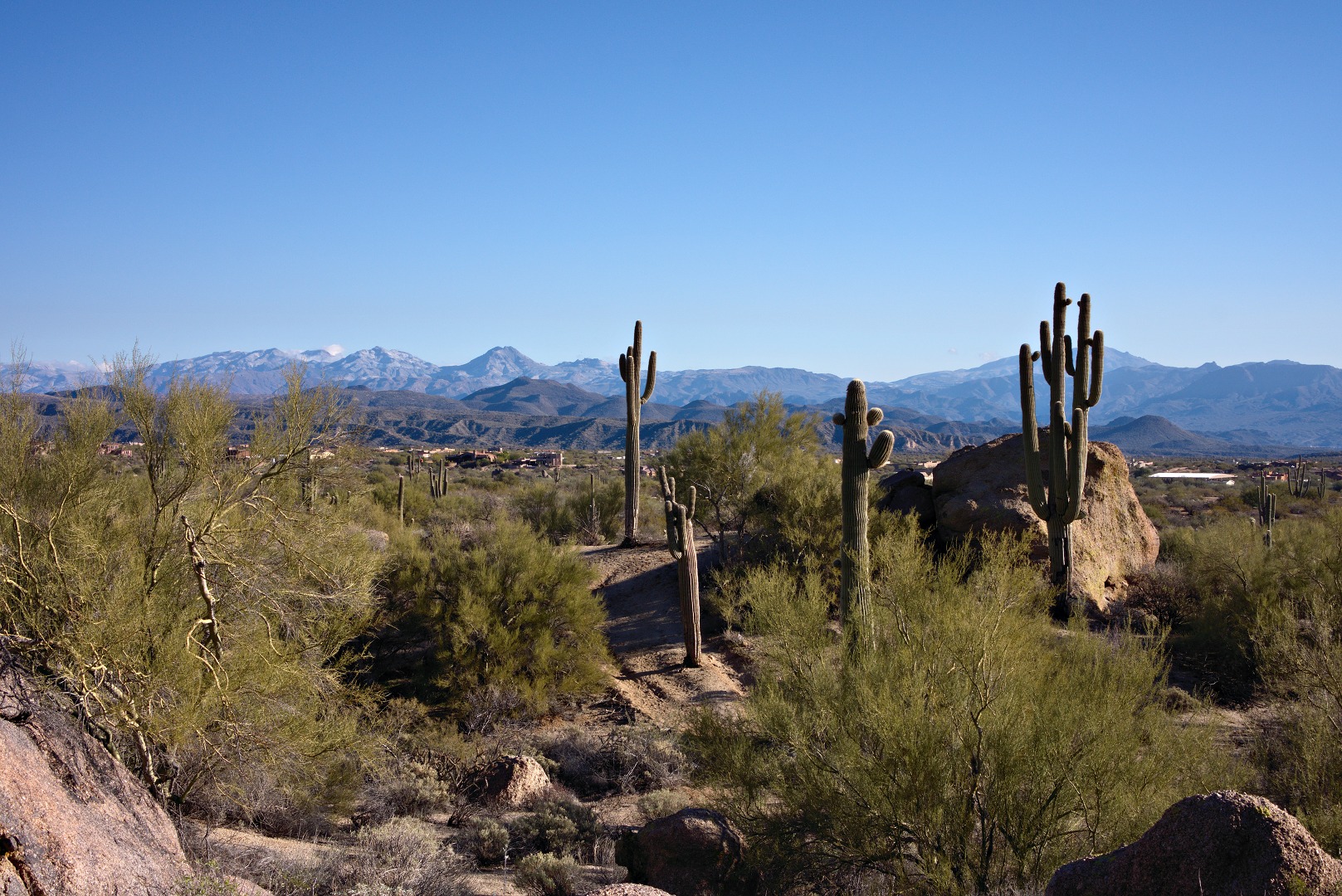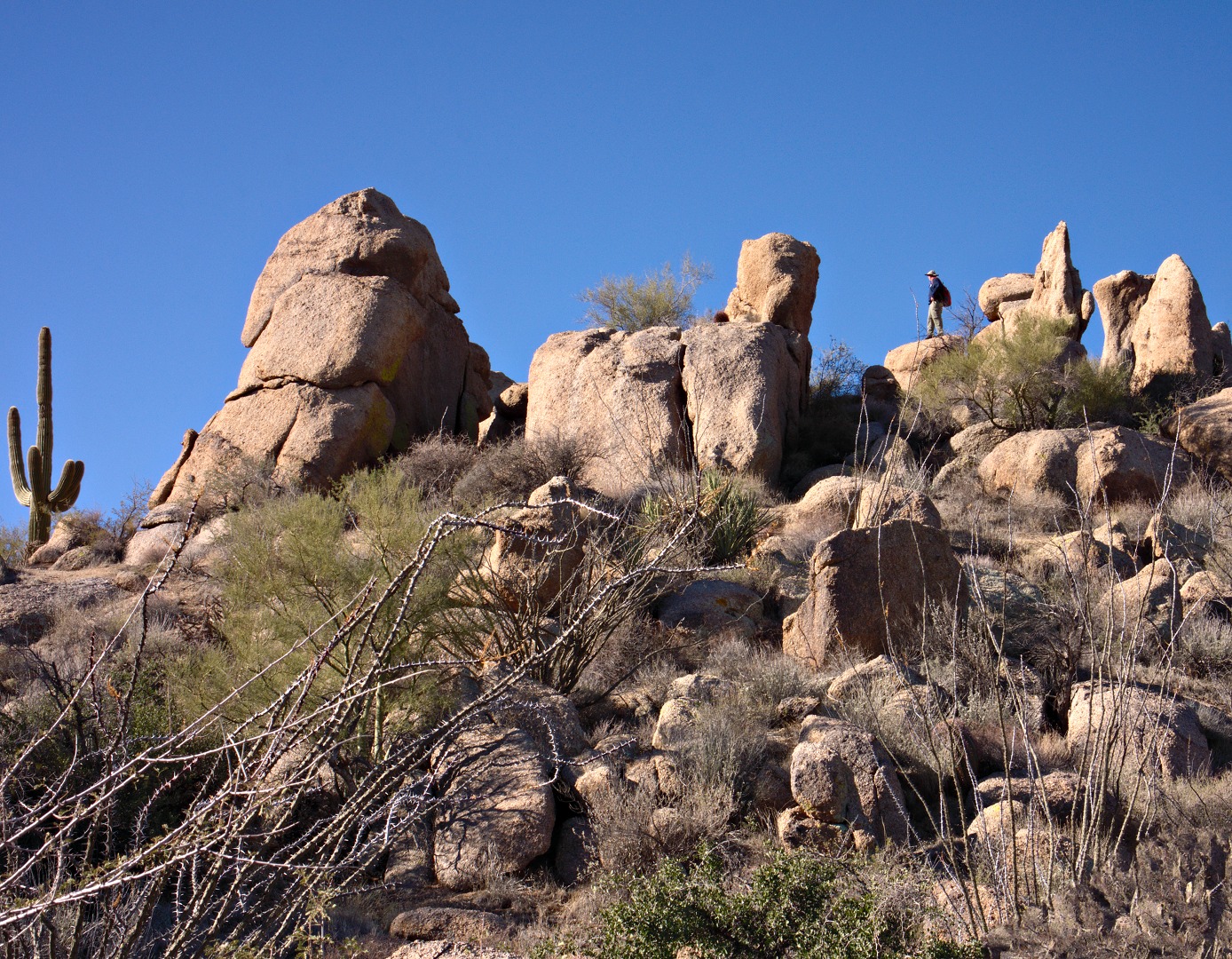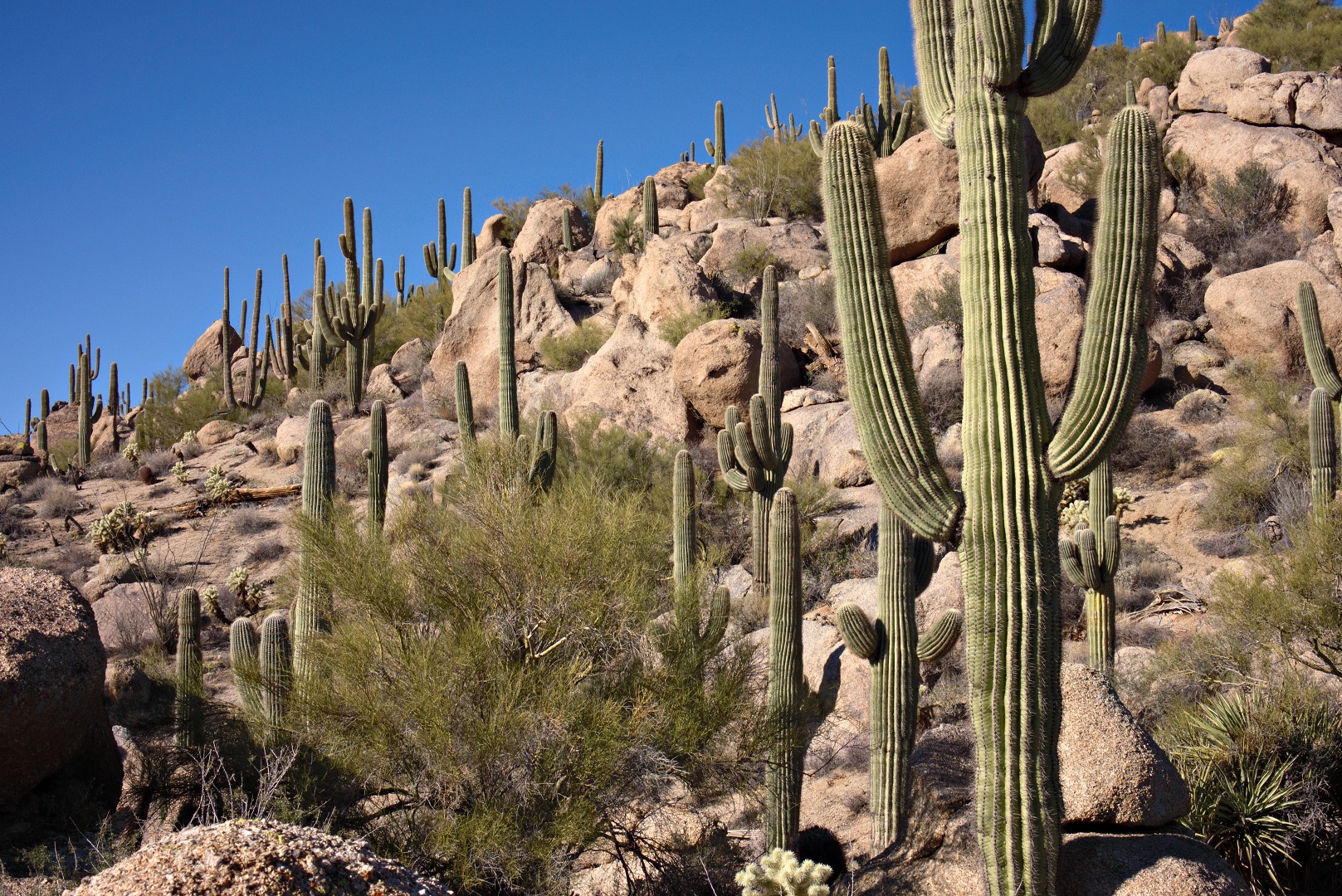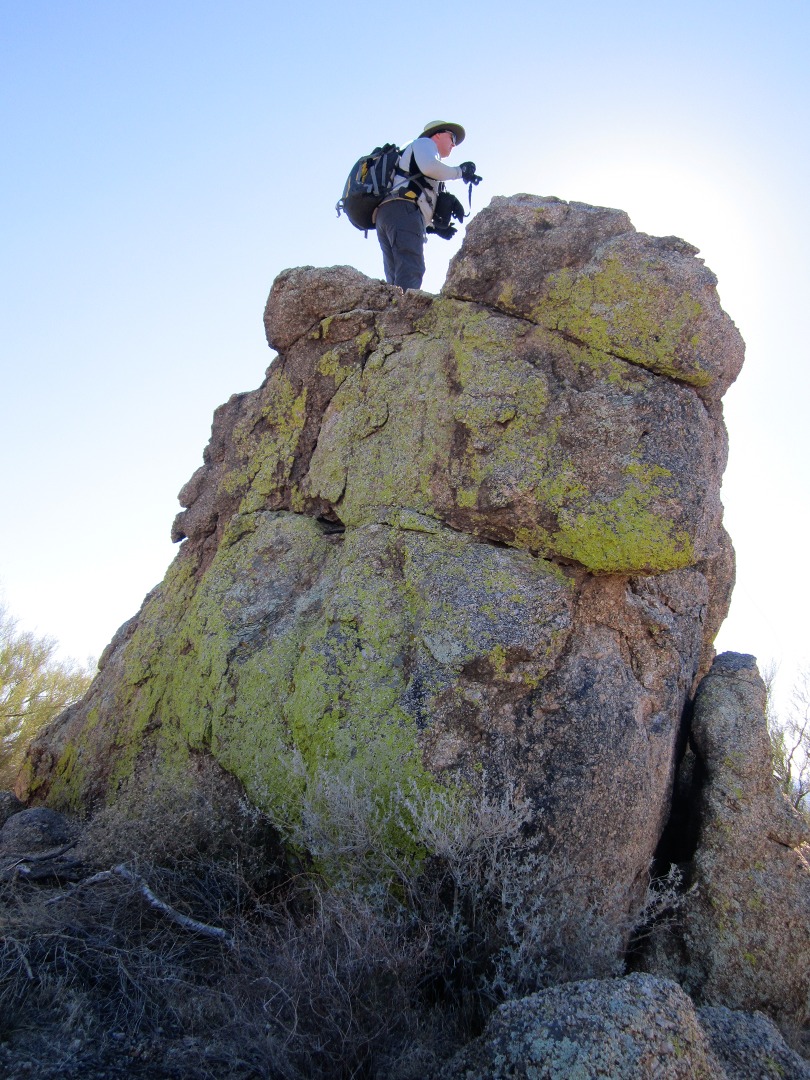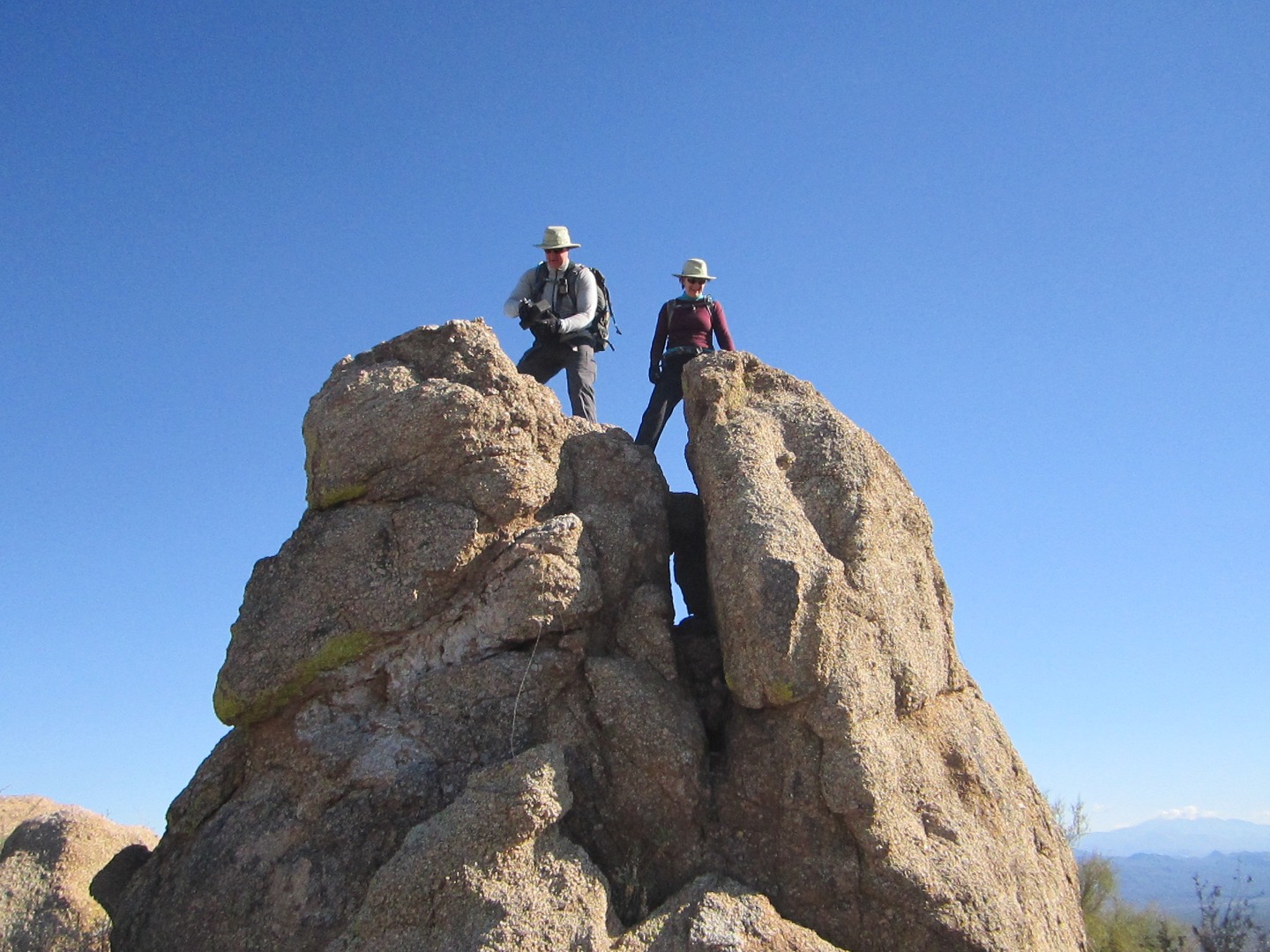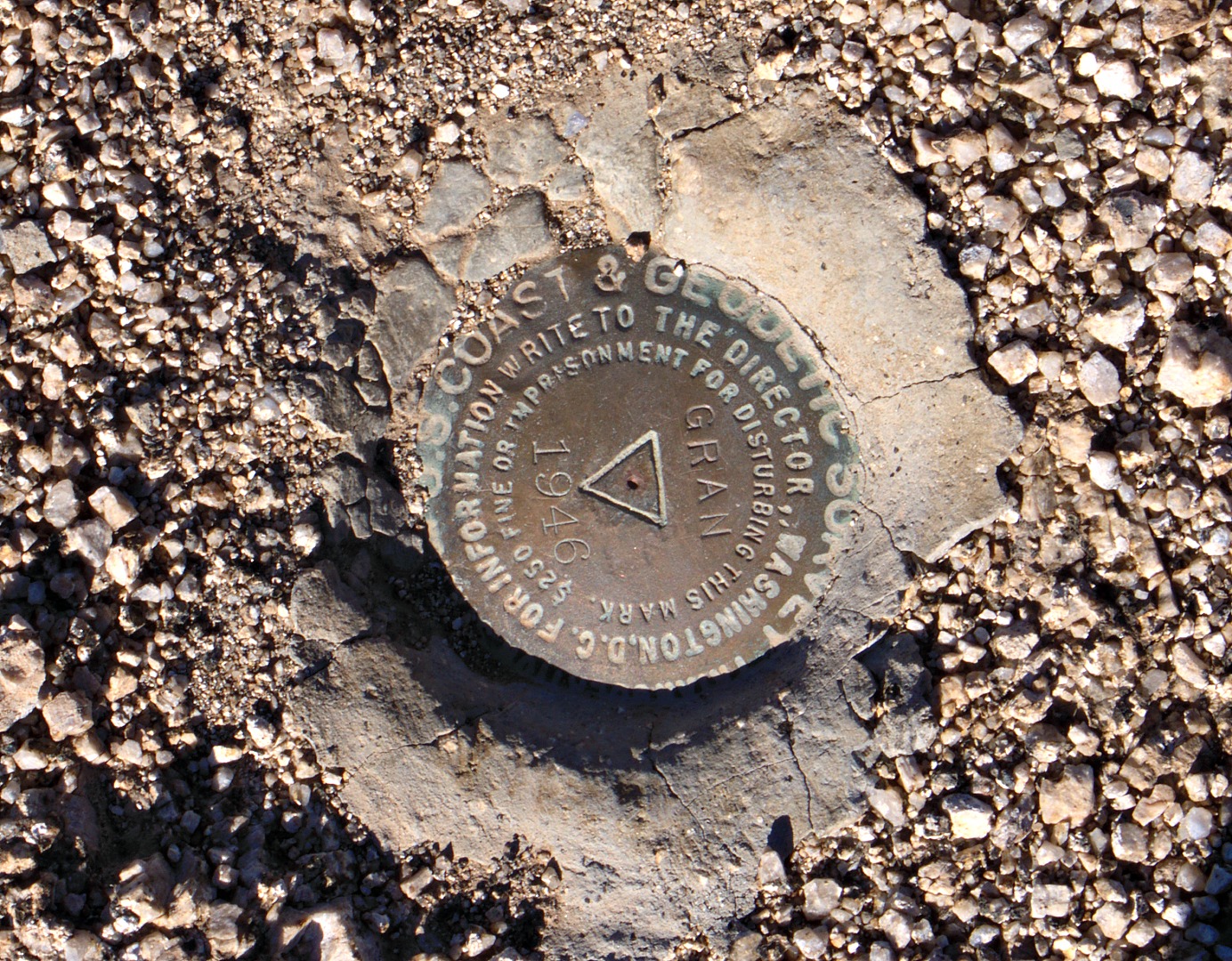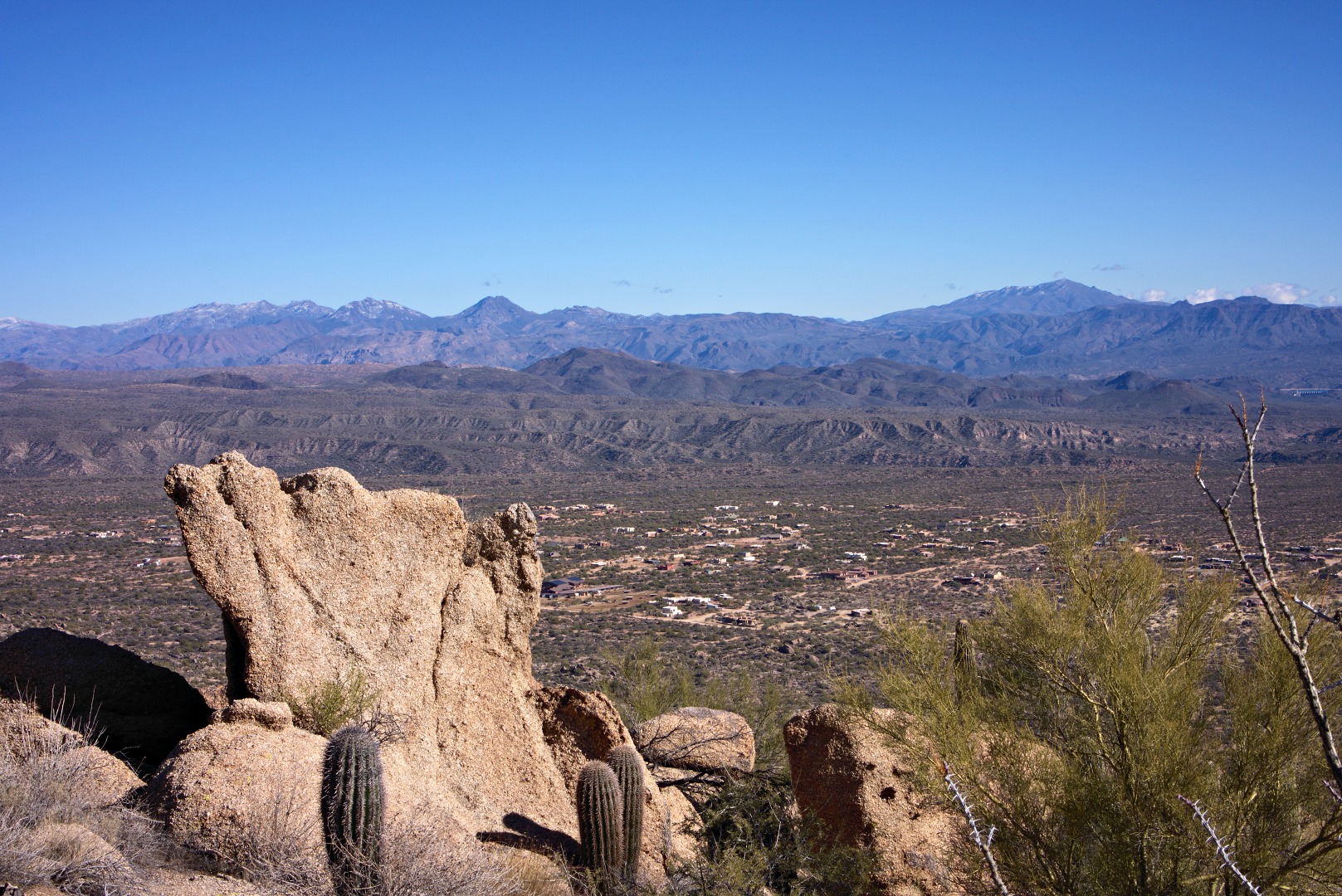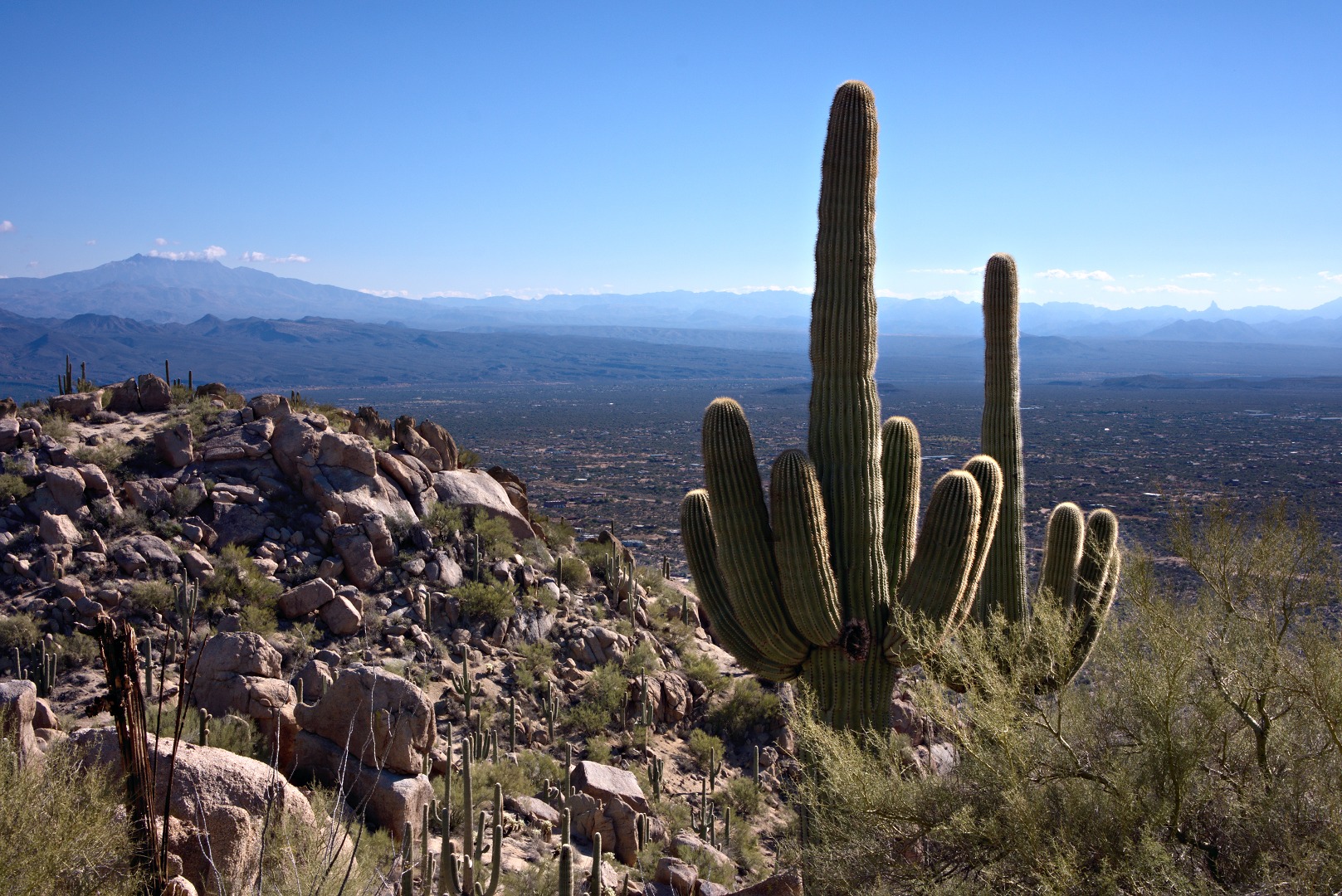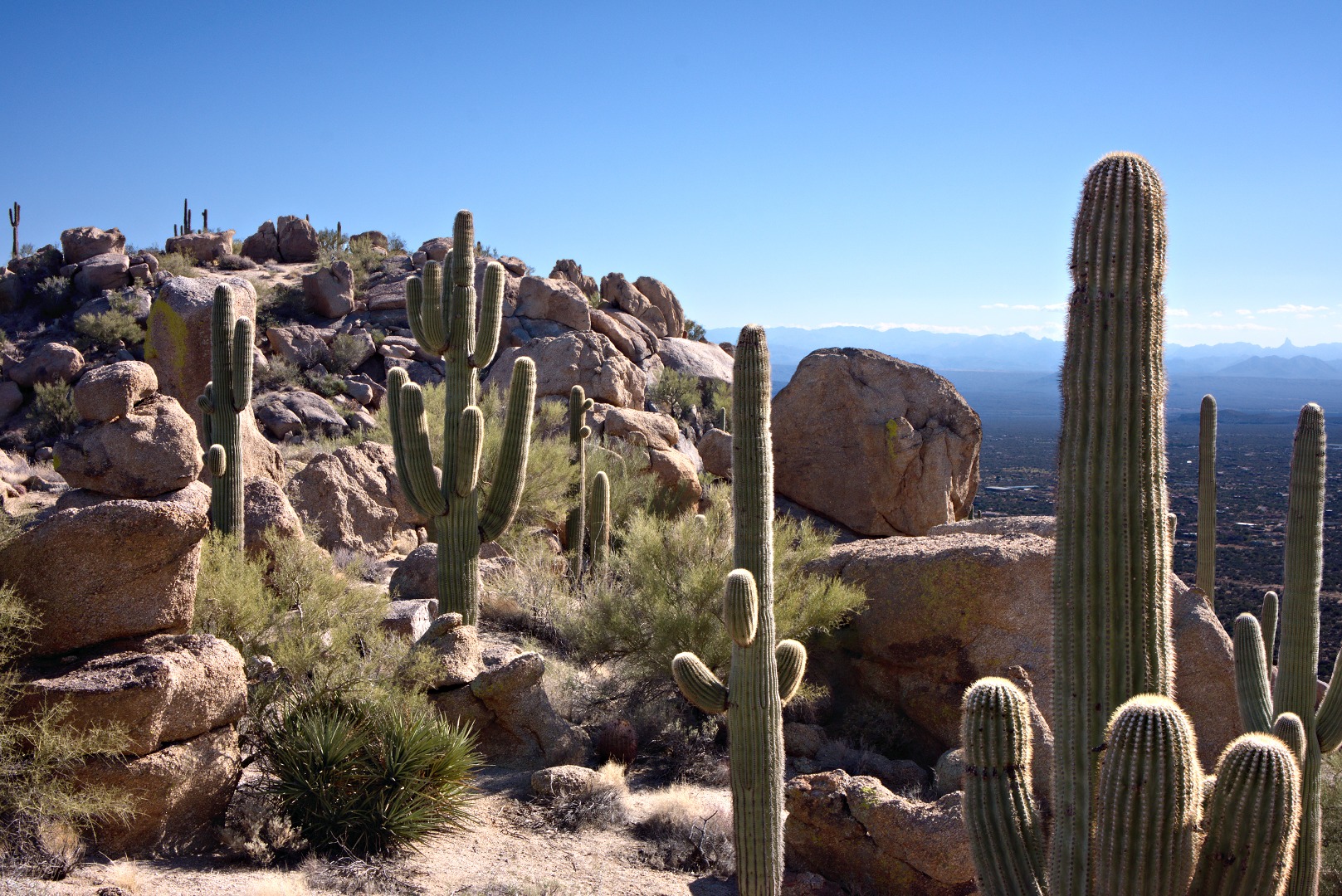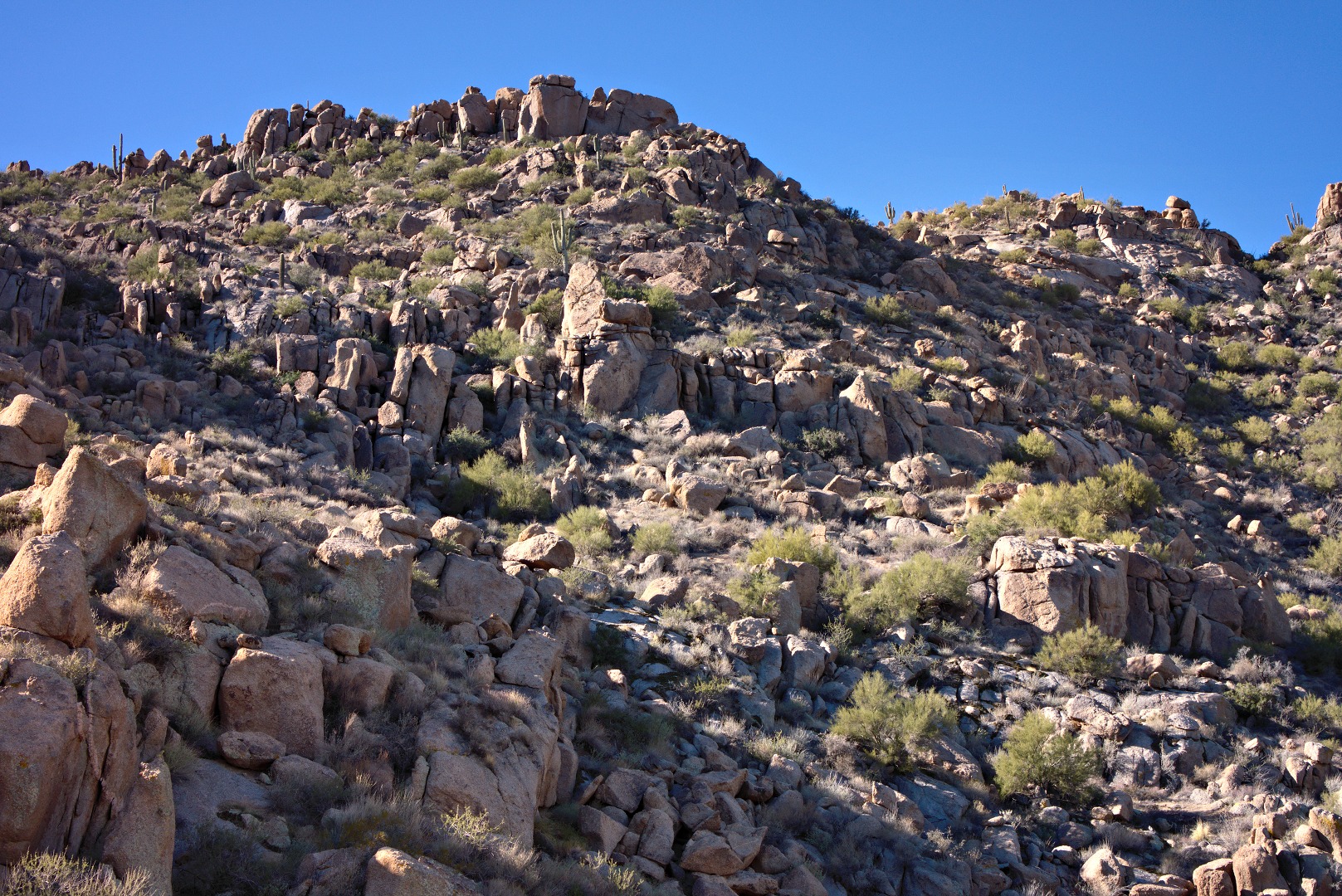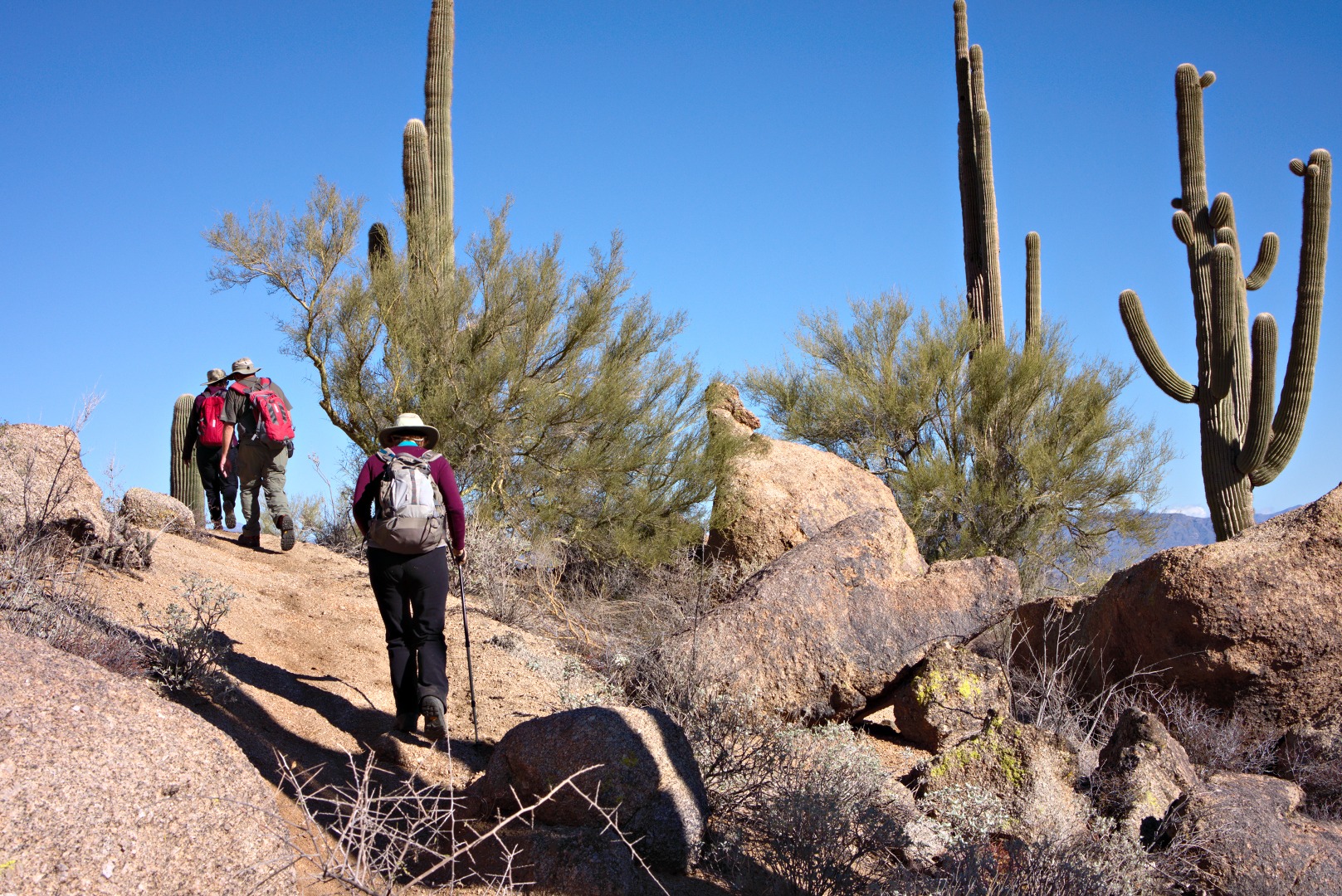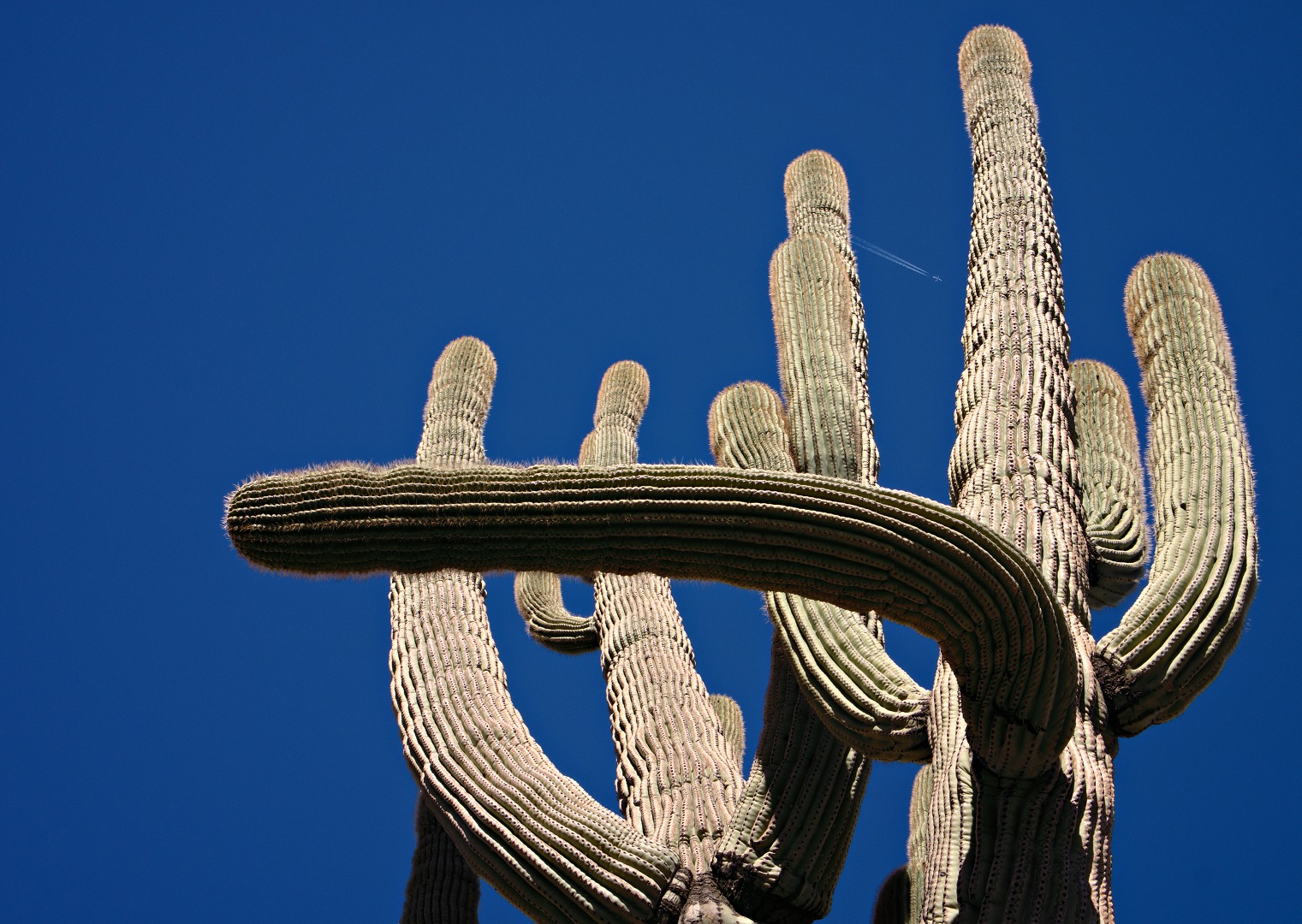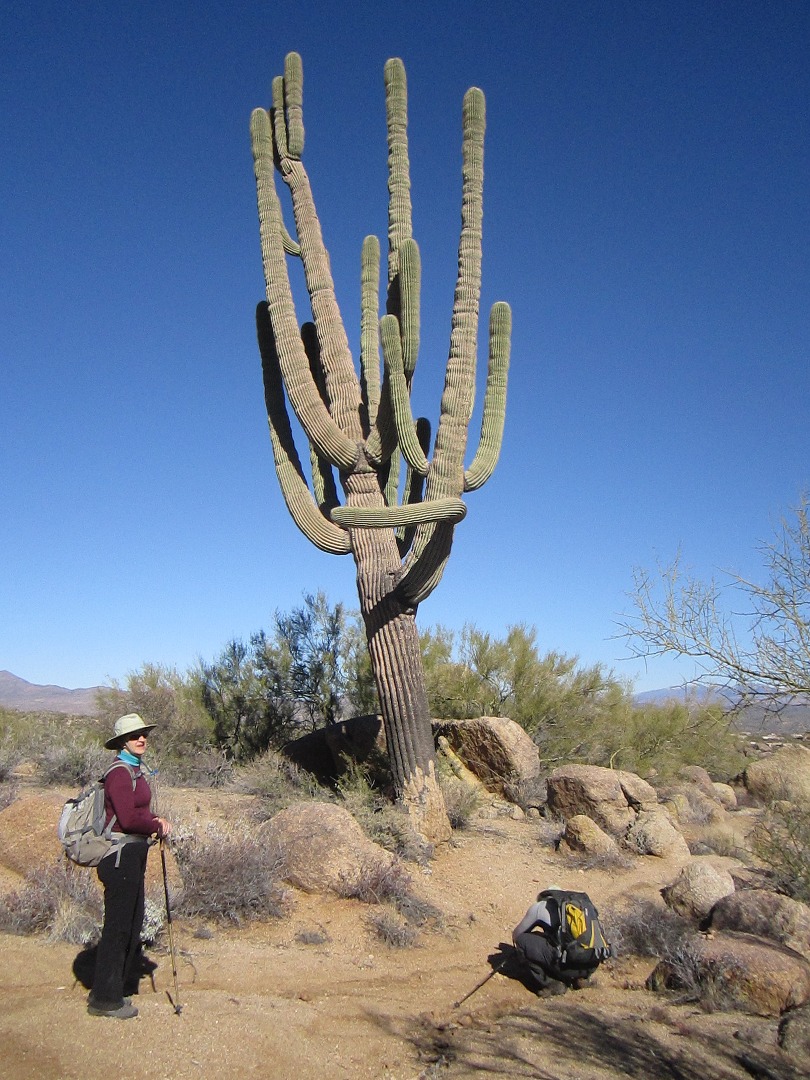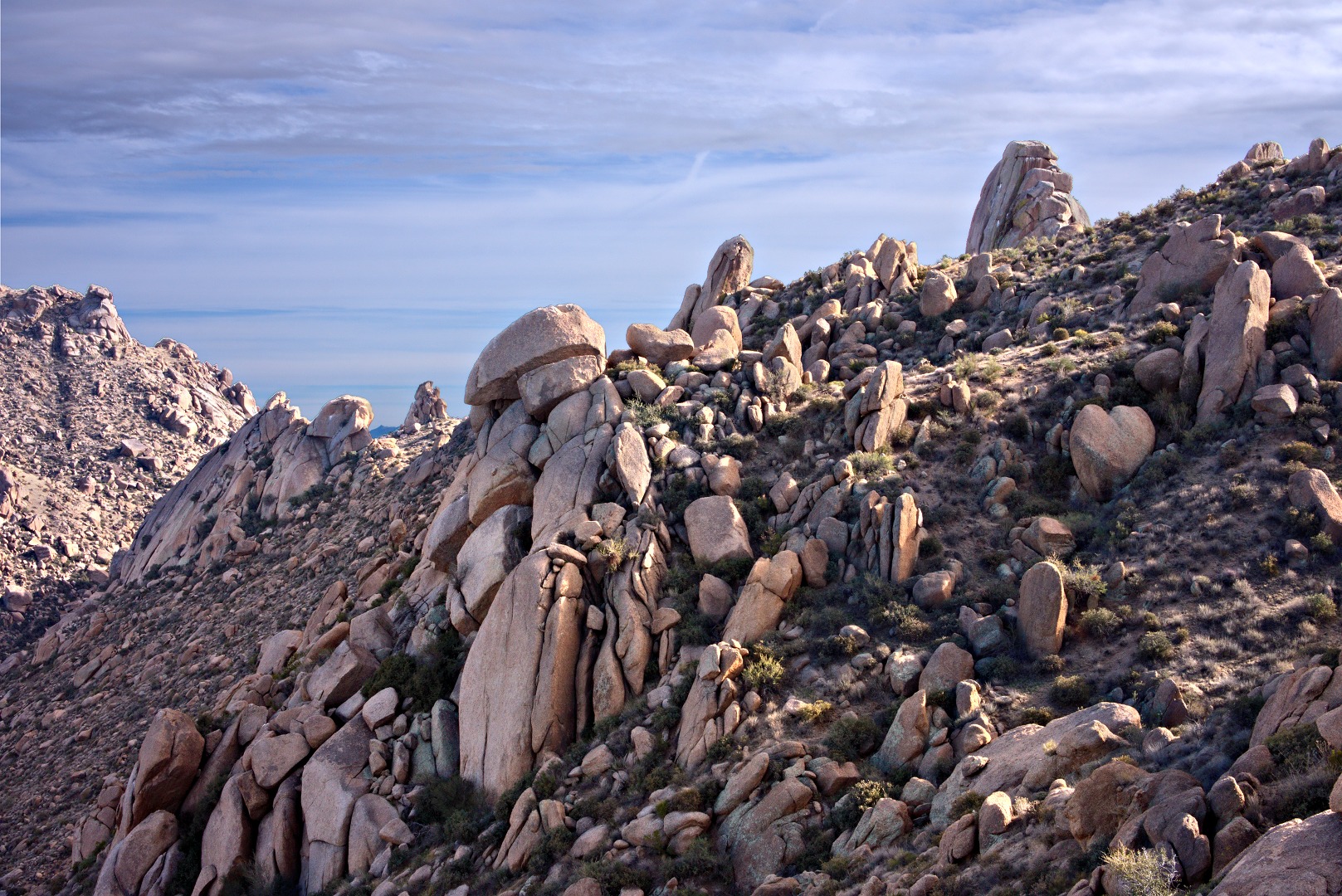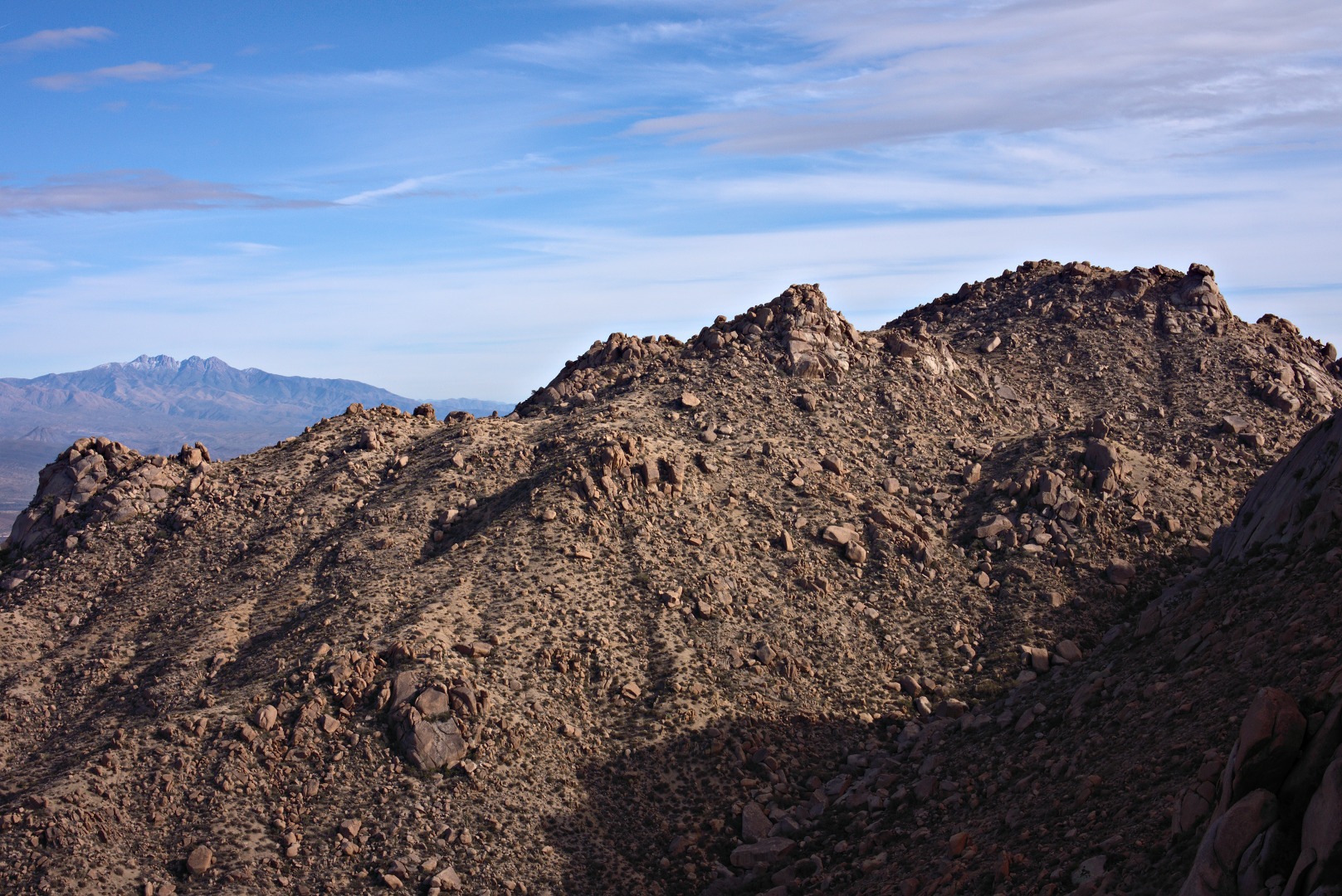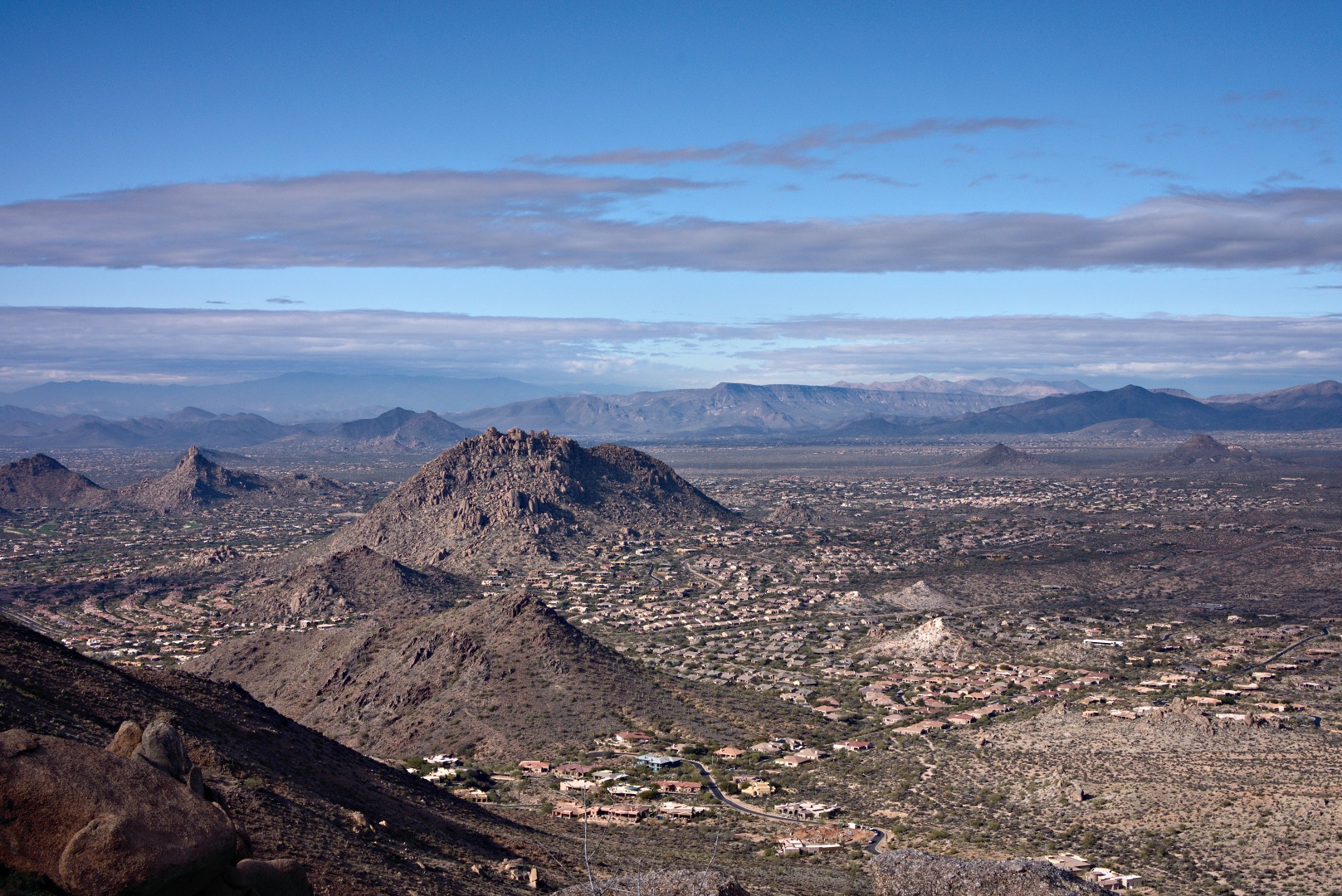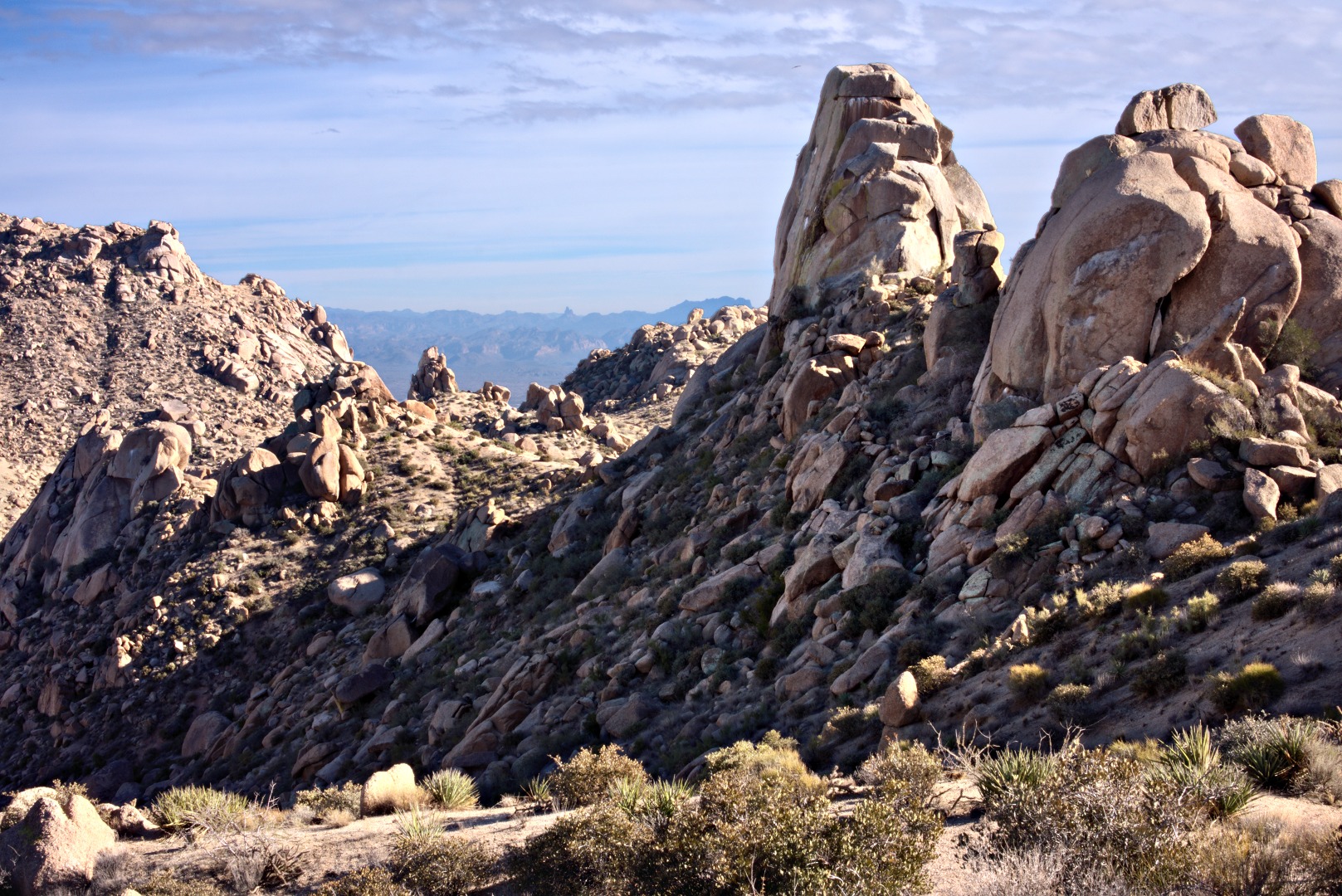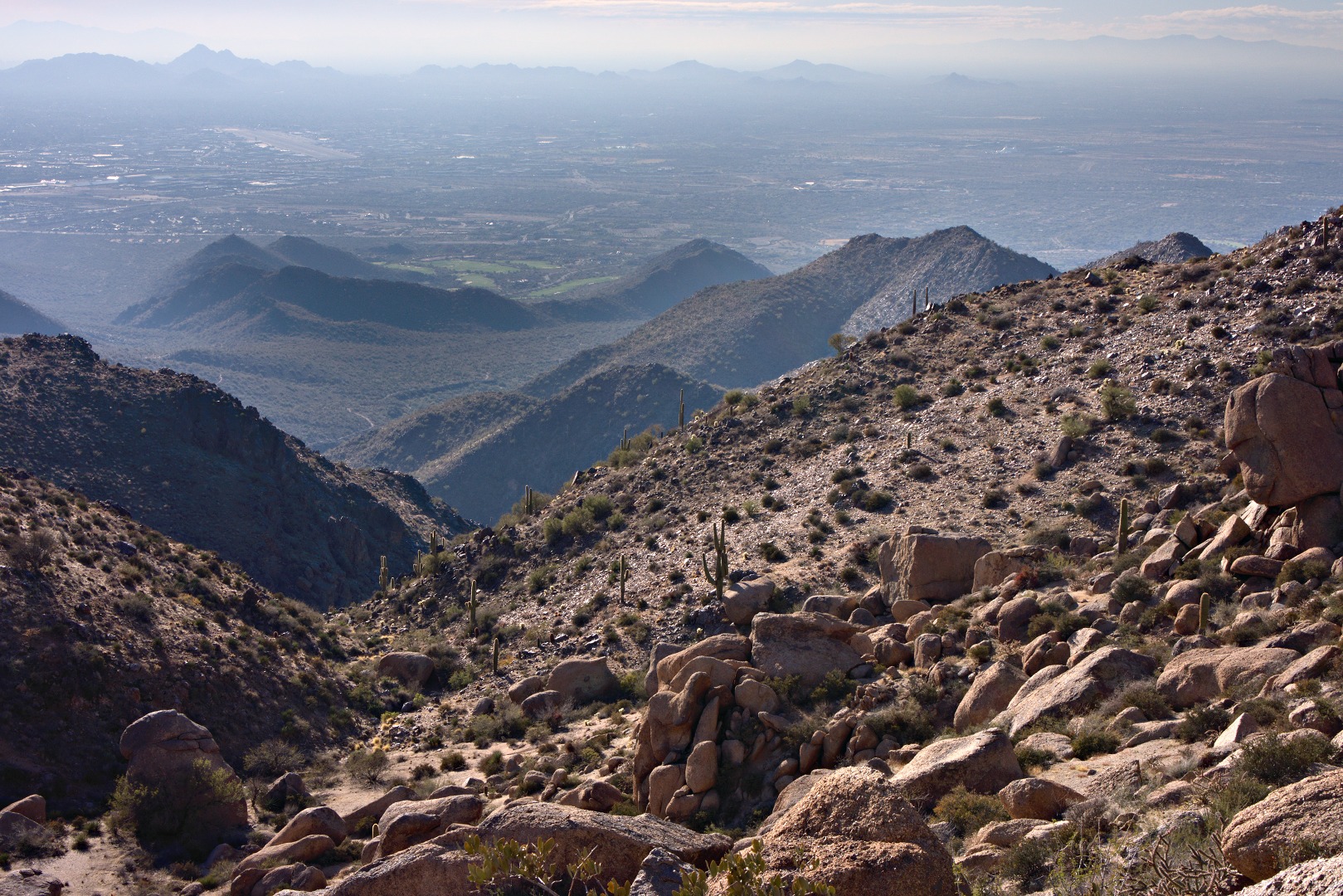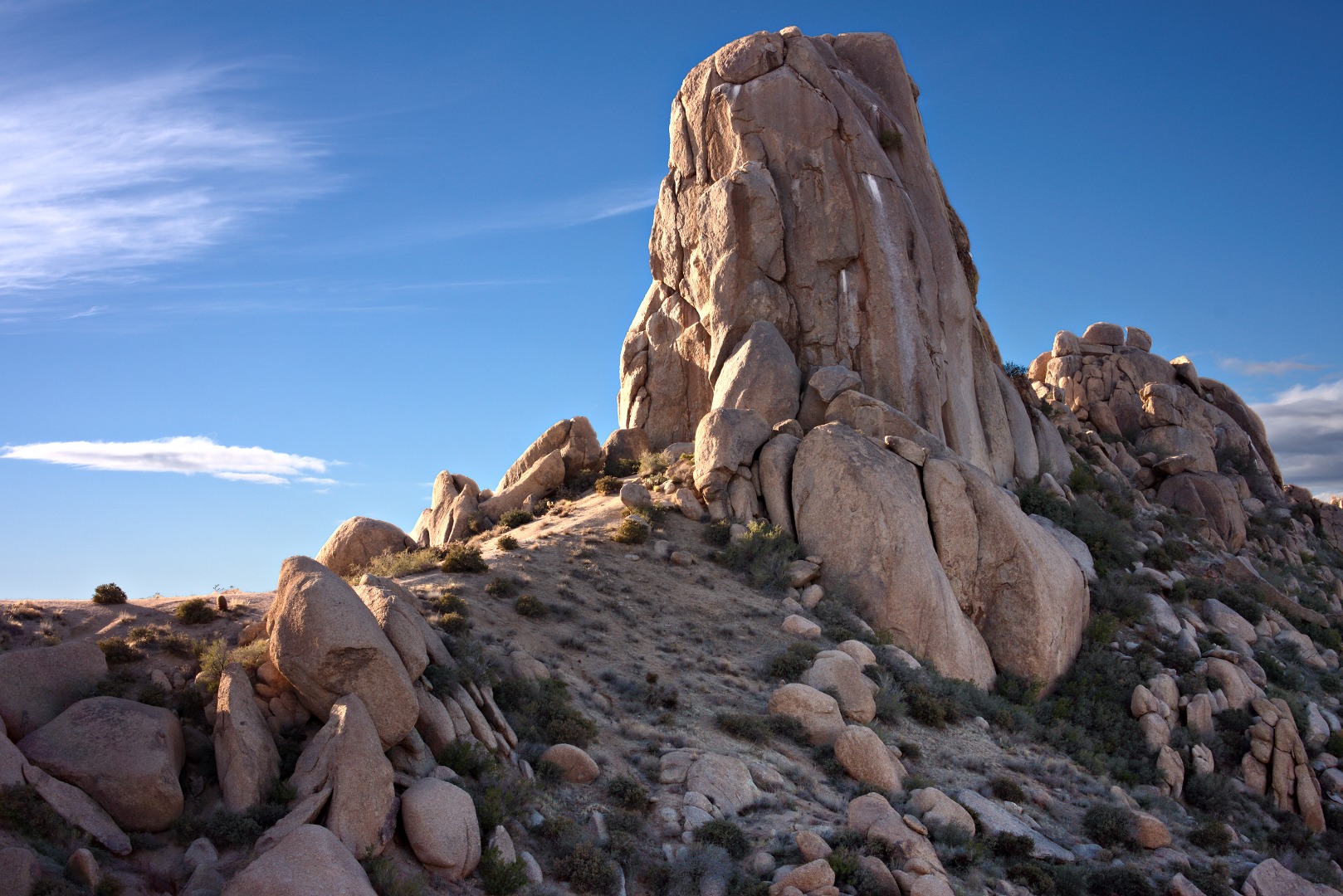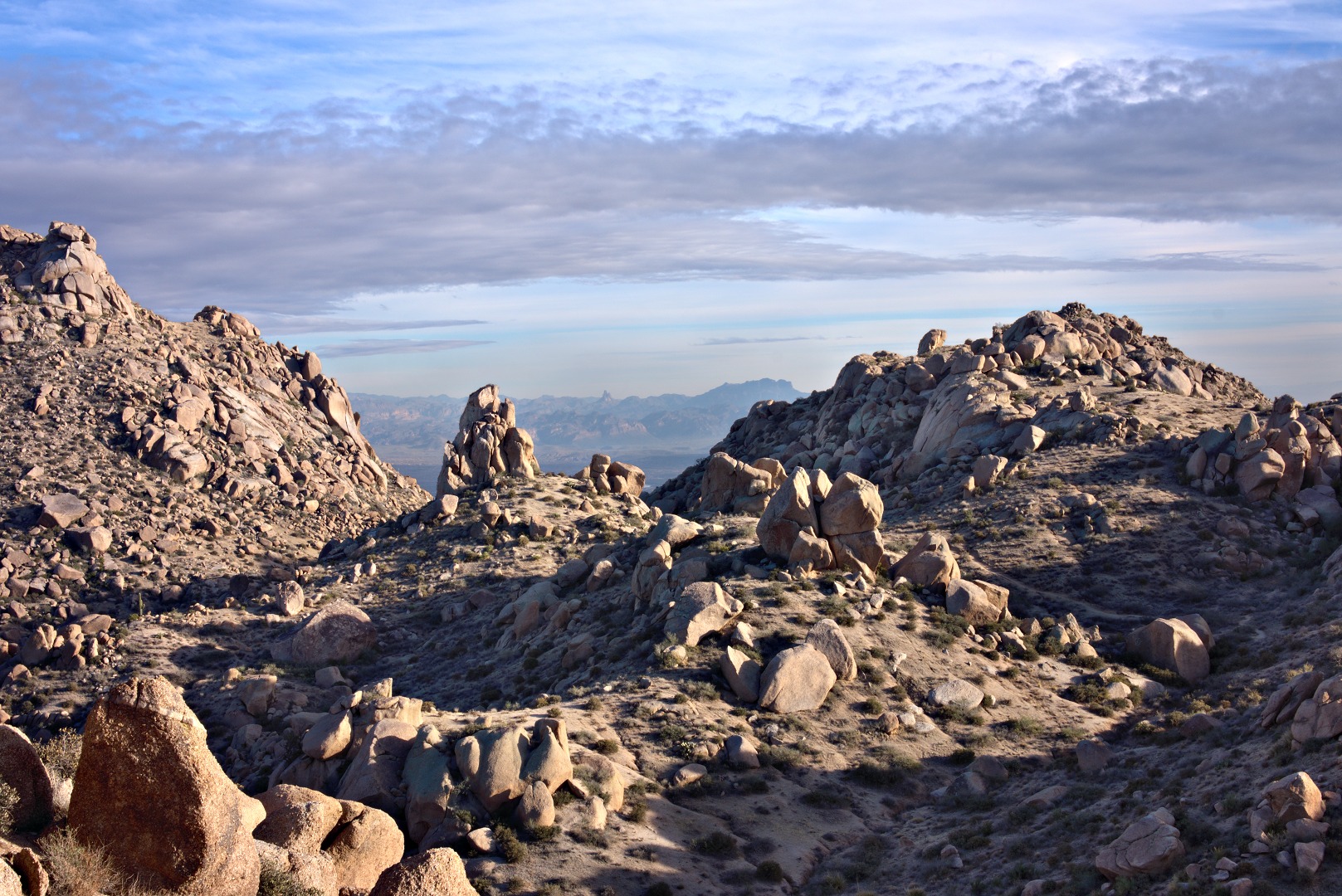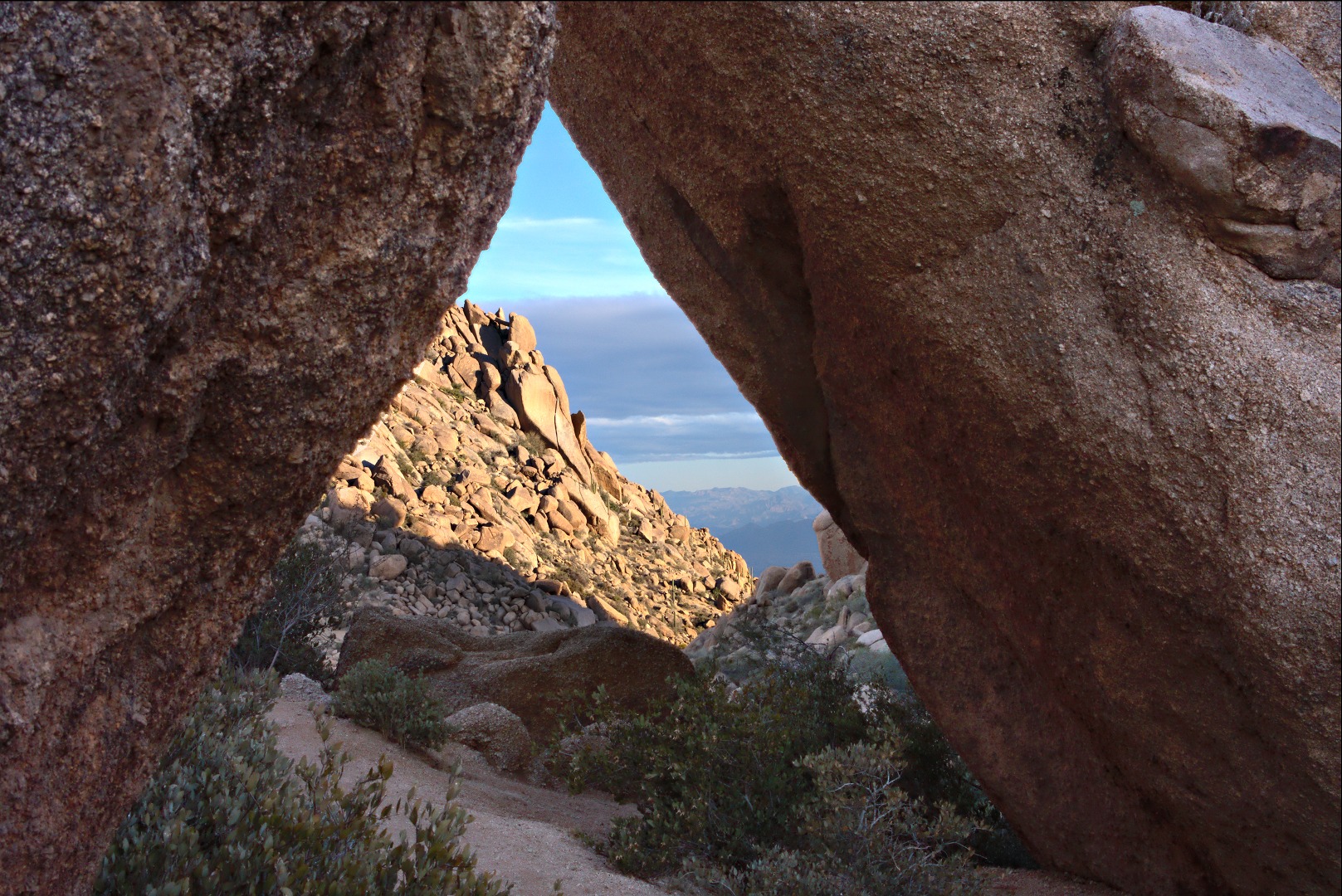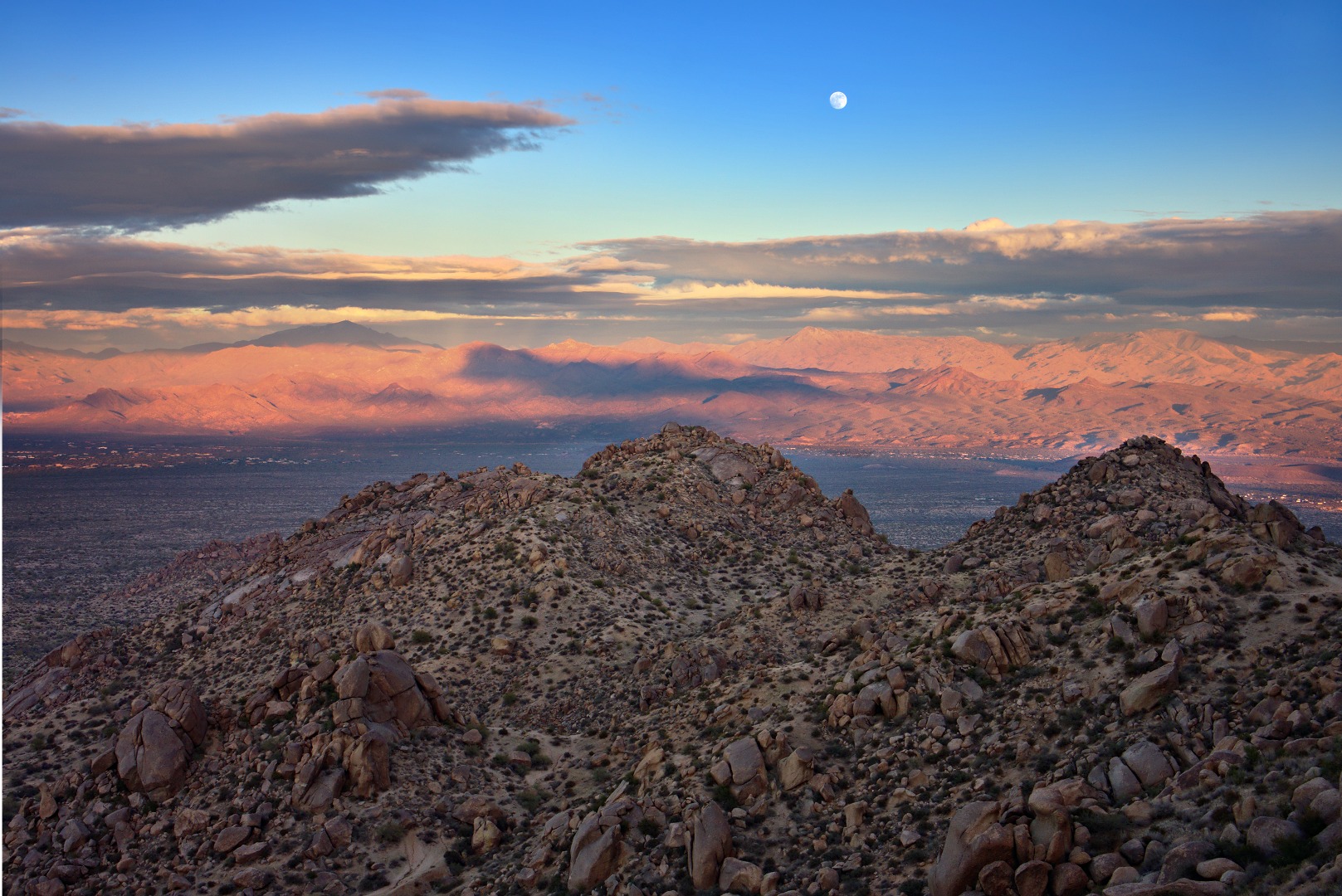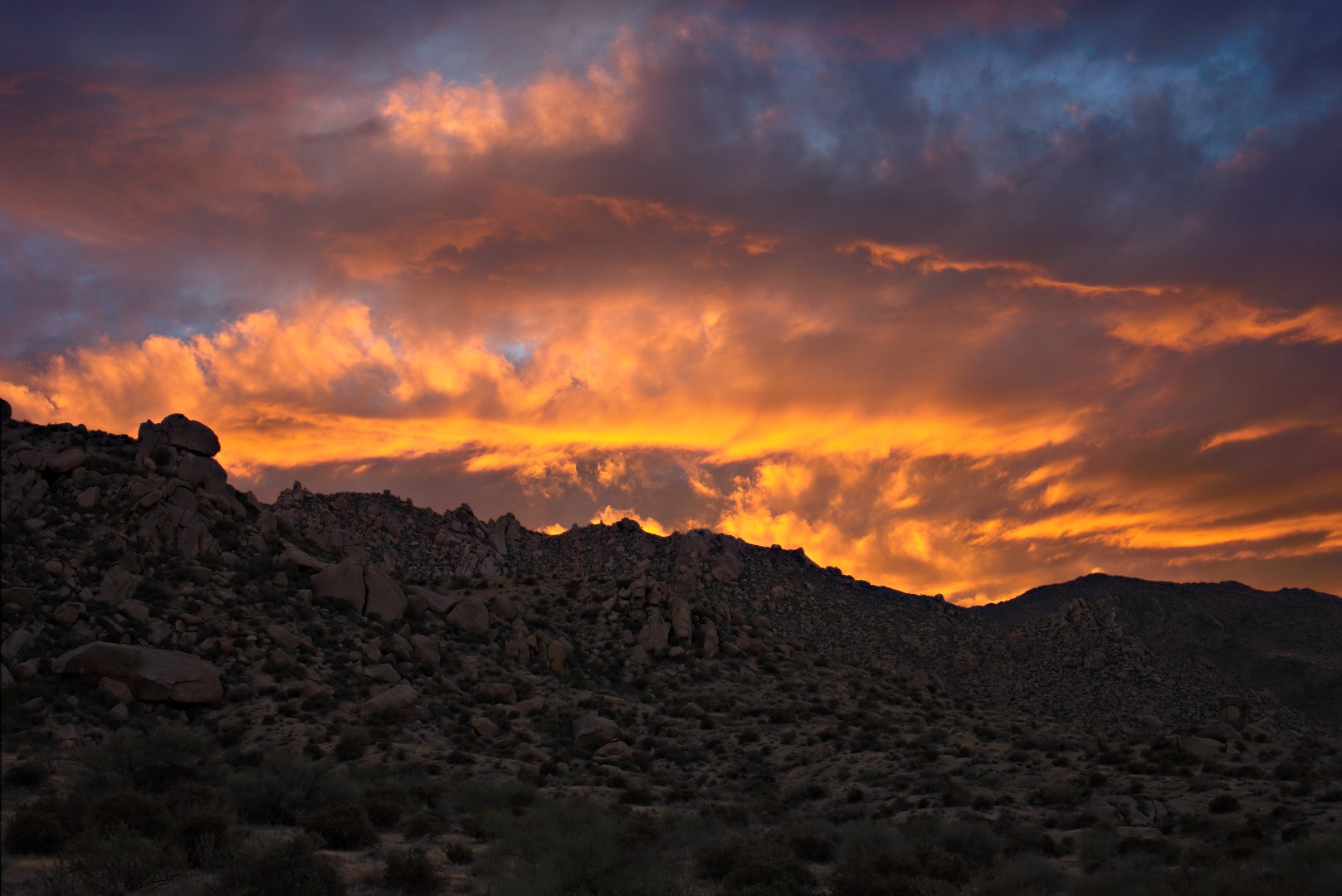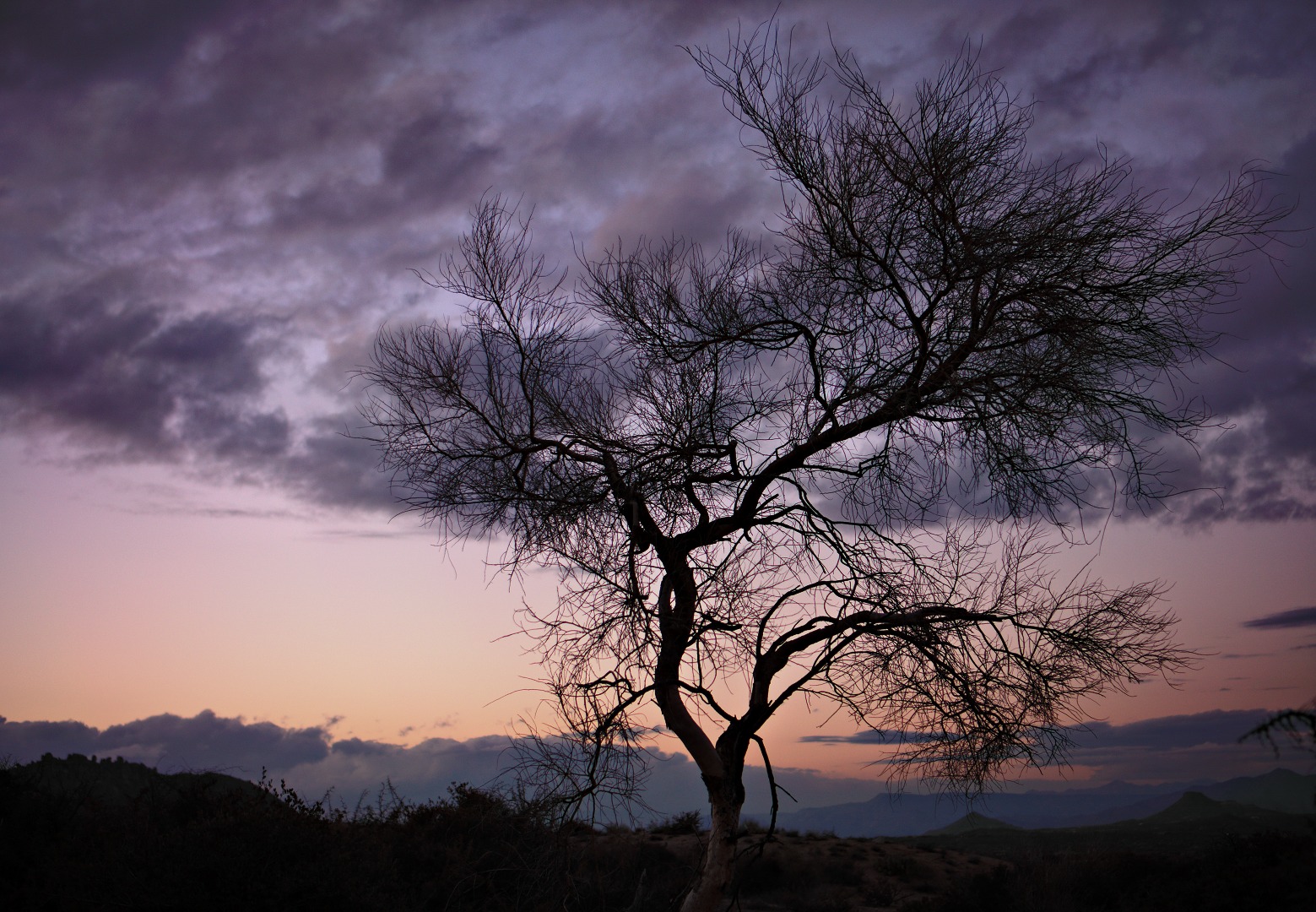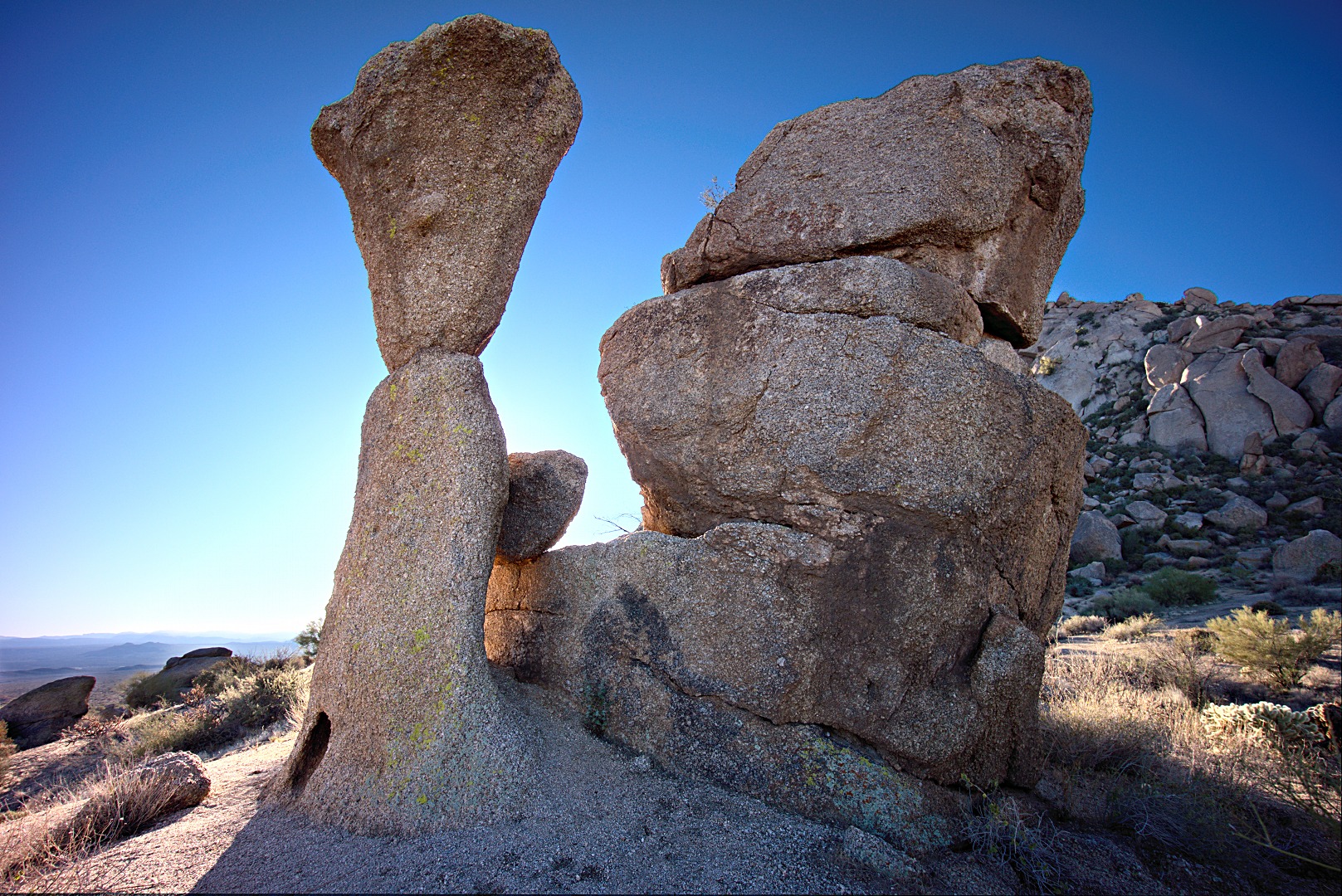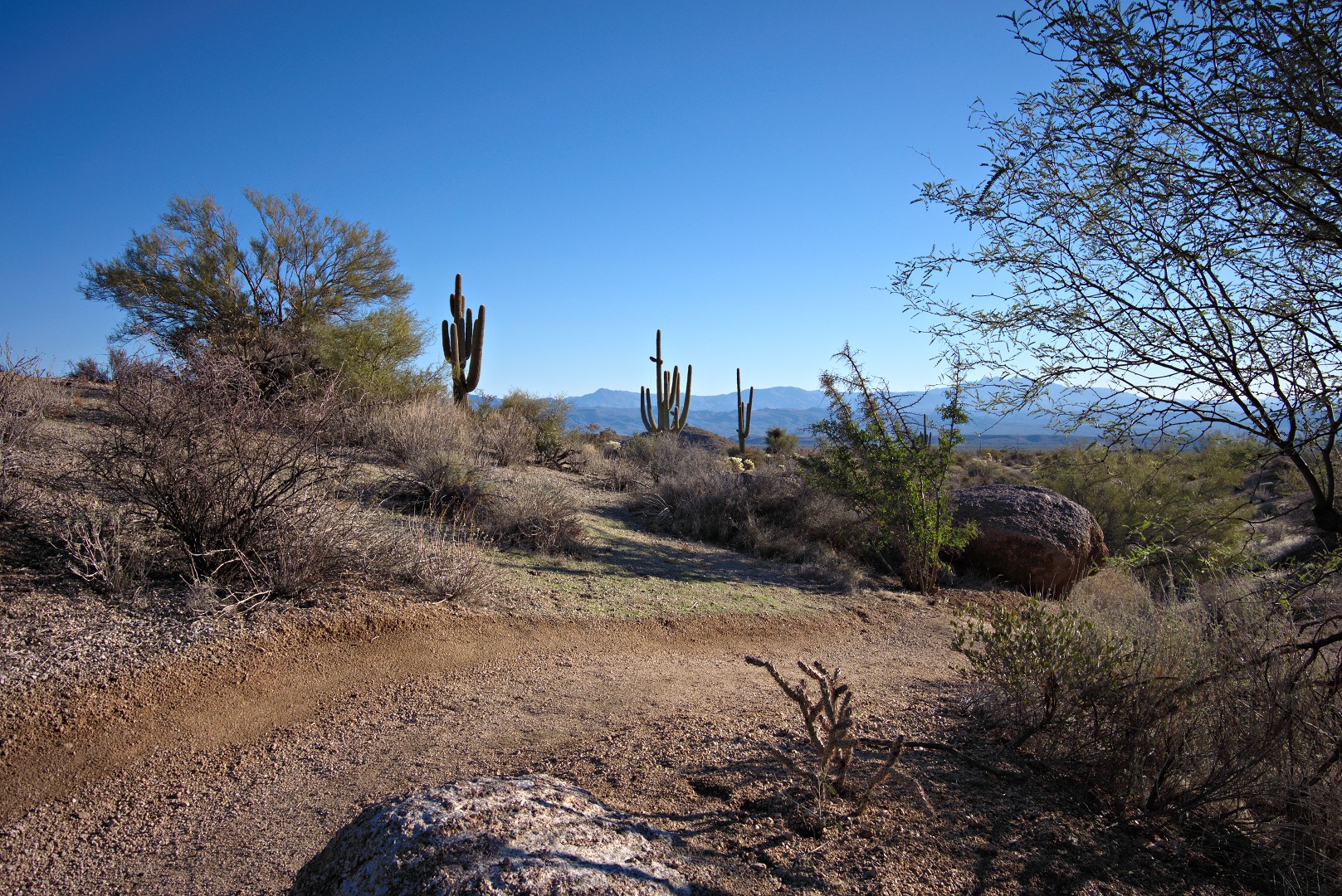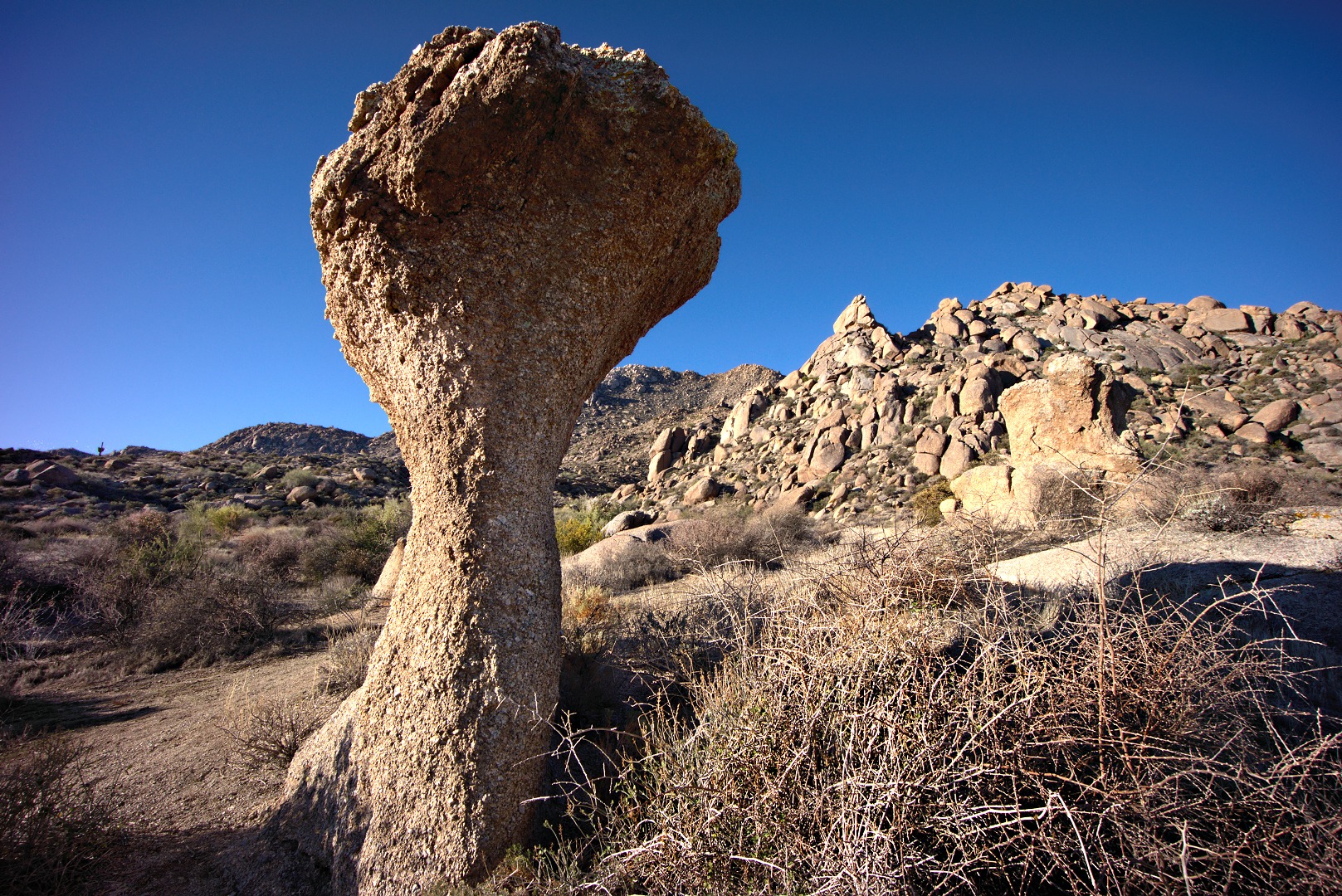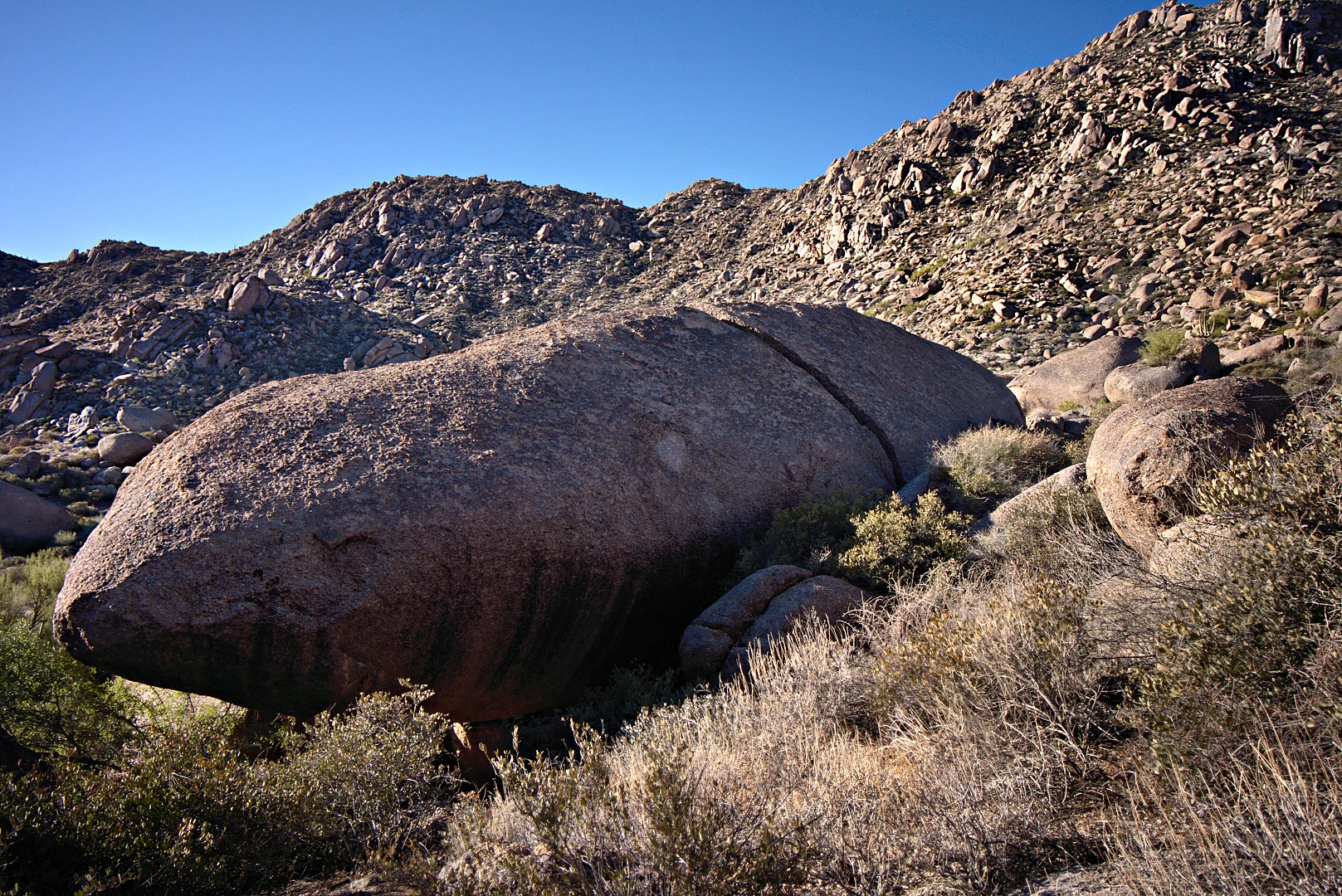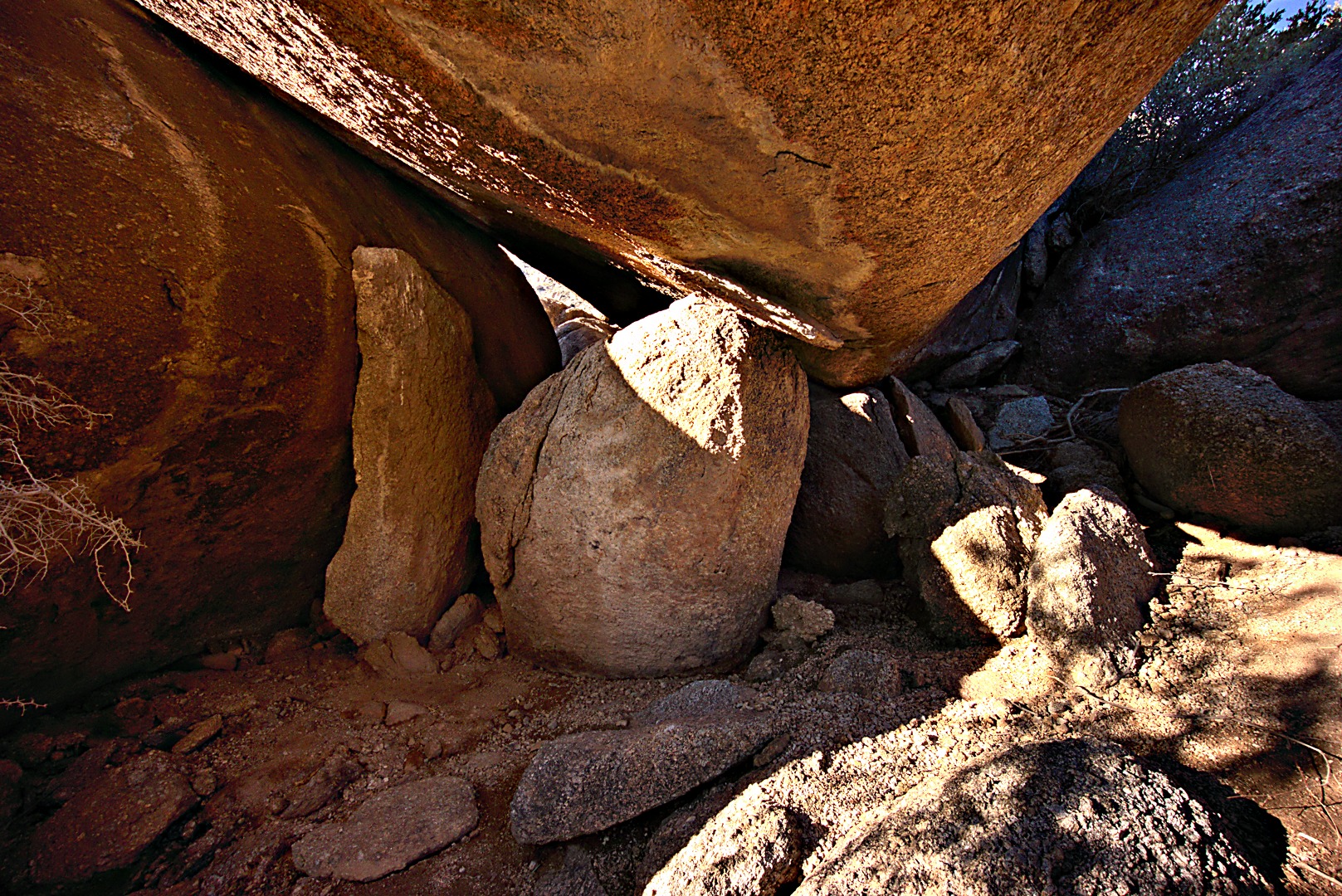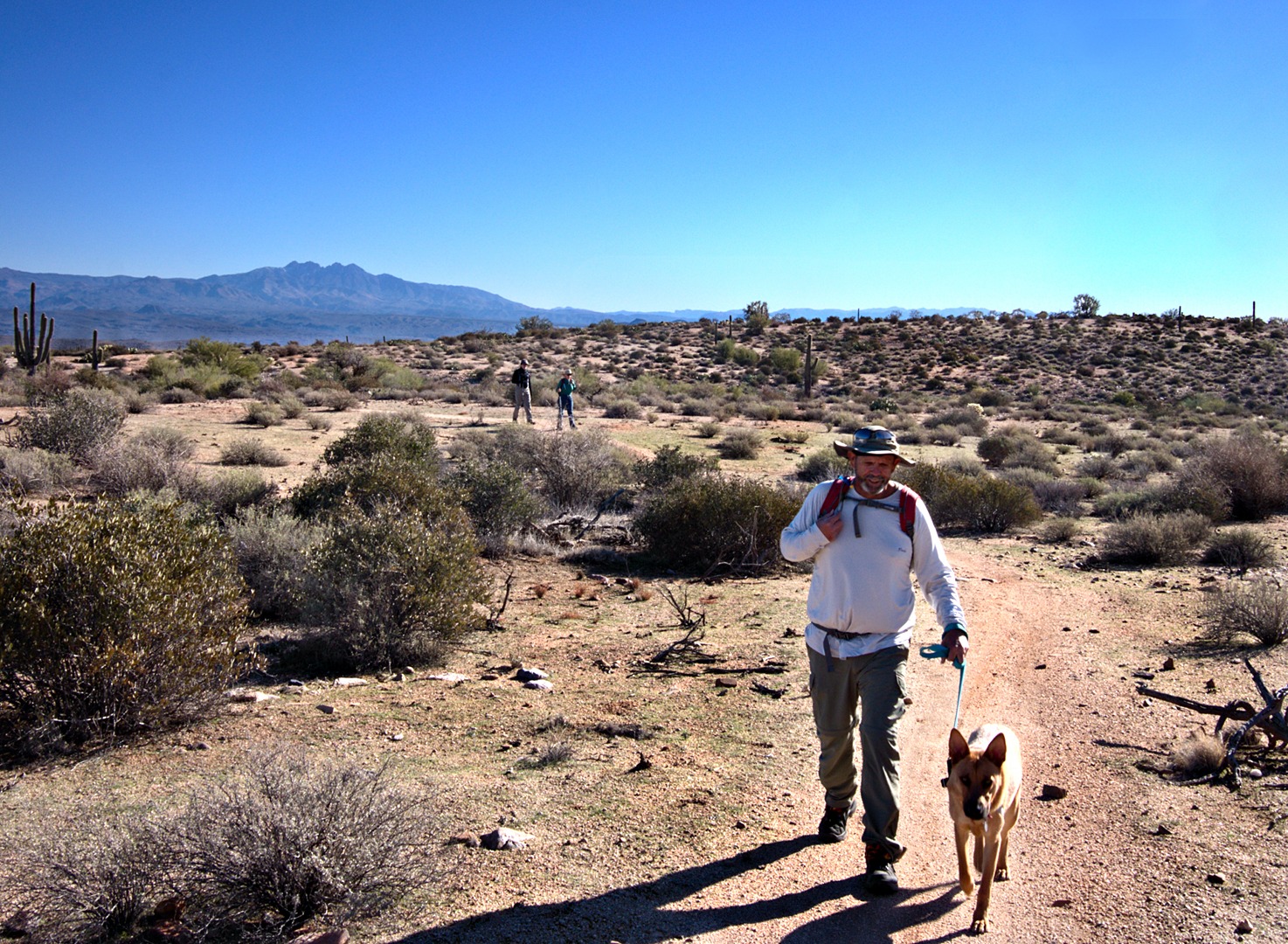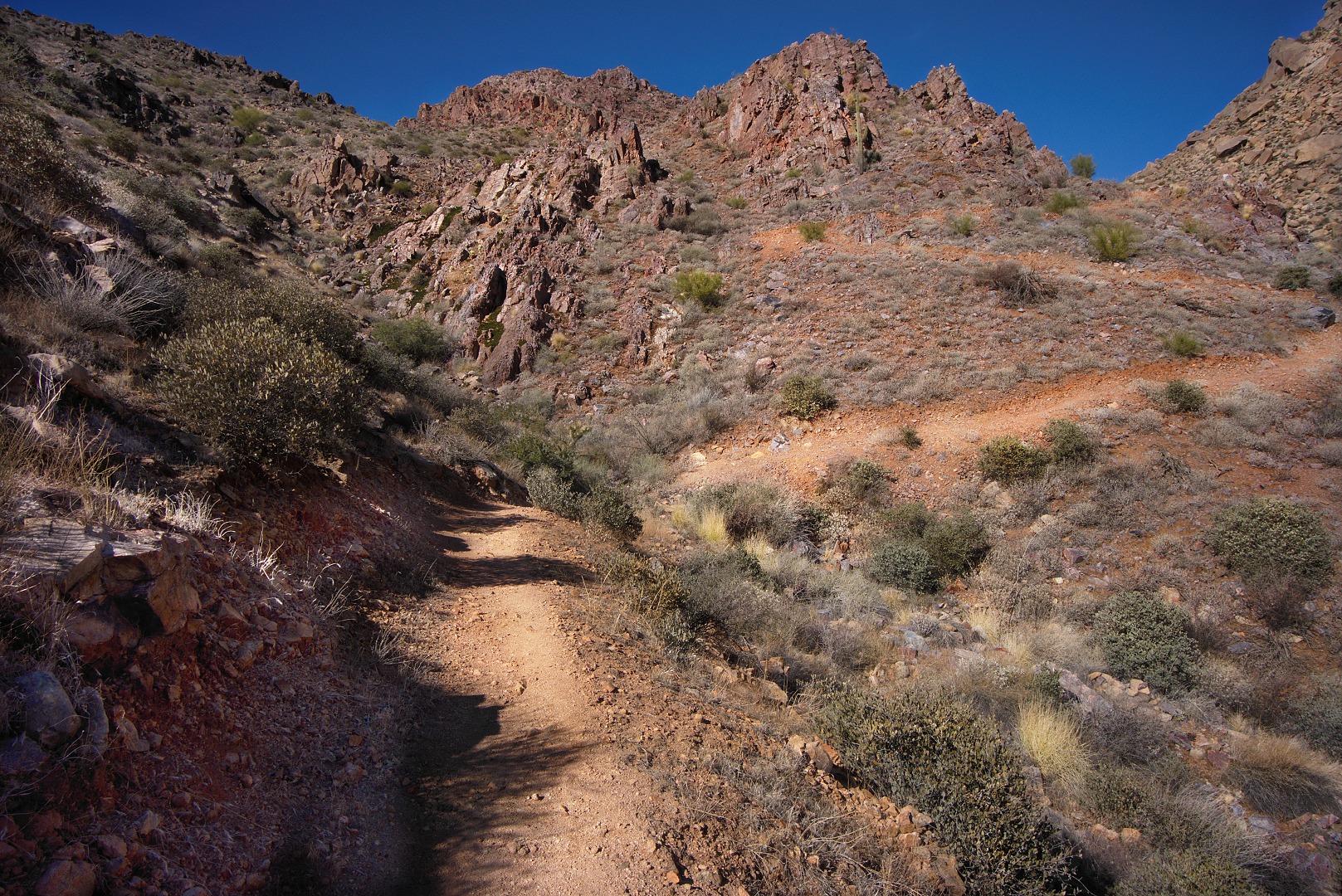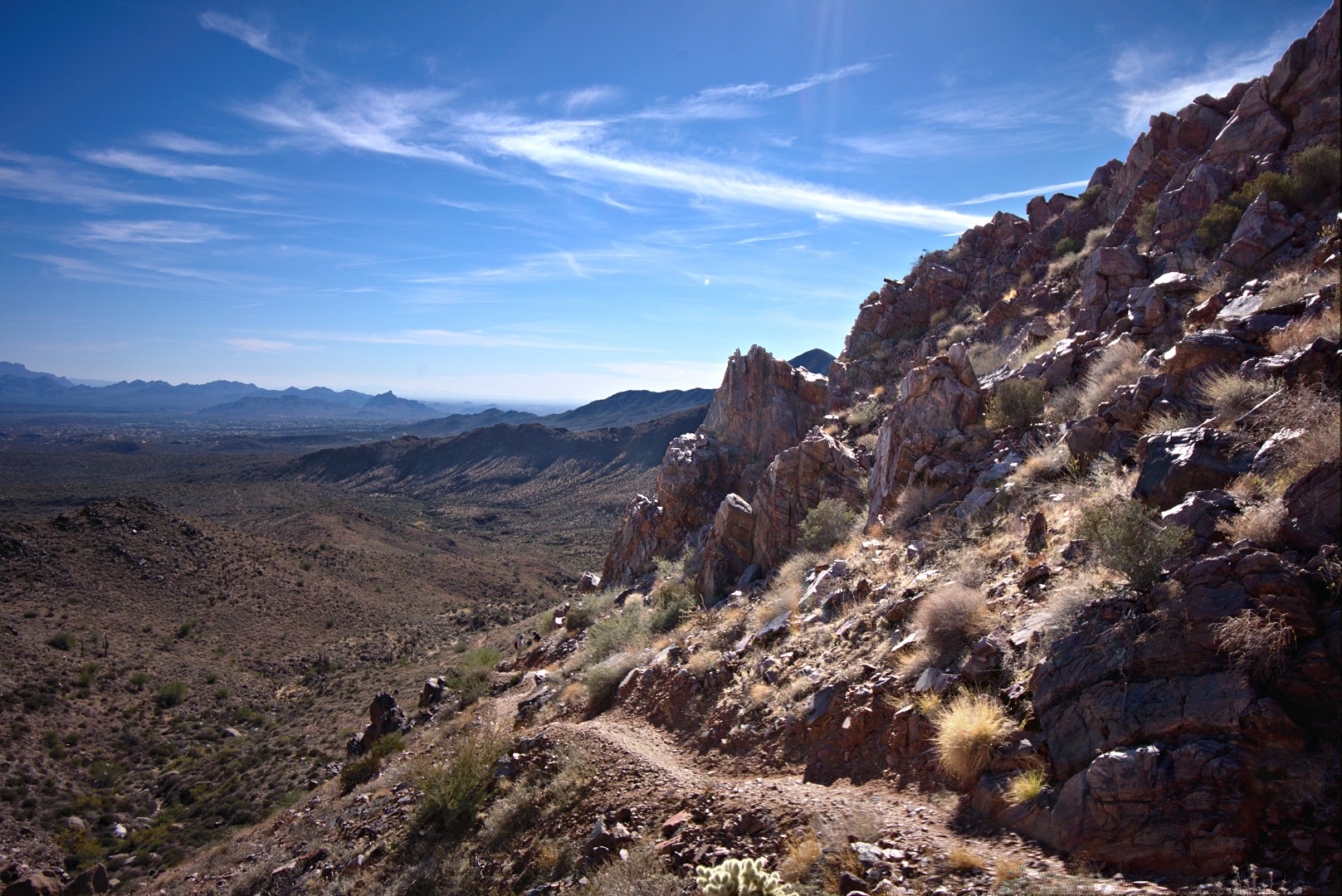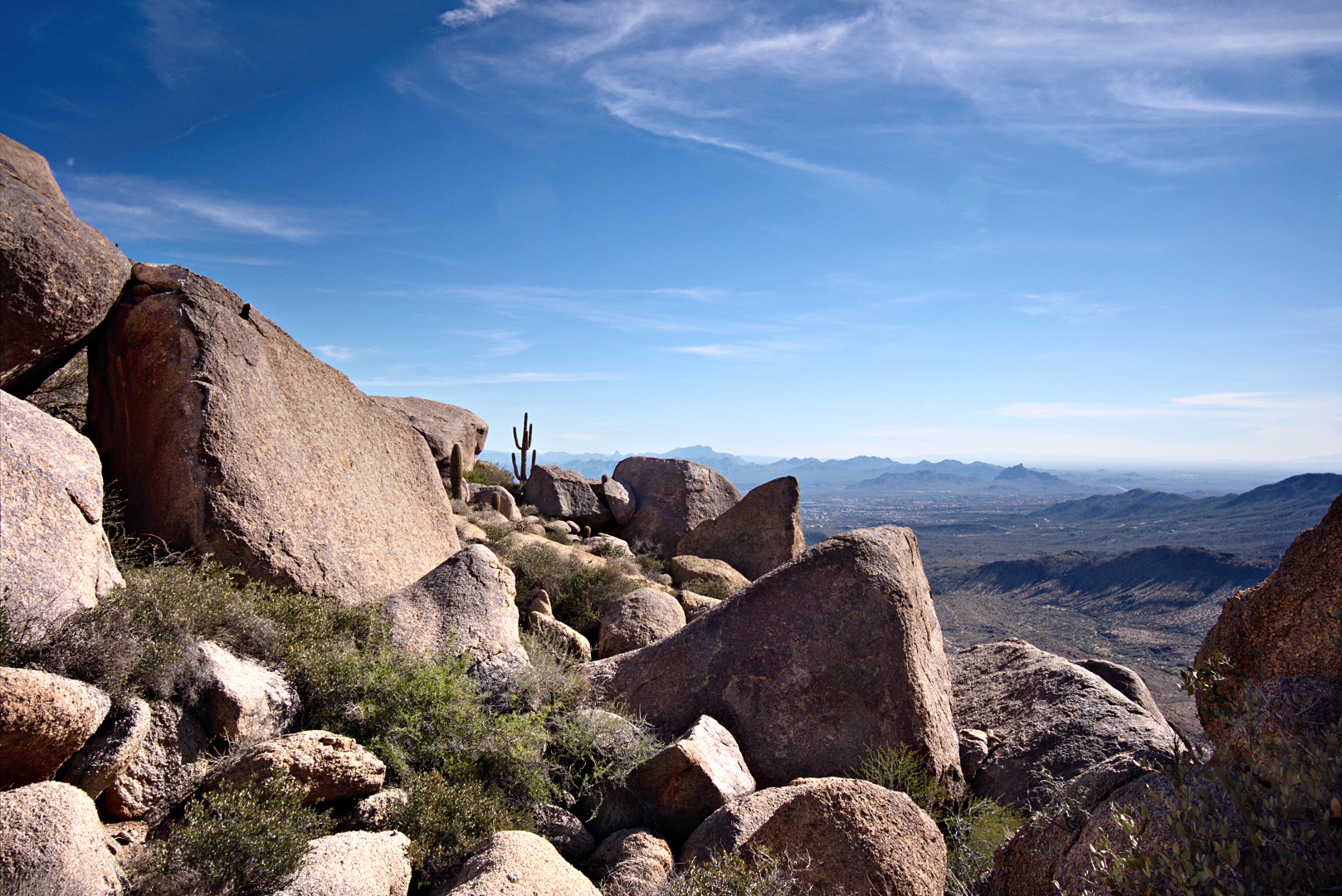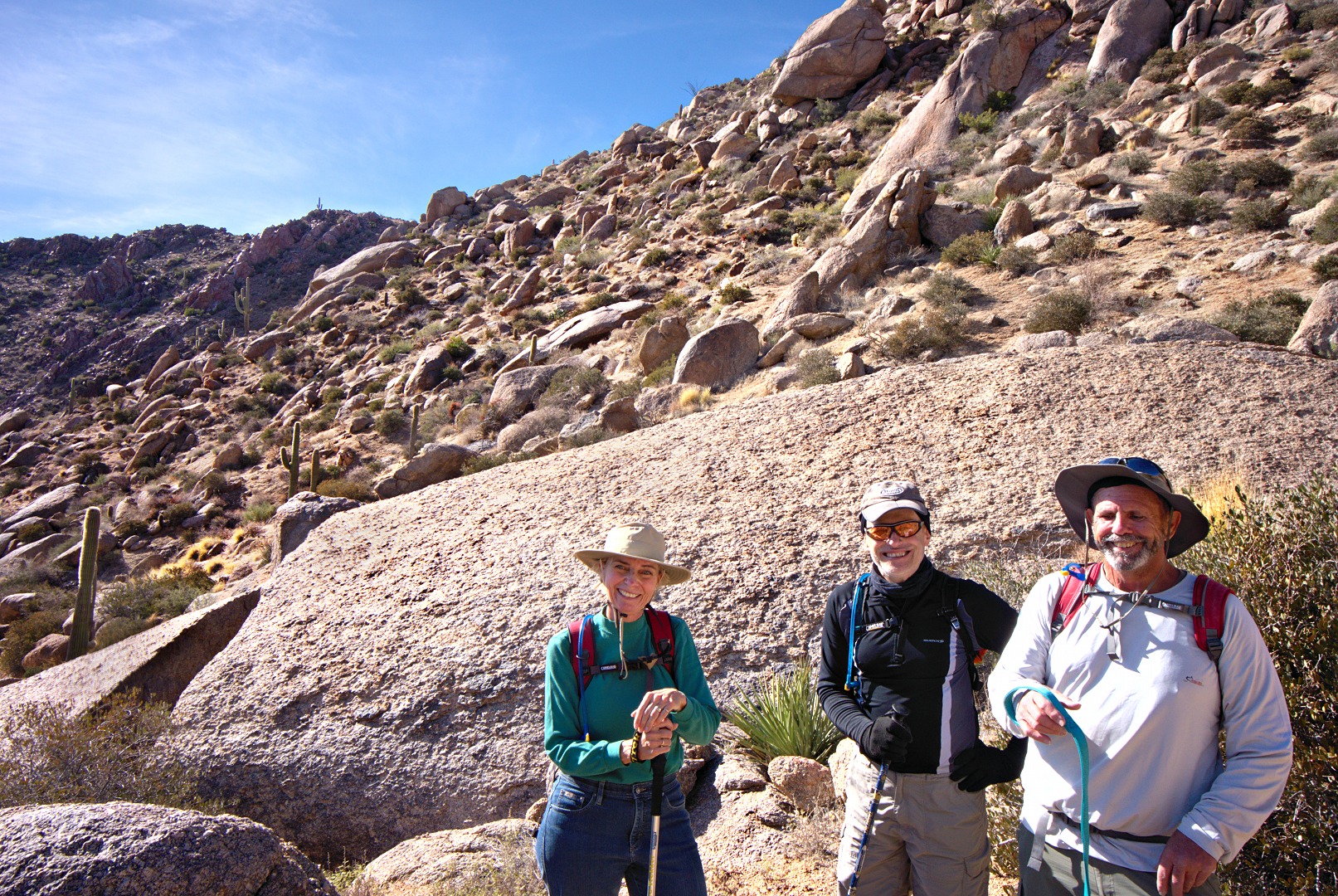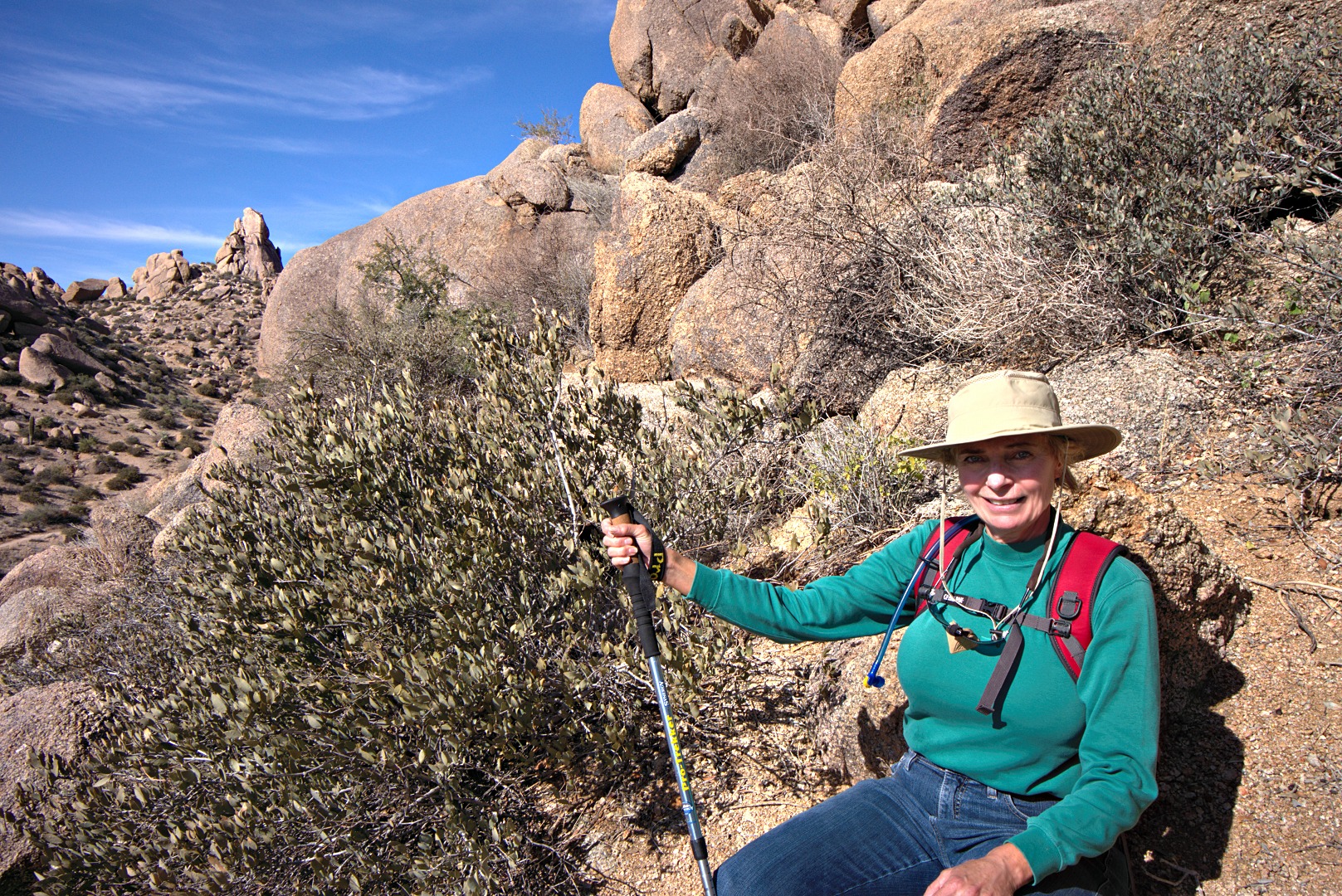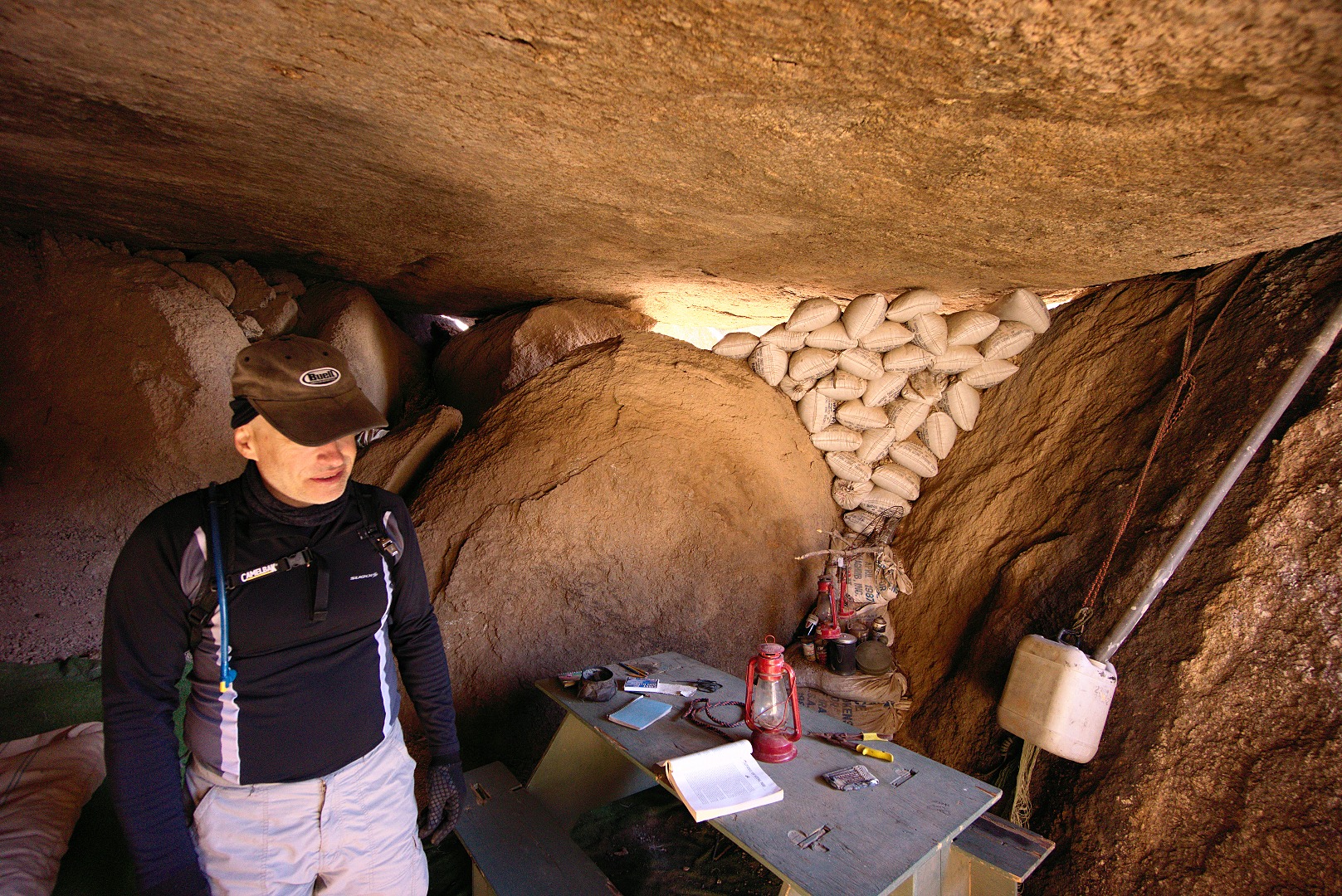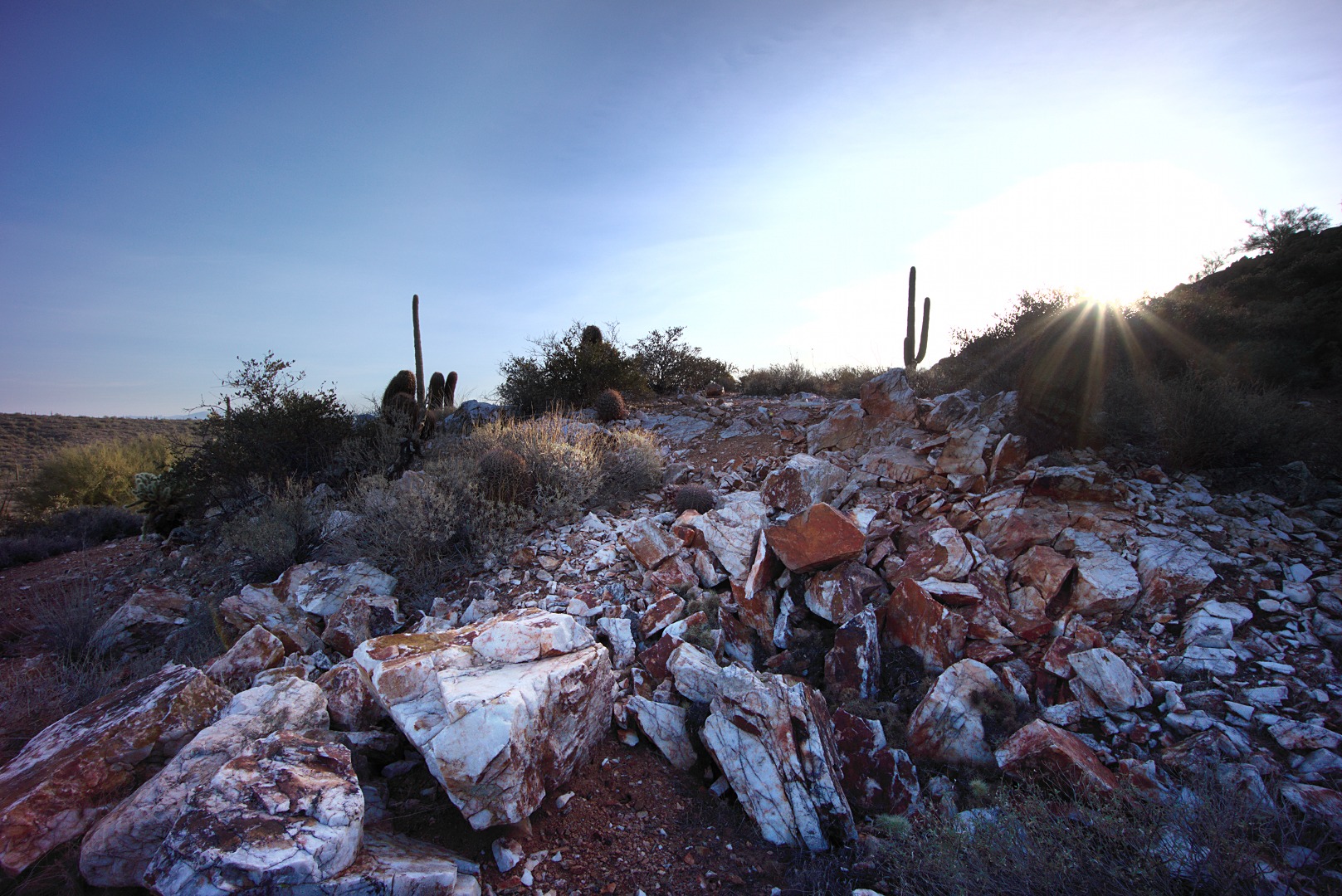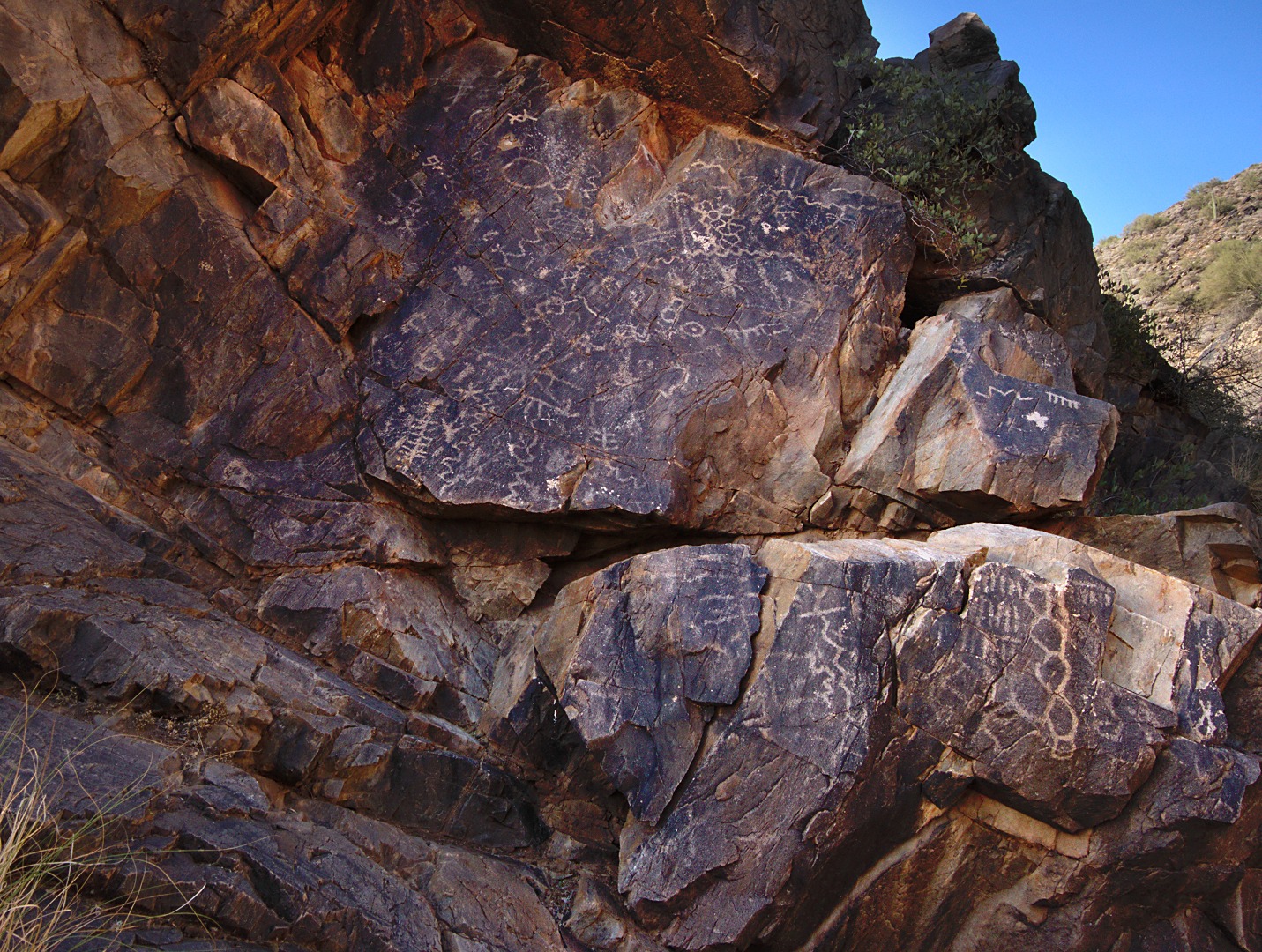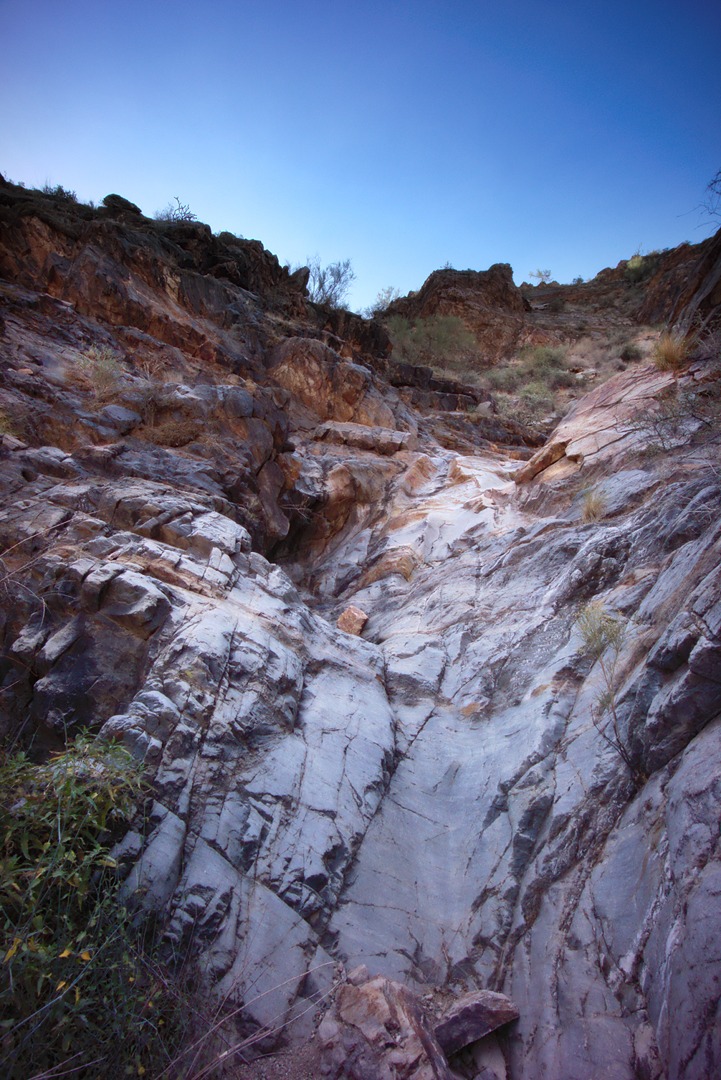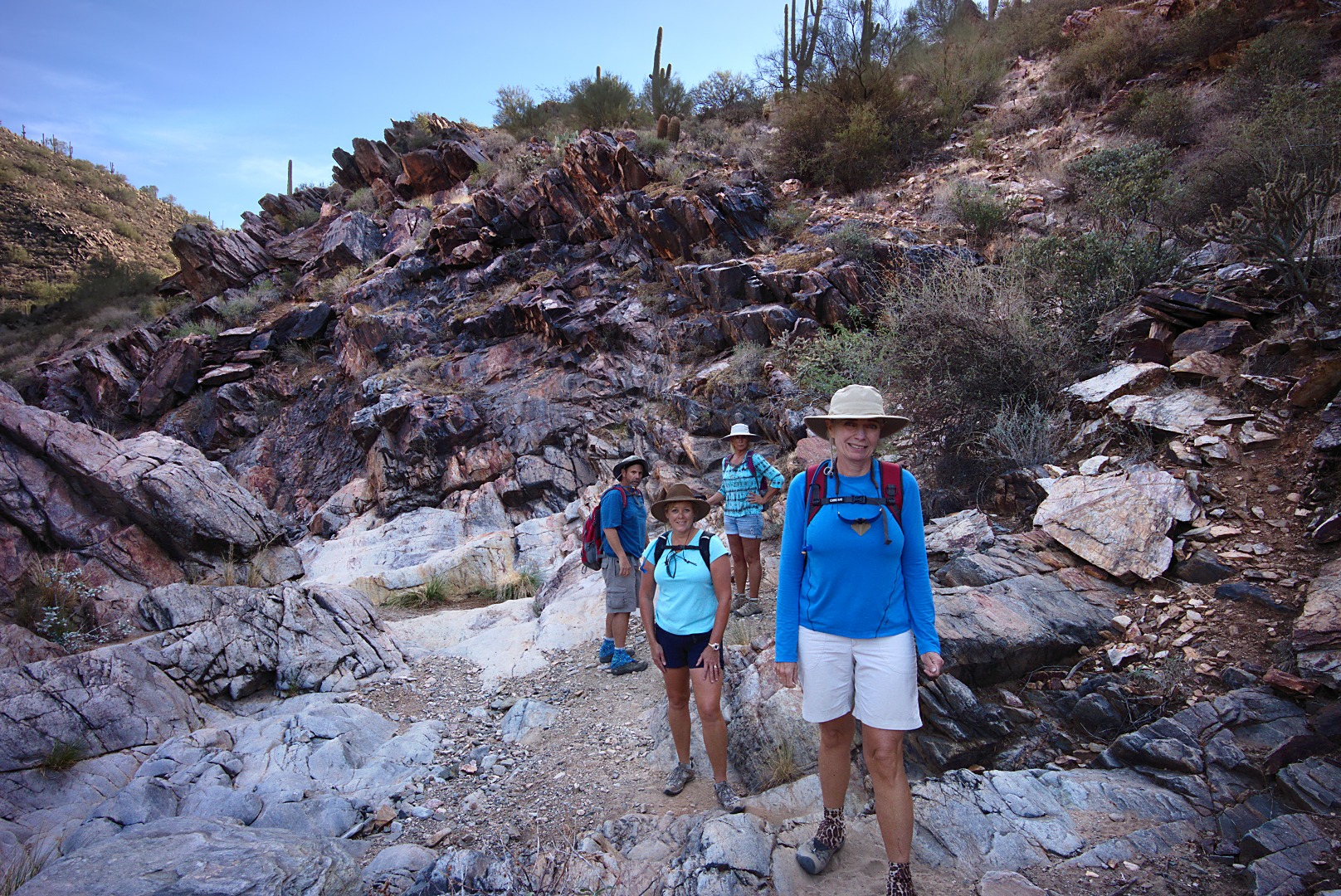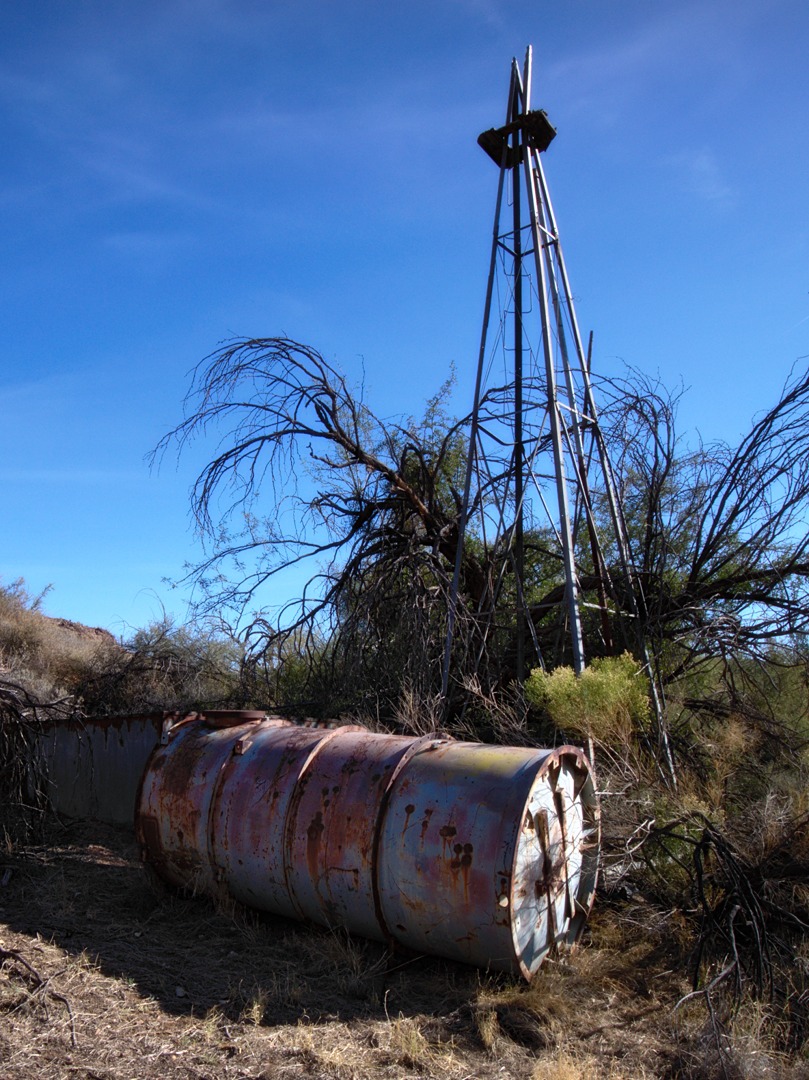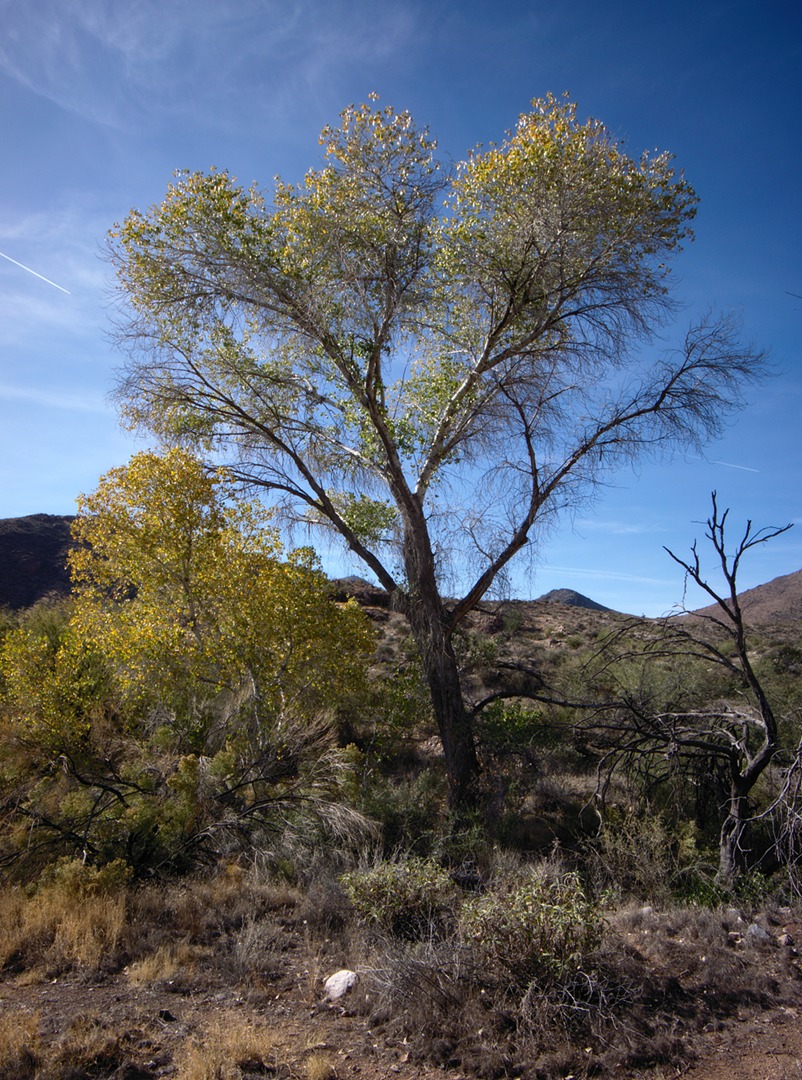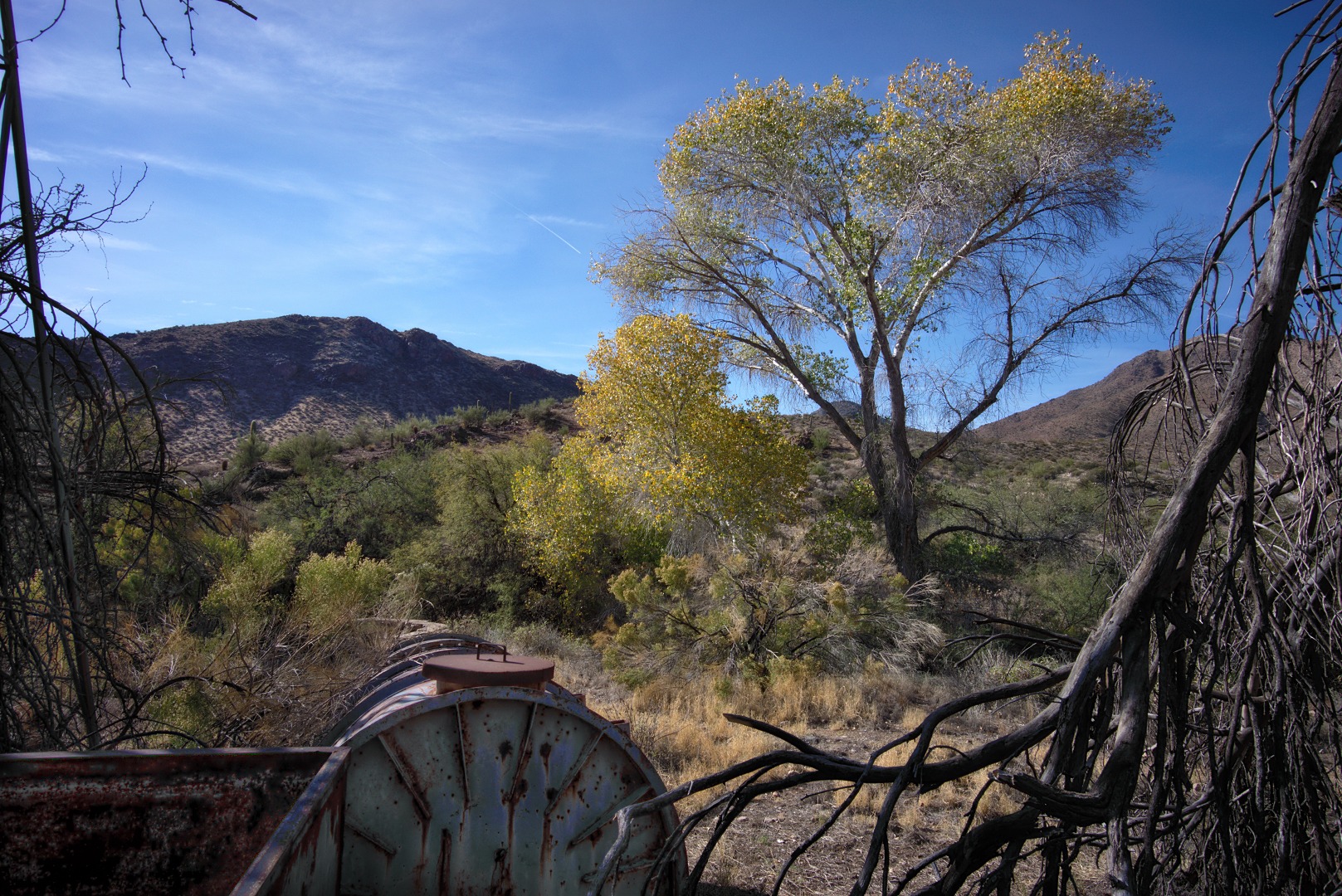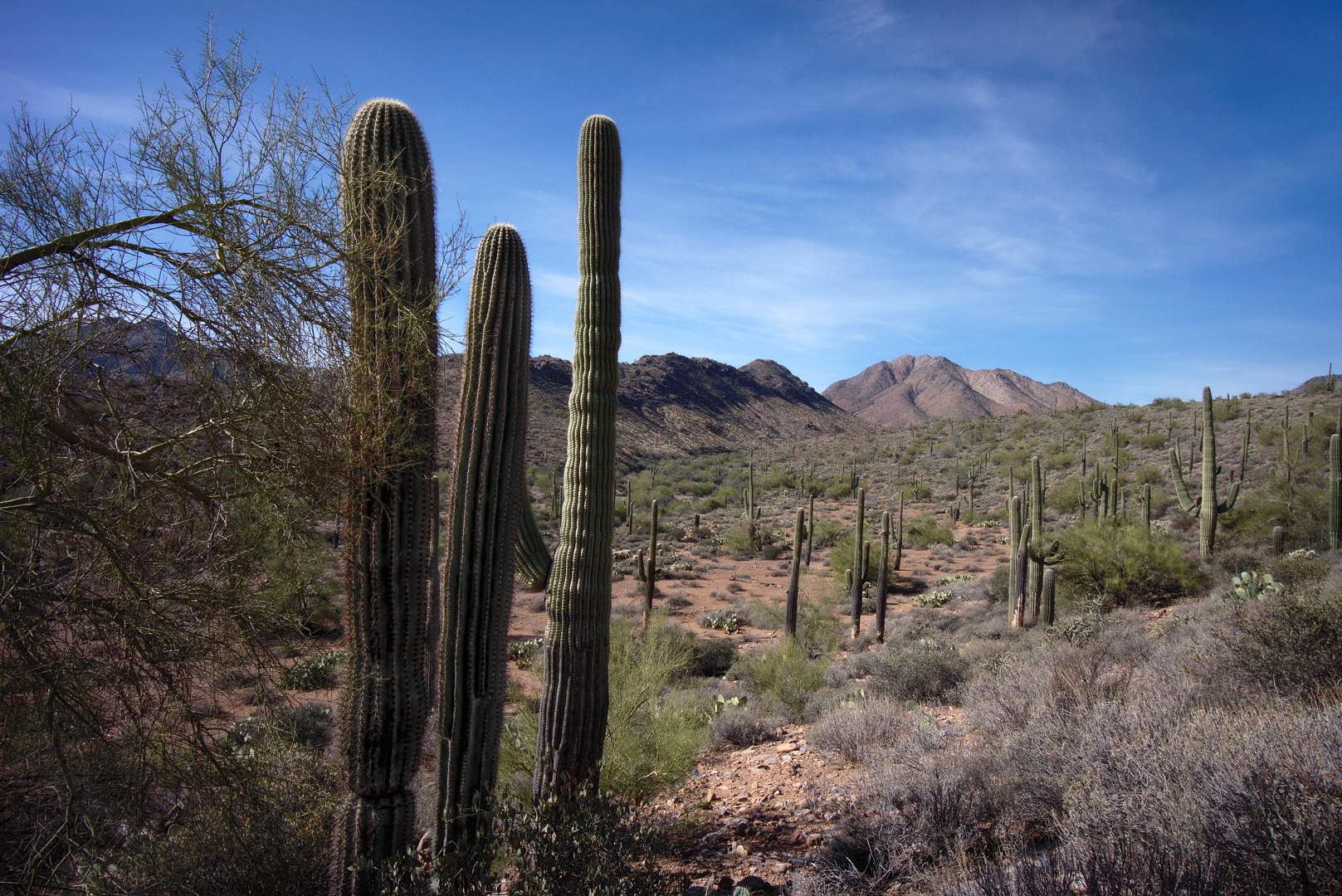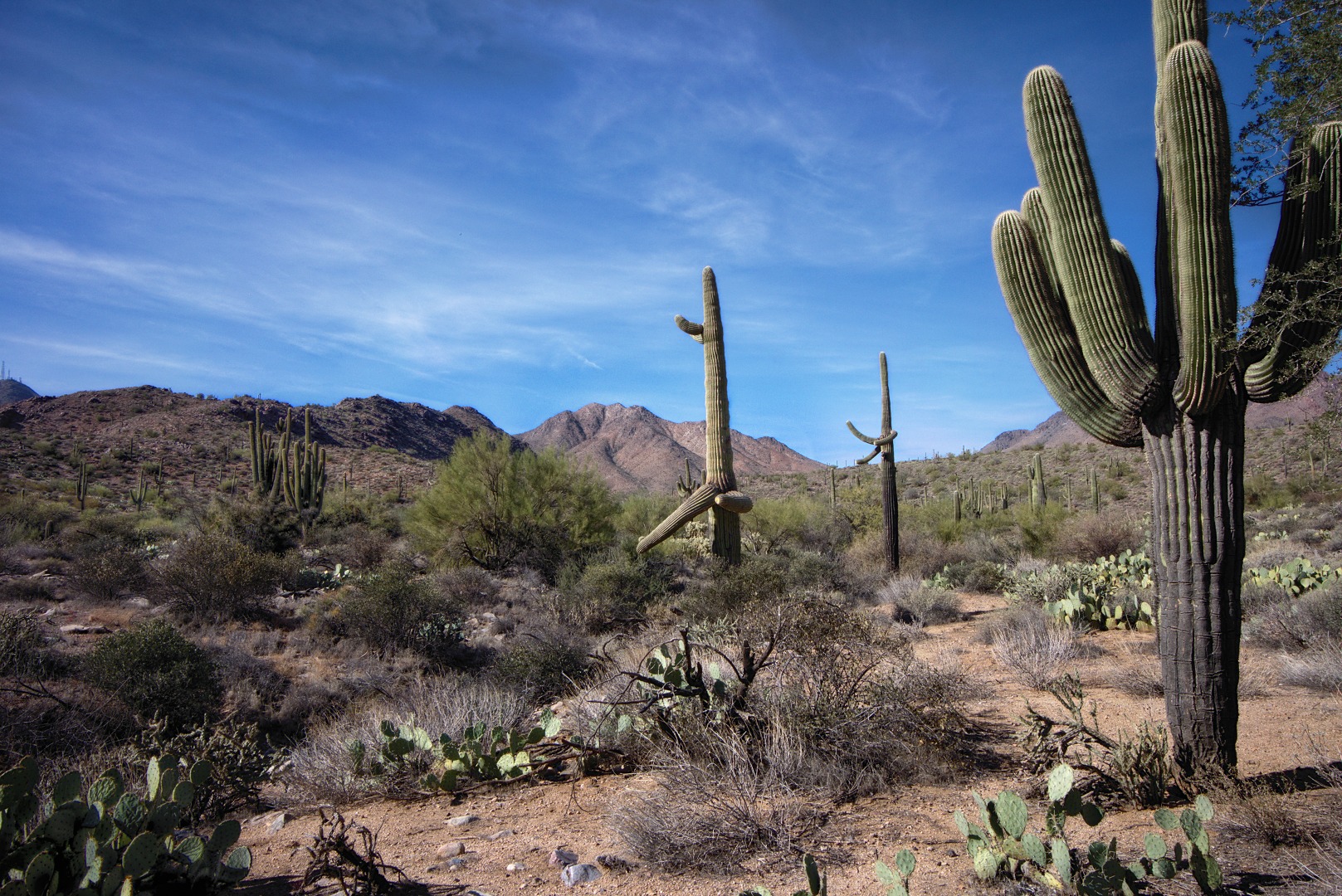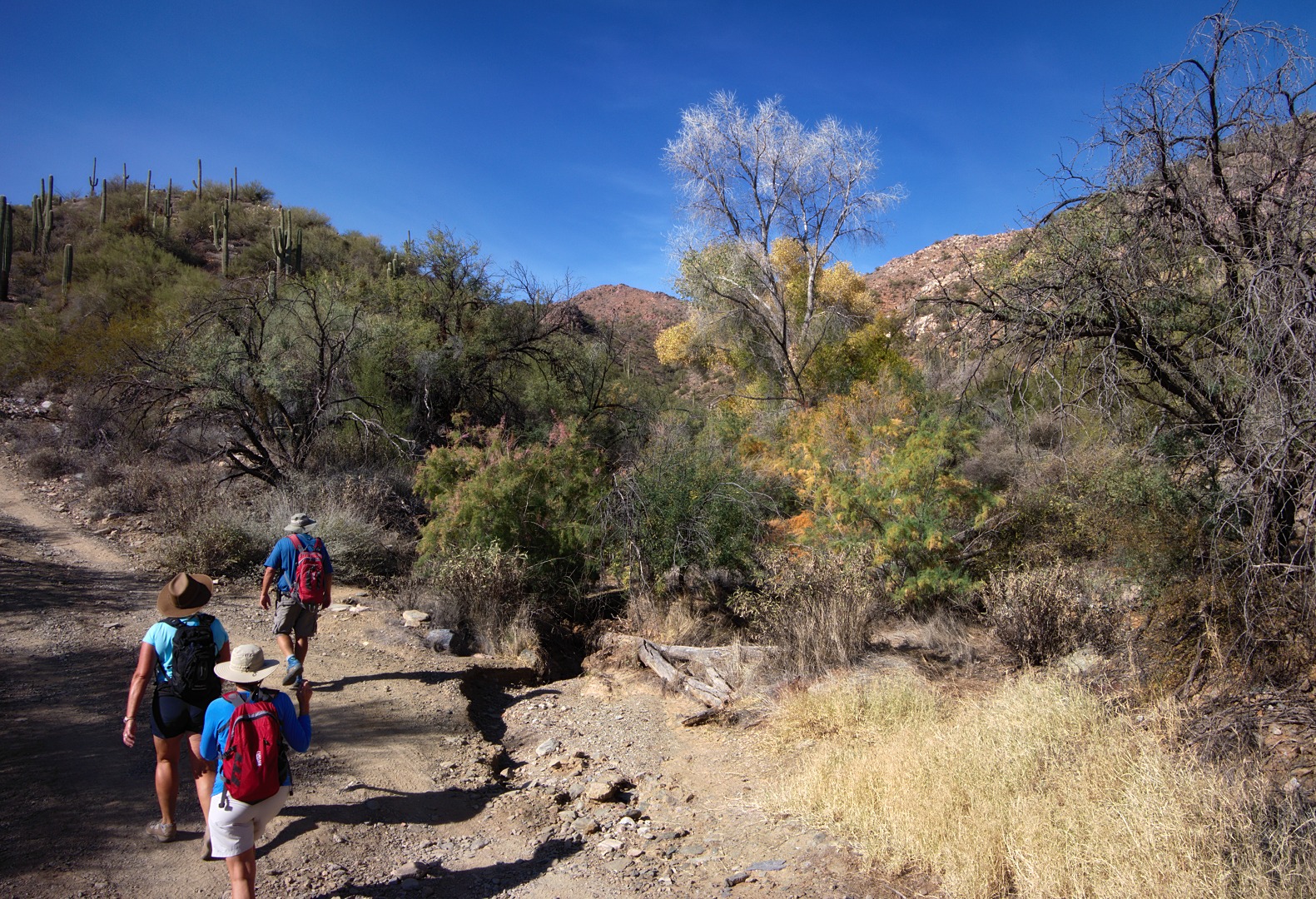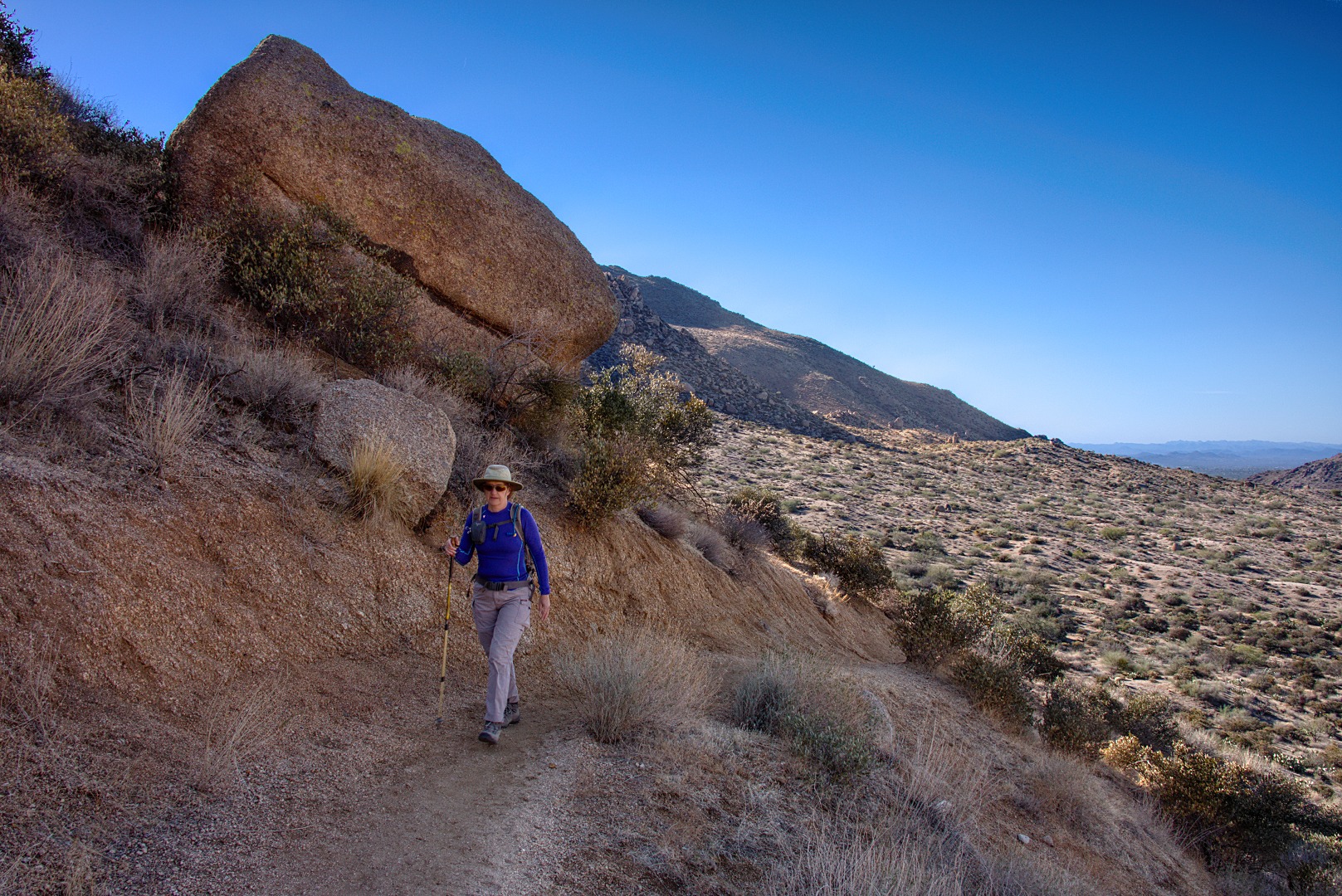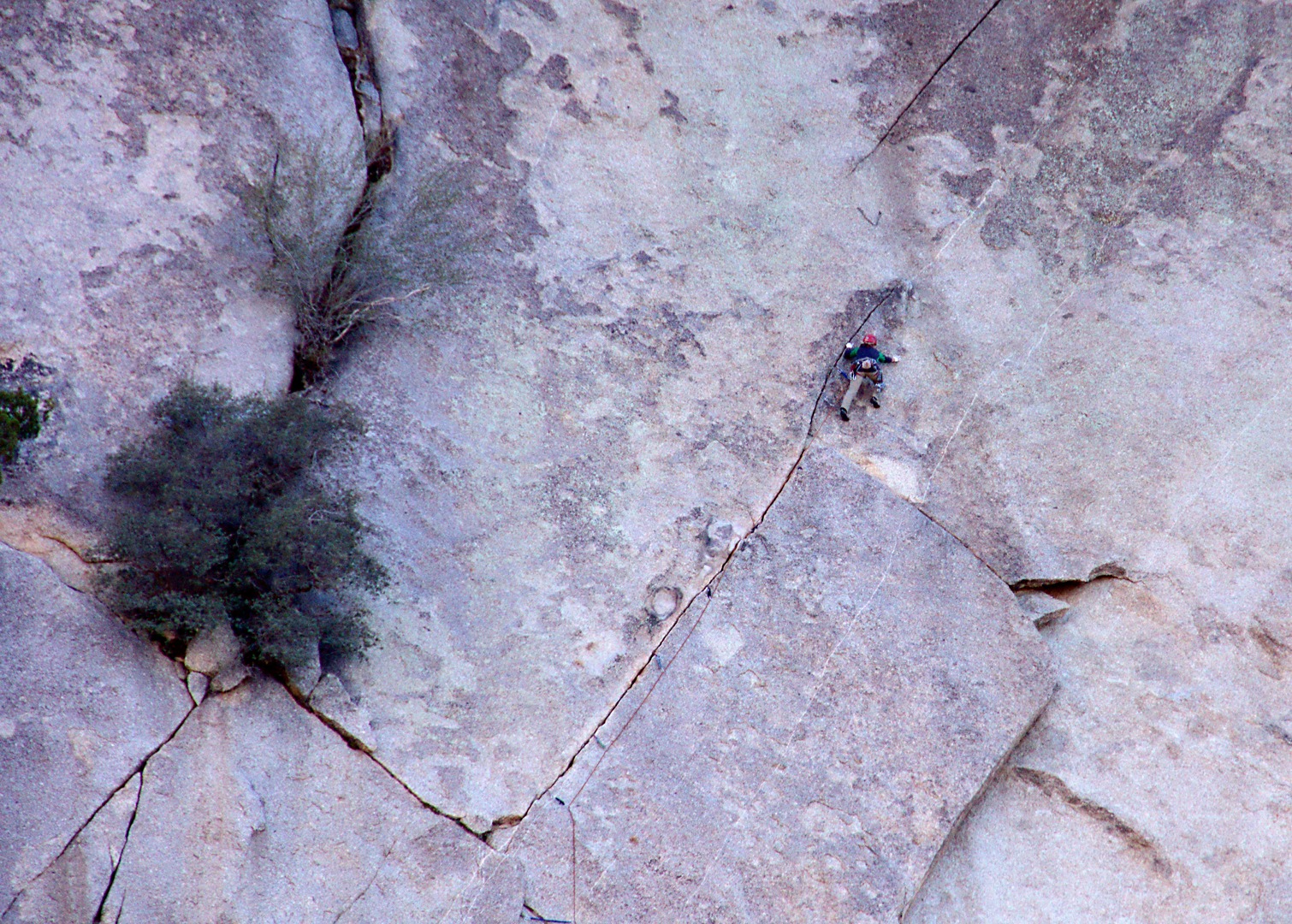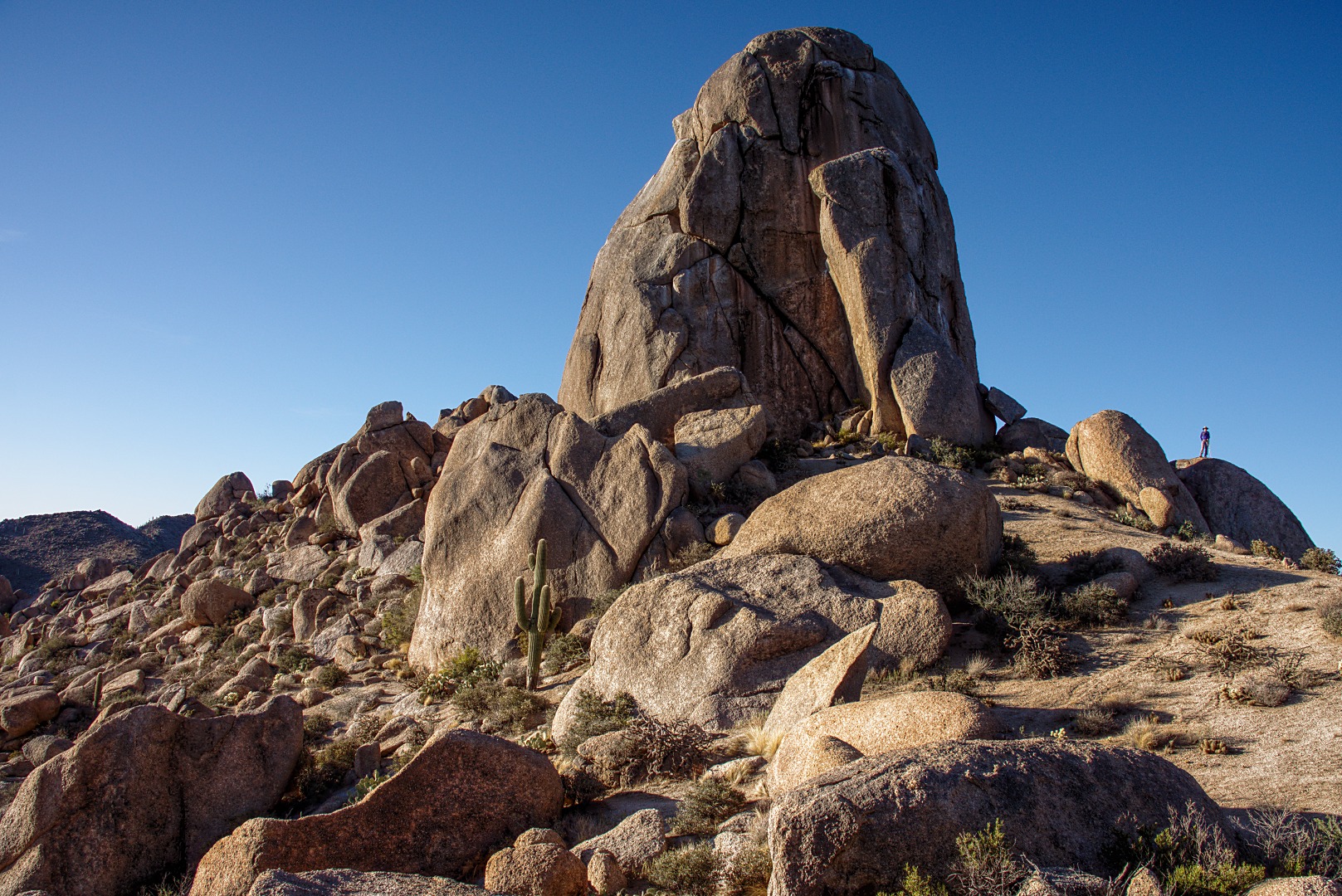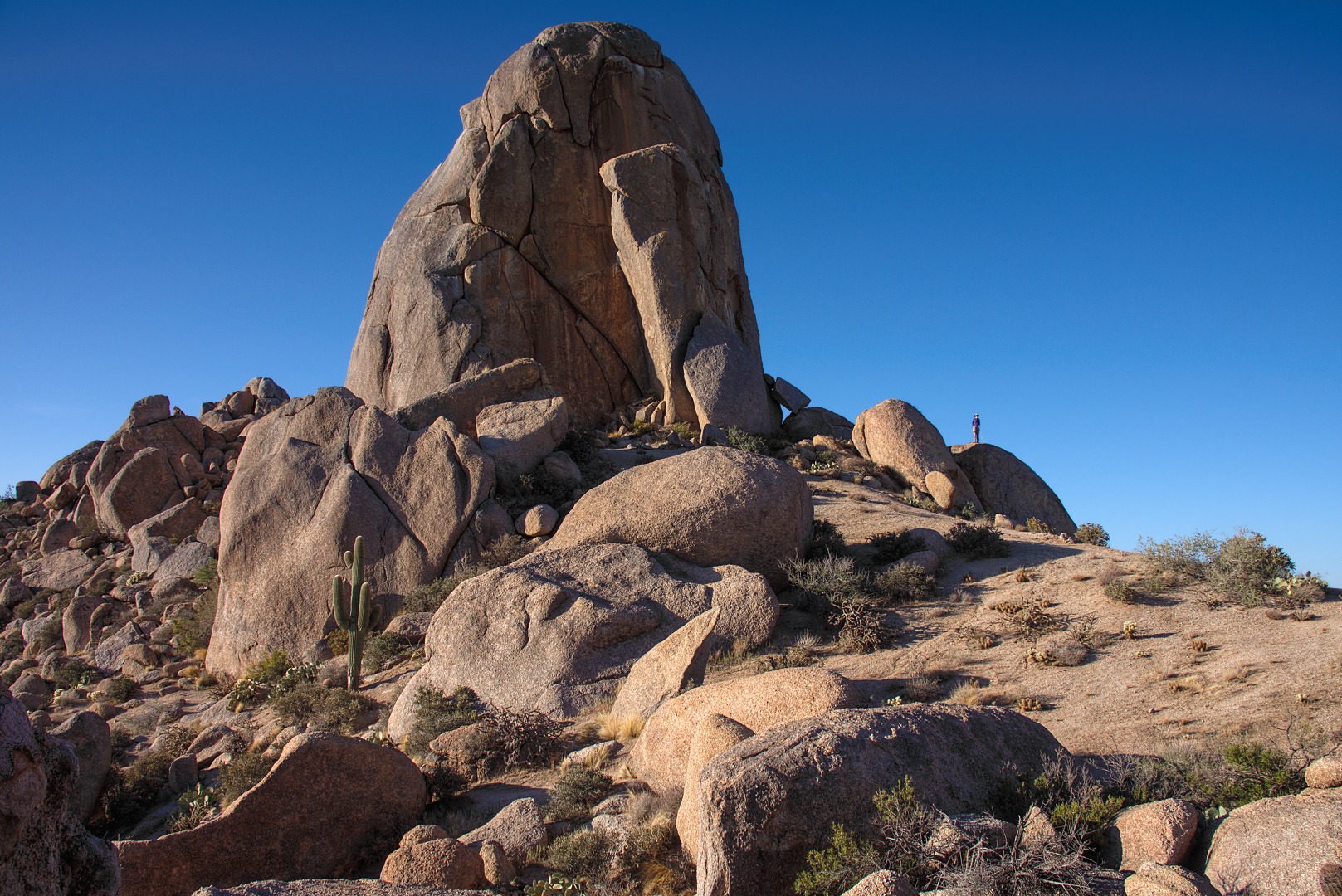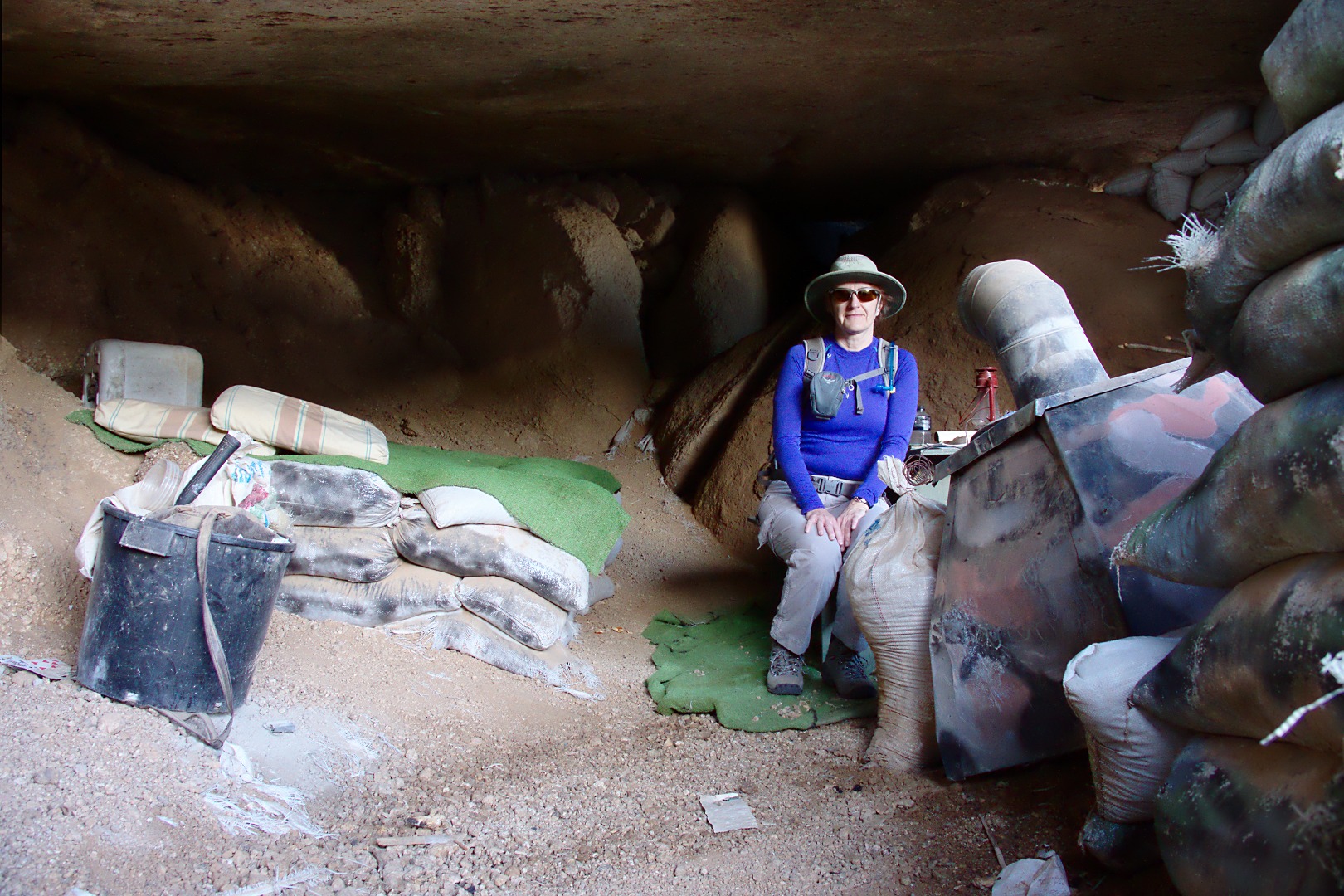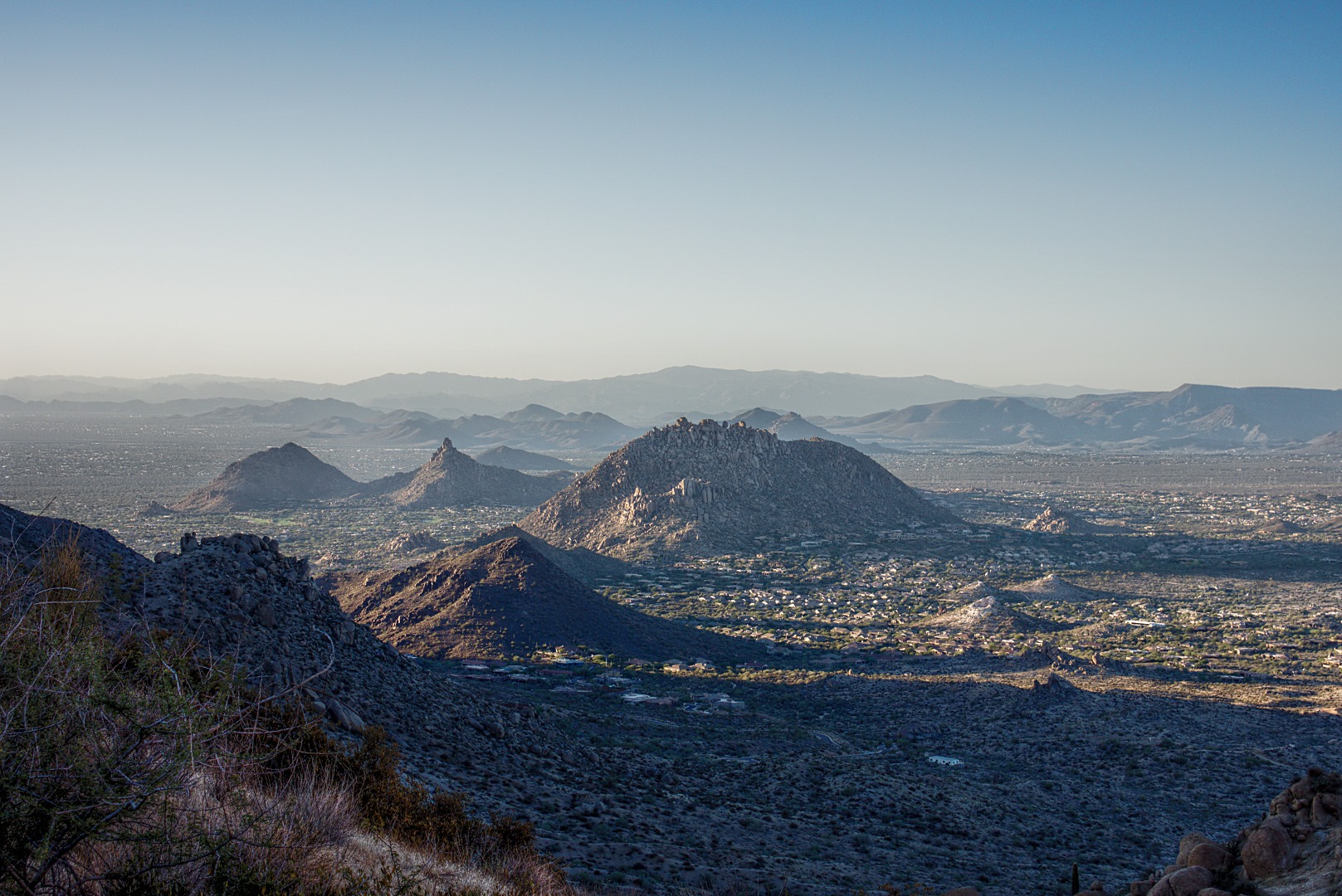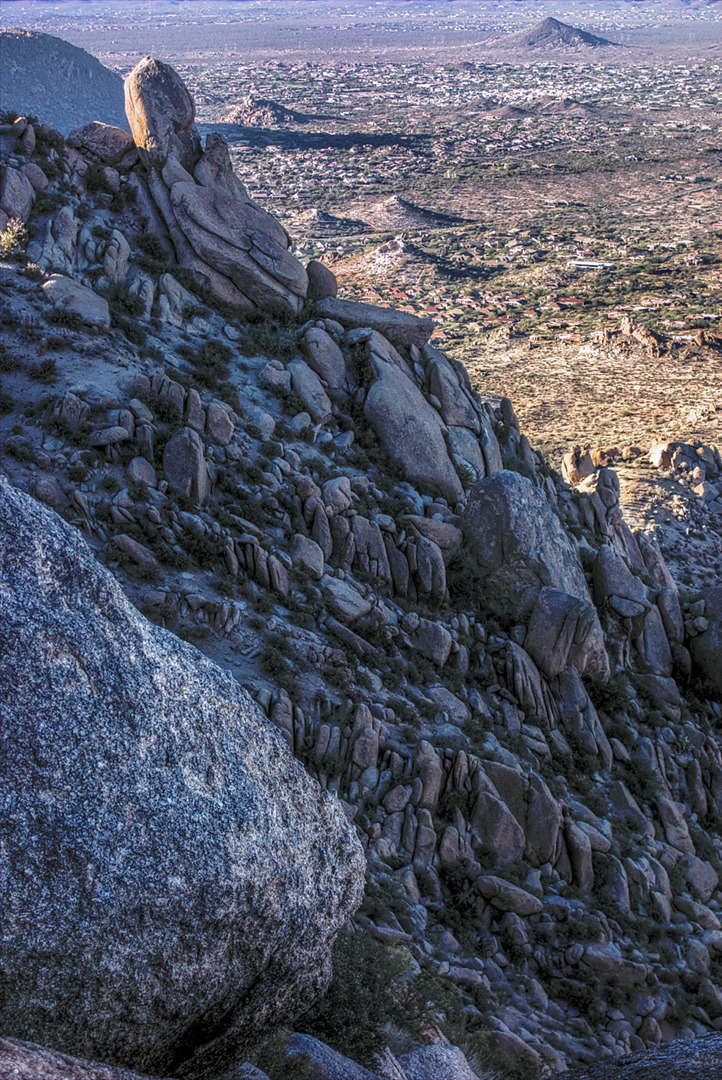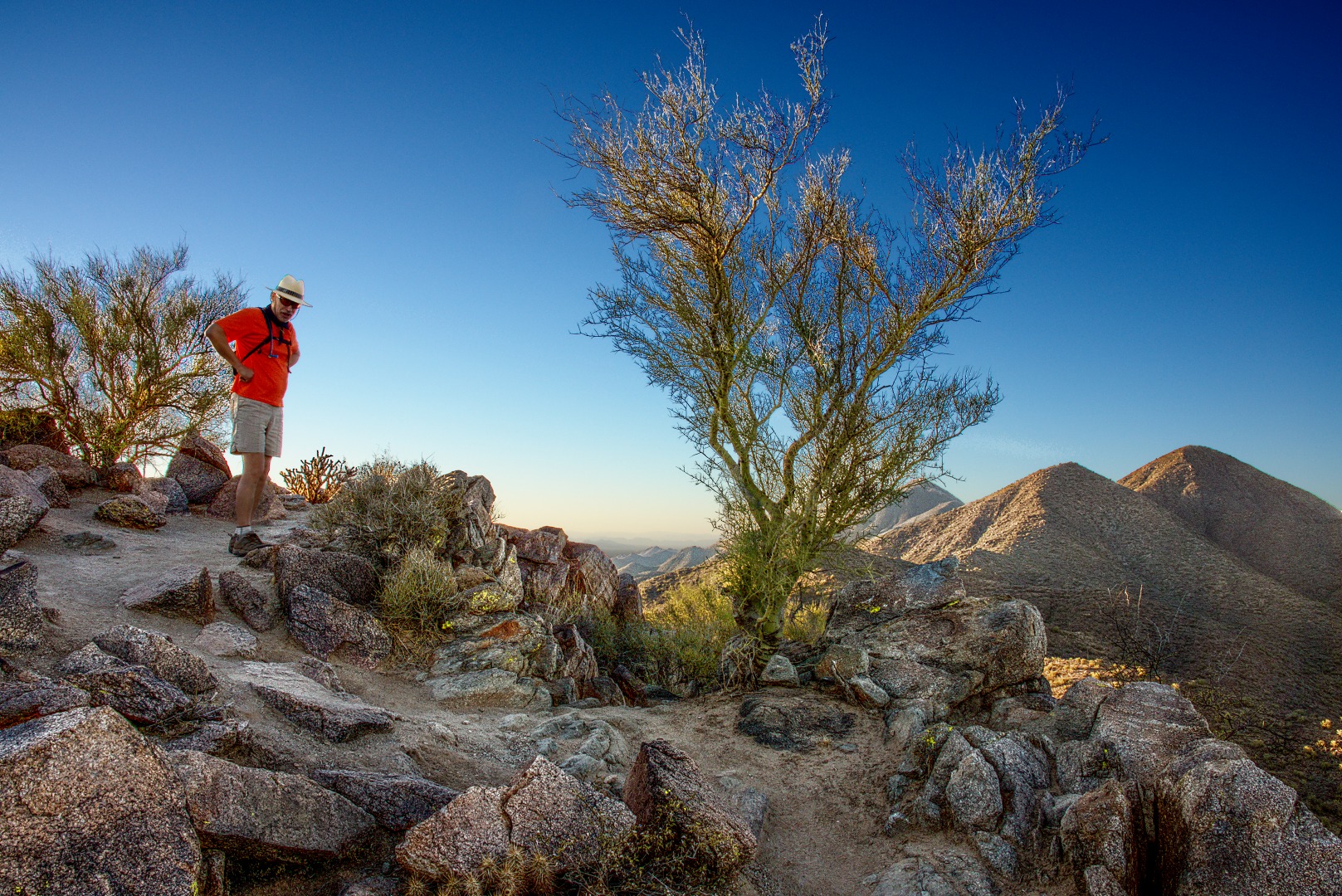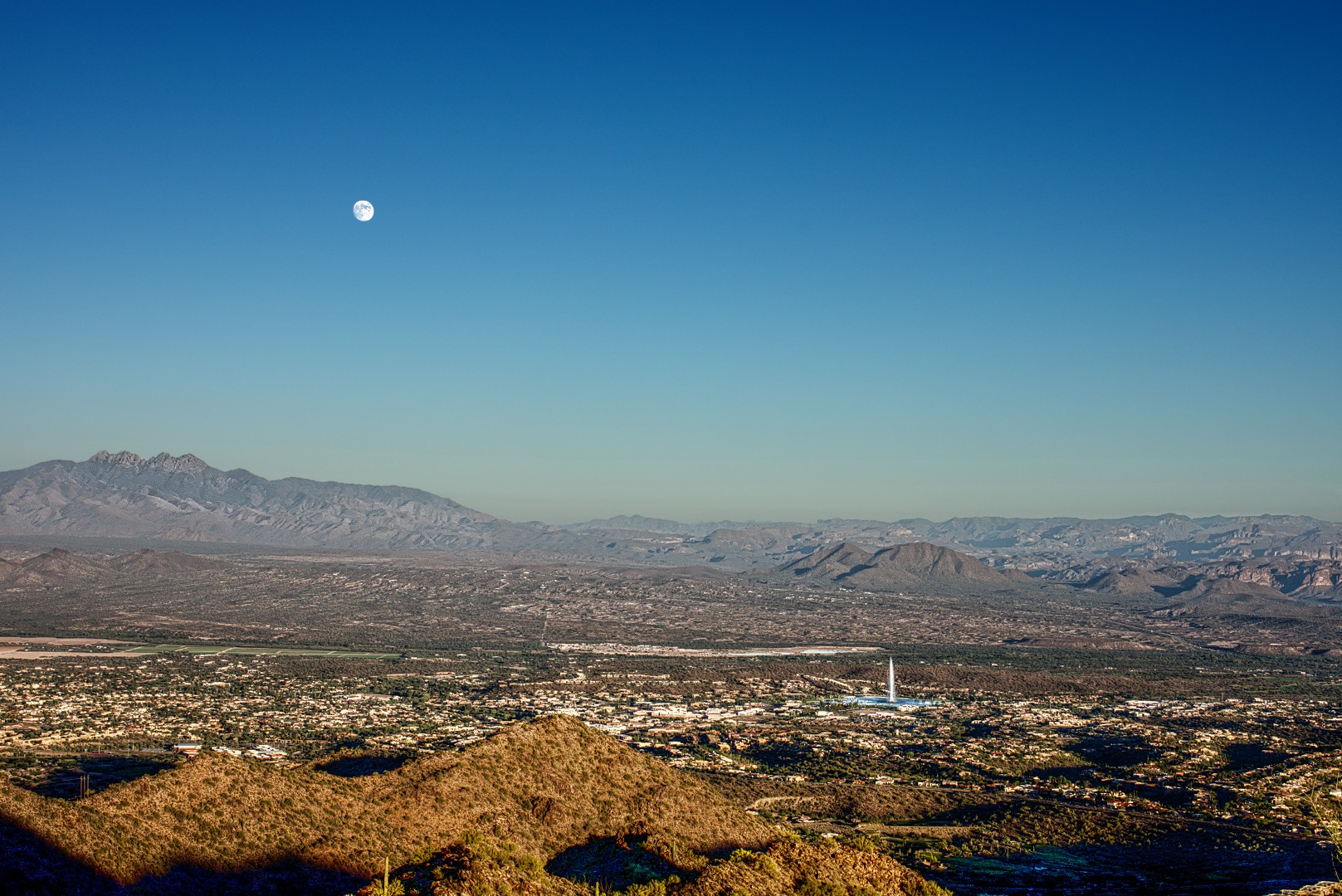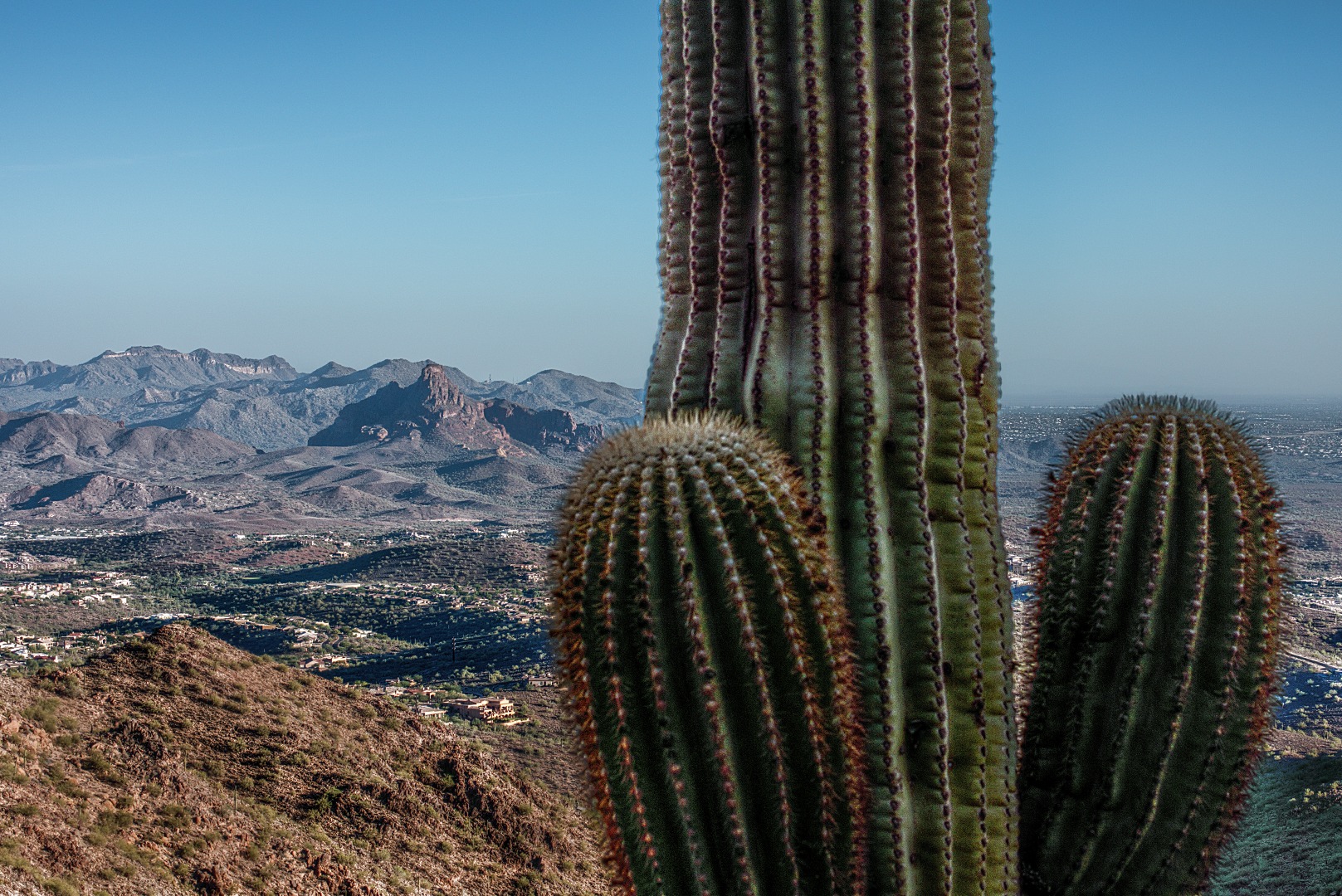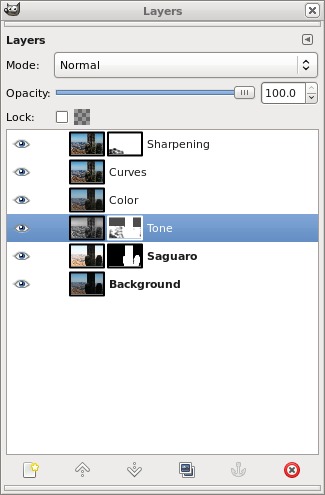On Saturday, January 5, Bob and I did a hike in the McDowell Mountains starting at the Tom’s Thumb Trailhead. We hiked out Mesquite Canyon, taking a climber’s access trail up past the Sven Towers climbing area. We proceeded on to another climbing area known as Hog Heaven. Just above Hog Heaven is a small pinnacle that’s visible from McDowell Mountain Park and even from parts of Fountain Hills. Our goal for the day was to get to that pinnacle. There’s a climb rated 5.5 on that pinnacle named “Thumbnail” so, therefore, I’ll call it the Thumbnail Pinnacle in this post.
In the photo below, the Thumbnail Pinnacle is a third of the way over from the right hand side of the photo. Several walls of the Hog Heaven climbing area are below it.
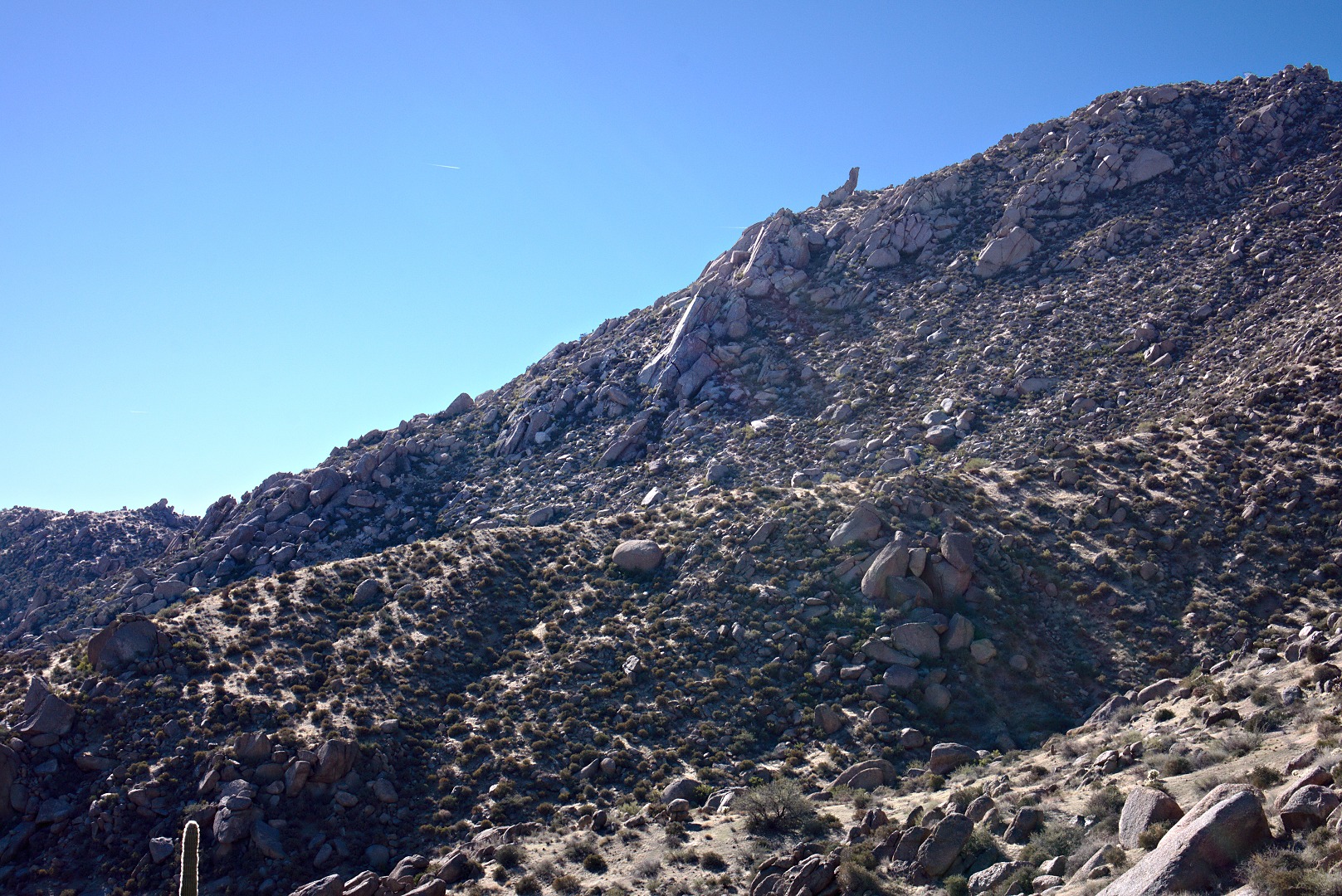
Another view as we got somewhat closer:
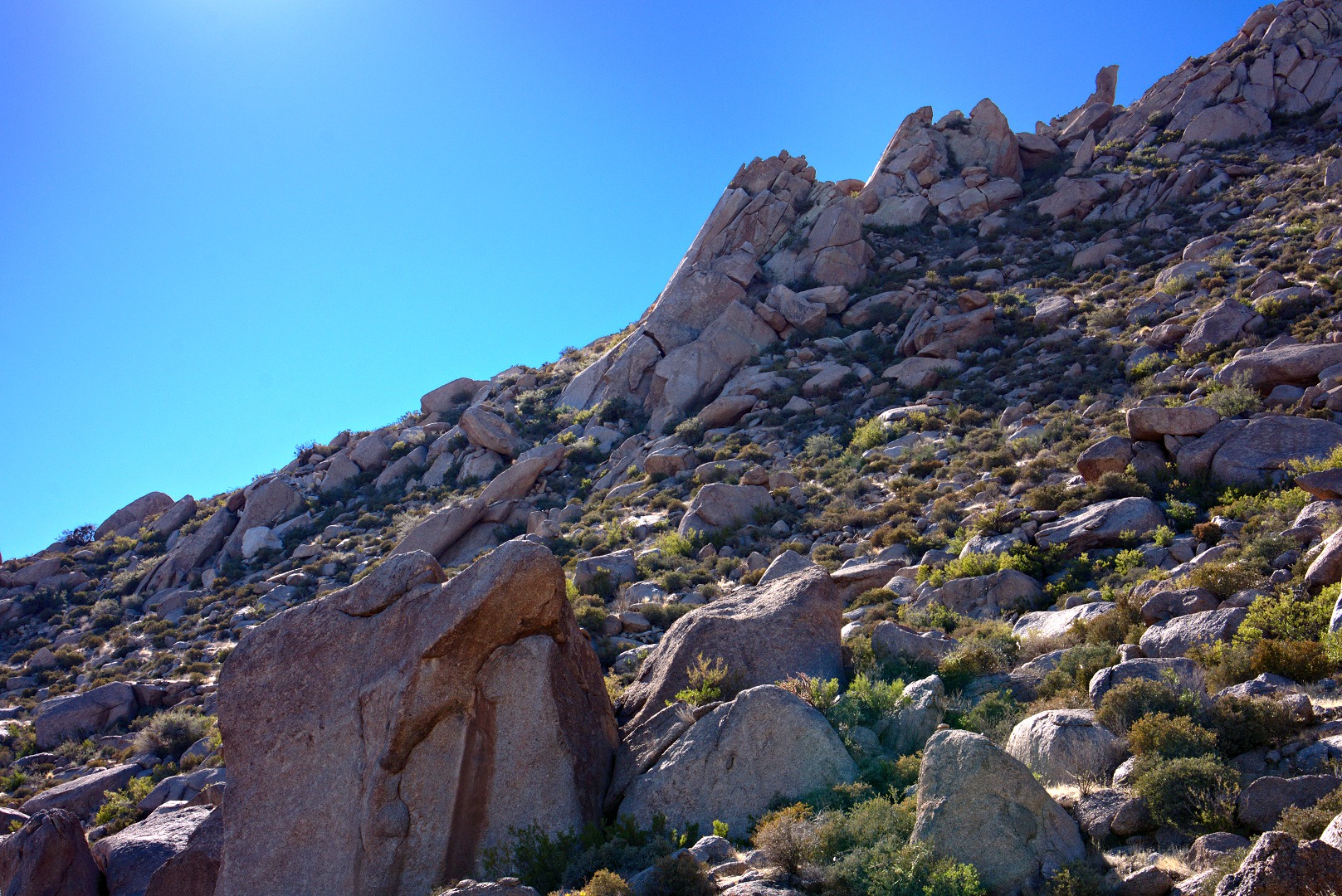
A view to the east and downward from atop a boulder from near the Hog Heaven climbing area. Portions of the Marcus Landslide Trail can be seen at the bottom of the photo. About a third of the way over near the bottom is a large rock called “Submarine Rock”. McDowell Mountain Park is visible above Submarine Rock. Further off in the distance are the communities of Rio Verde and Tonto Verde followed by some mountain ranges whose names I do not know.
It was interesting to look at the full size, 6024×4024 pixel, versioni of this photo. Zoomed in all the way, I was able to locate some of the trails that I either hike or mountain bike regularly in the park.
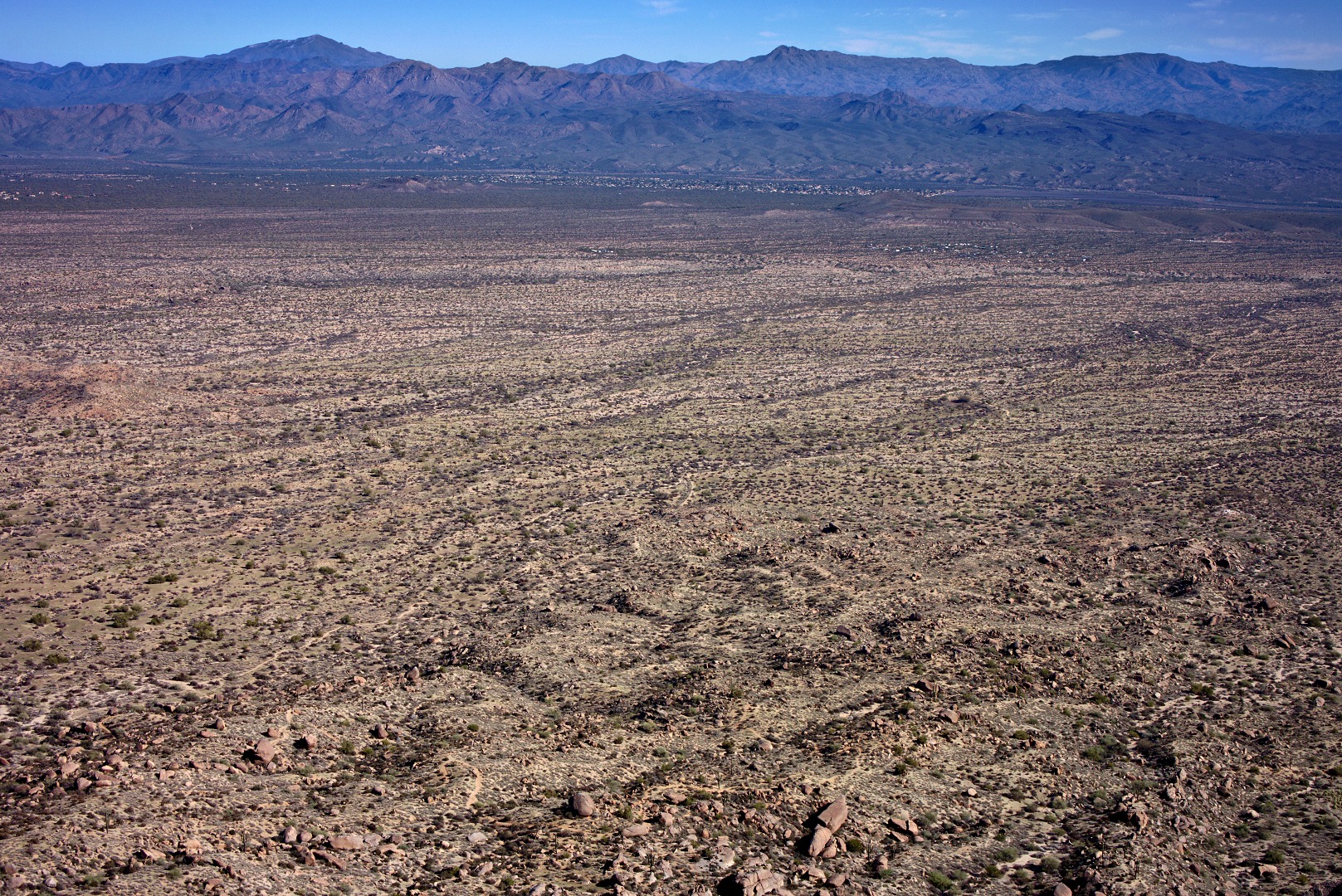
A view to the southeast of Fountain Hills, Weaver’s Needle, and Red Mountain:
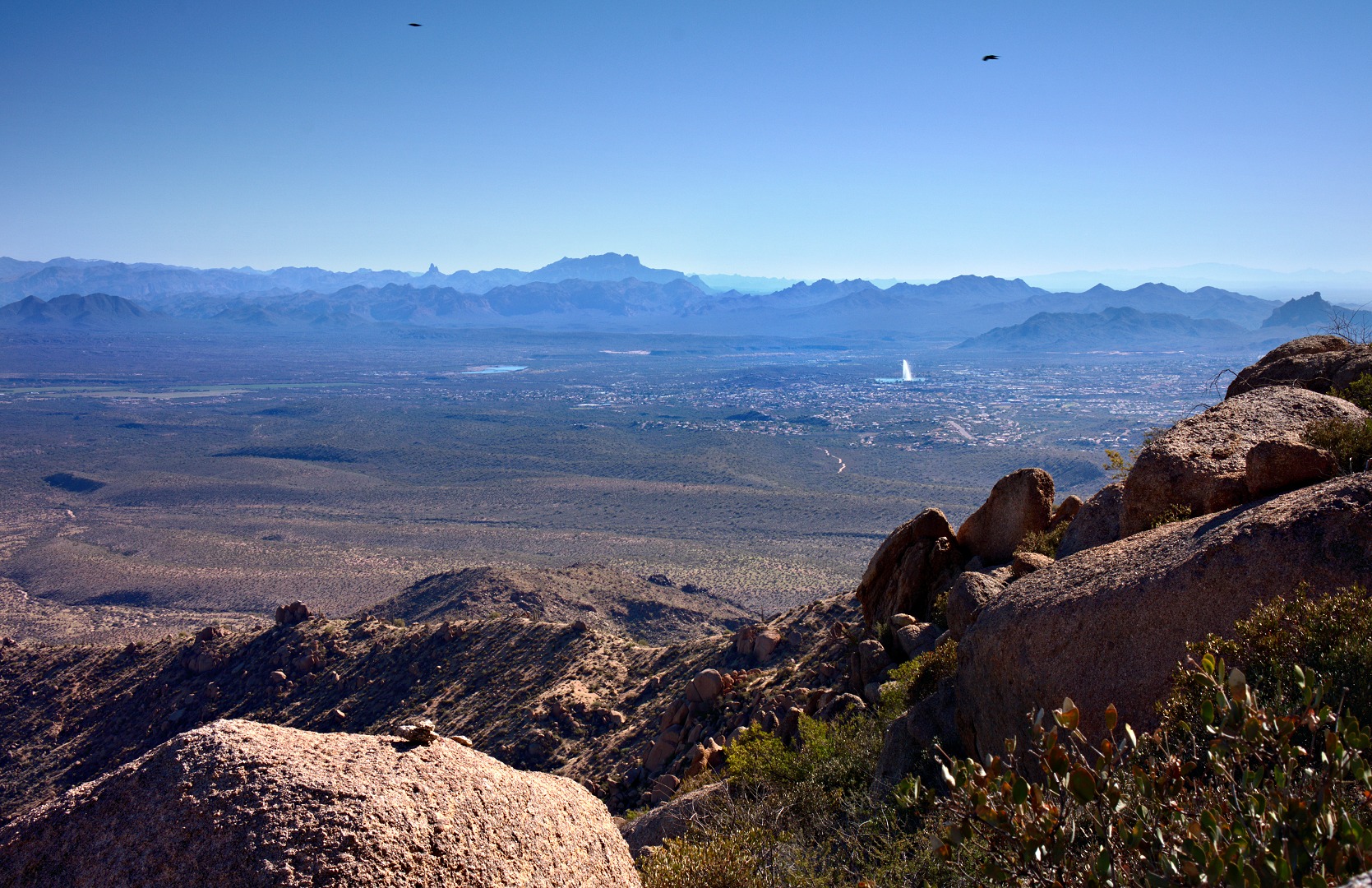
Below are several views of the Thumbnail Pinnacle.

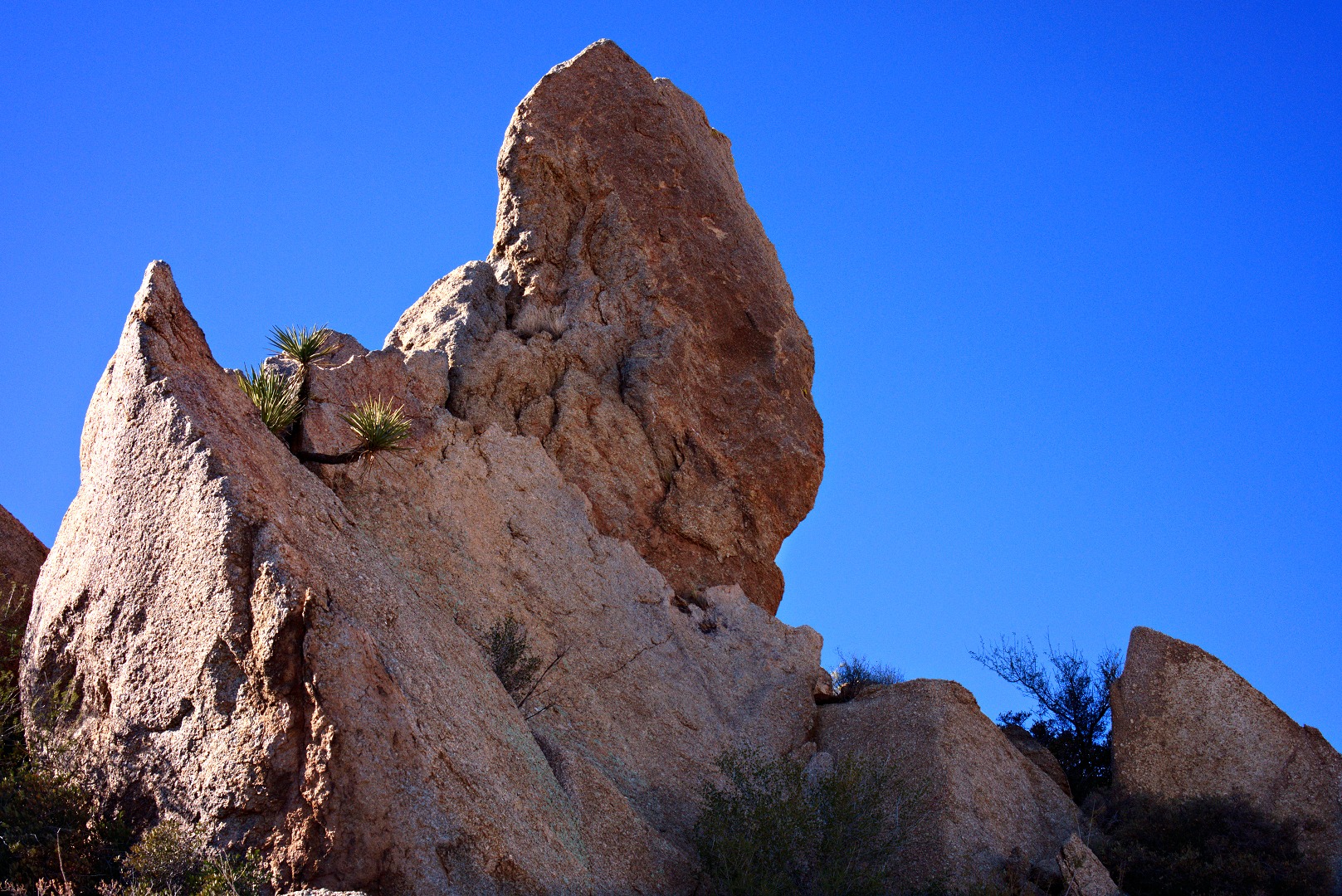
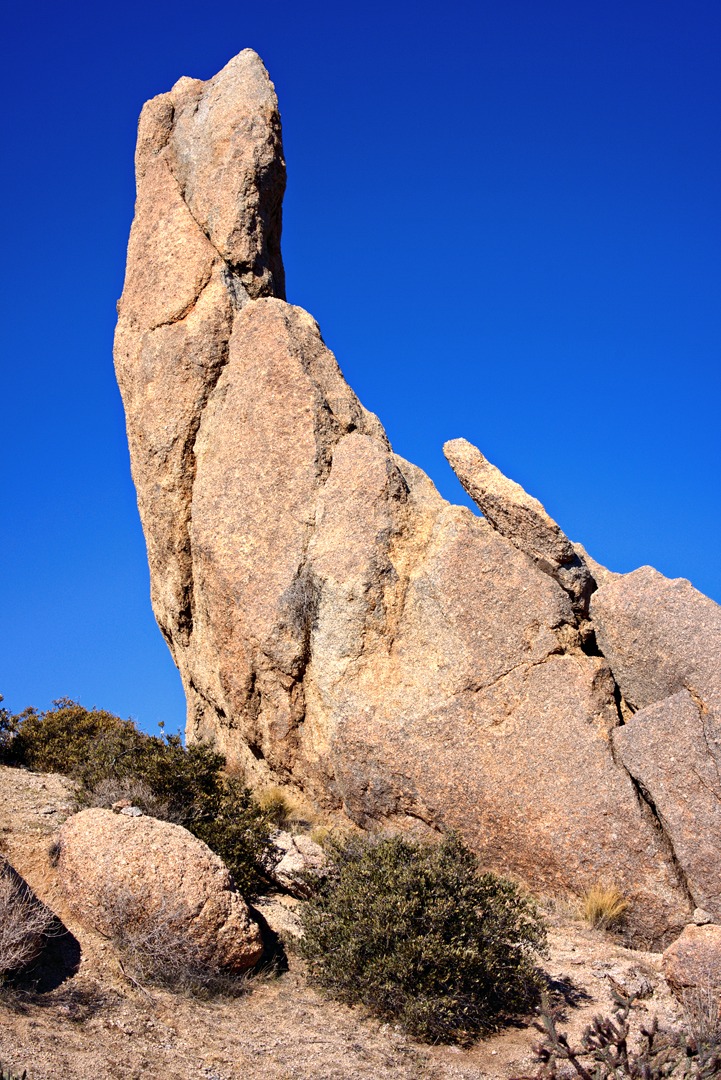
Slightly above the Thumbnail Pinnacle is a view Scottsdale to the west:

We looked up and saw what we thought might be the peak. It turns out that it wasn’t the peak, but the actual peak wasn’t too far away. I thought the line of whitish stones was interesting.

A closer look at those “white” looking stones. Close up, they don’t appear to be white at all, but they are lighter in color than some of the surrounding rock and the ground.
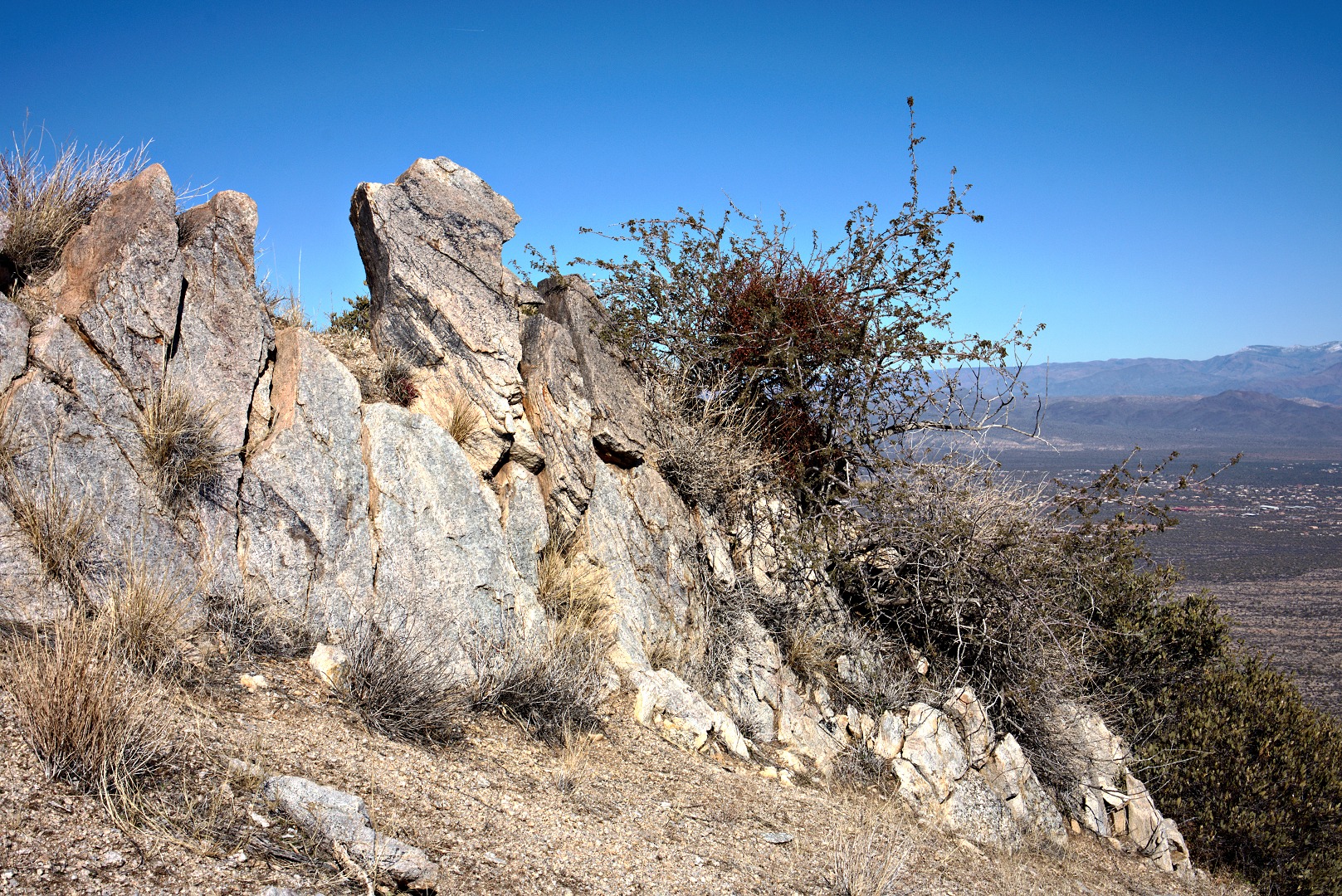
We hiked up to the peak above us. The photo below is a view of the Thumbnail Pinnacle from above. Four Peaks is visible at the left of the photo.

Thompson Peak (with the antennas) to the left and McDowell Peak to the right:
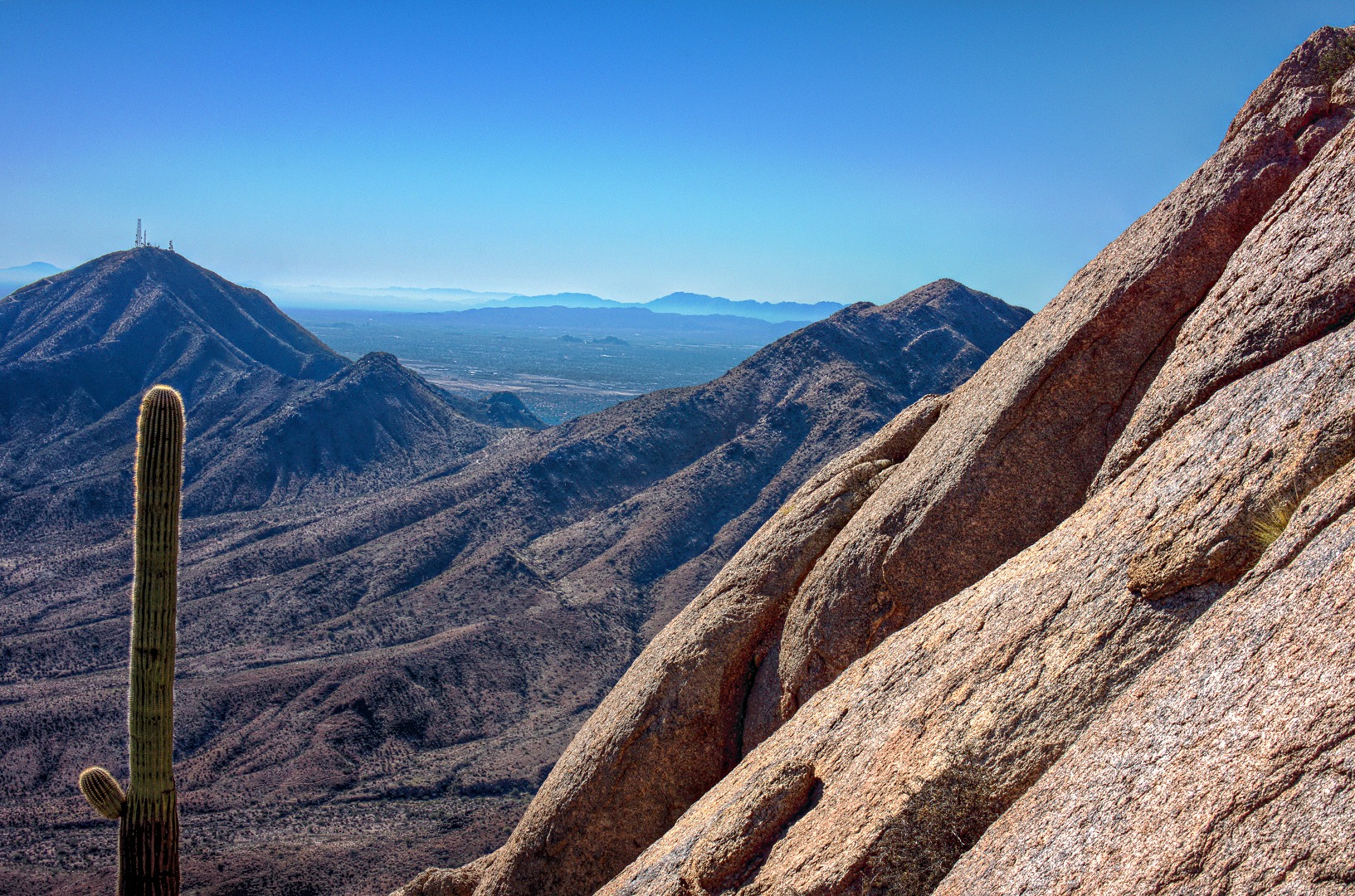
A view of the East End (Peak) with a small weather station below and to the left. It didn’t look all that far away and it seemed that there might be an easier way down off in that direction, so we made our way over to that peak.
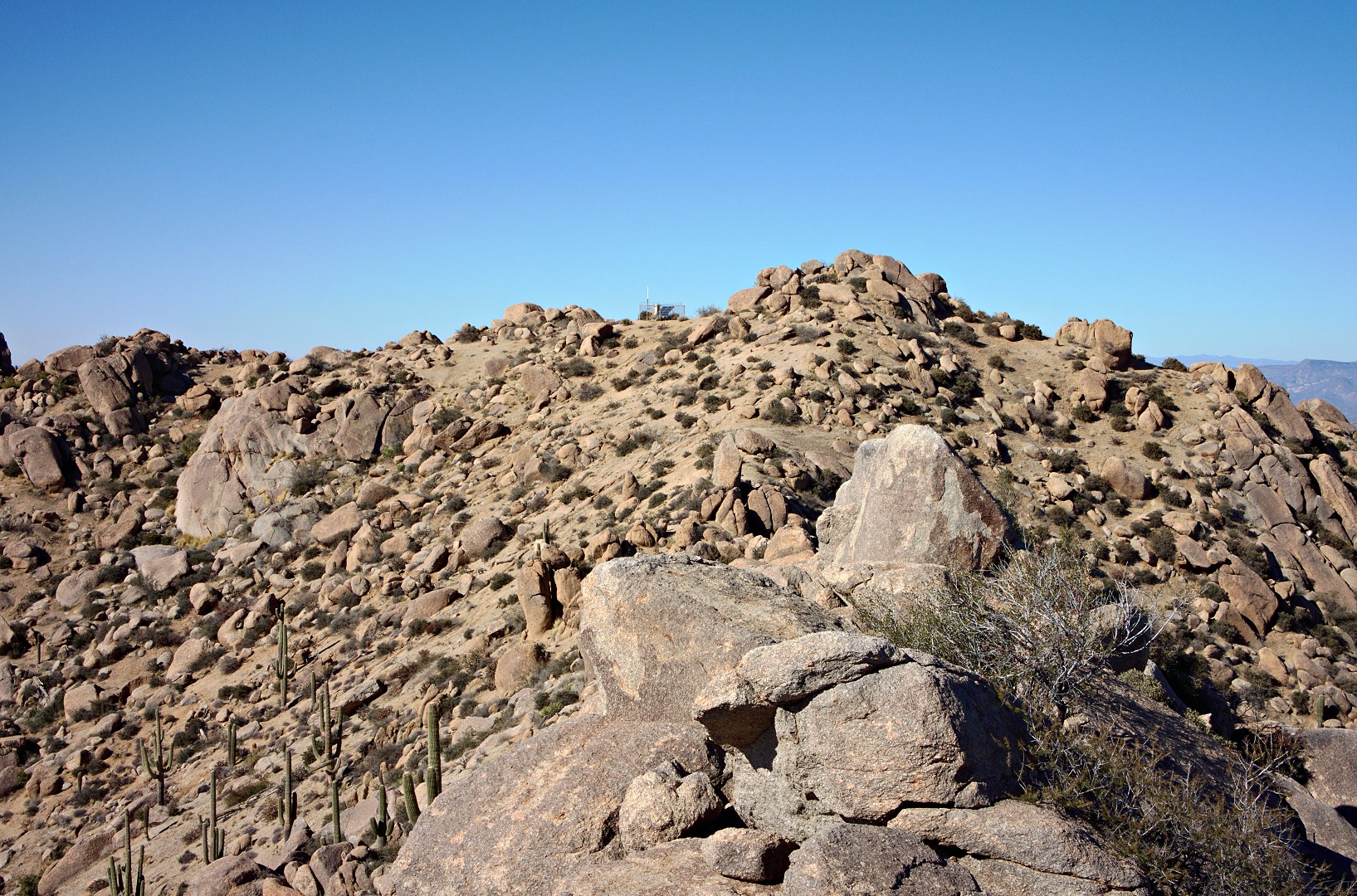
On our way over to the East End peak, we looked down and saw the East End Trail with its many switchbacks.

A view into Scottsdale from near East End peak:
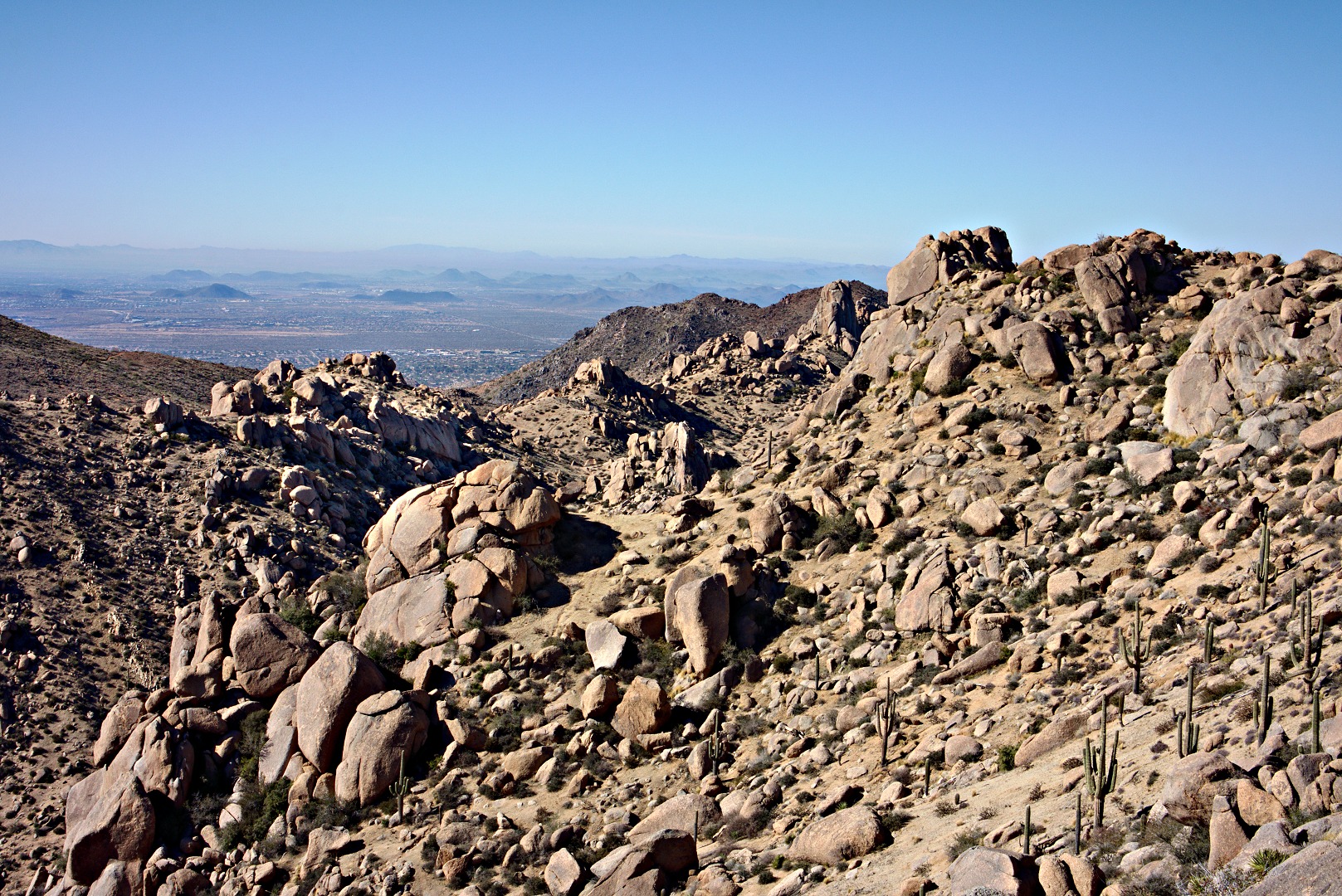
The weather station:

A view of Tom’s Thumb and Scottsdale from atop East End Peak. While we were up there, we spotted a lower peak that we decided to bag next.

Bob, atop East End peak:
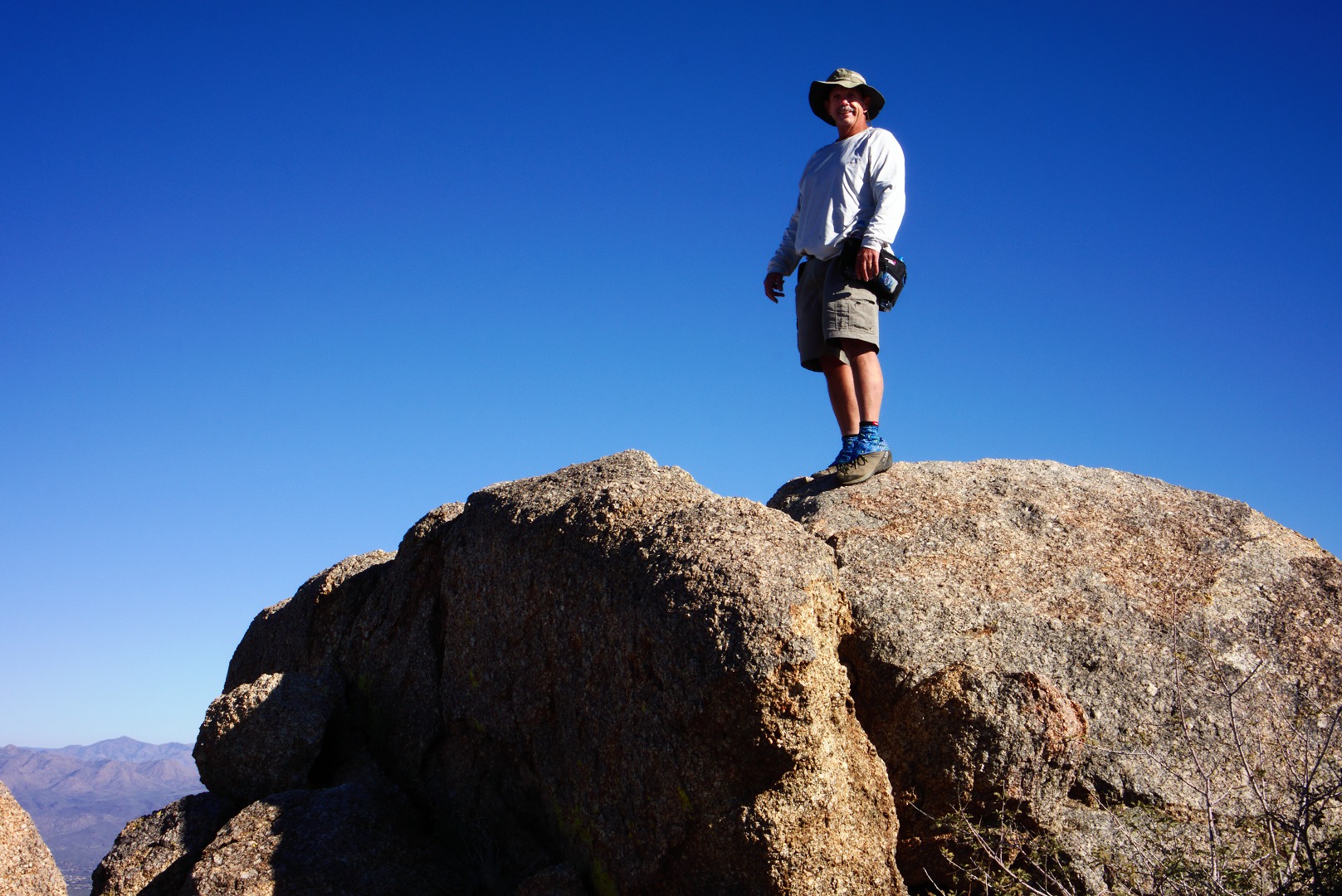
We saw several USGS markers, below, on a rock adjacent (and slightly lower) than the peak. It appears to me that 4001 has been etched on the marker, but several other sources state that the elevation is 4,067 feet. I think it’s likely that more accurate methods of determining elevation were used sometime after 1968 to determine the height. The rock upon which Bob is standing in the photo above is the highest point in the McDowell range.
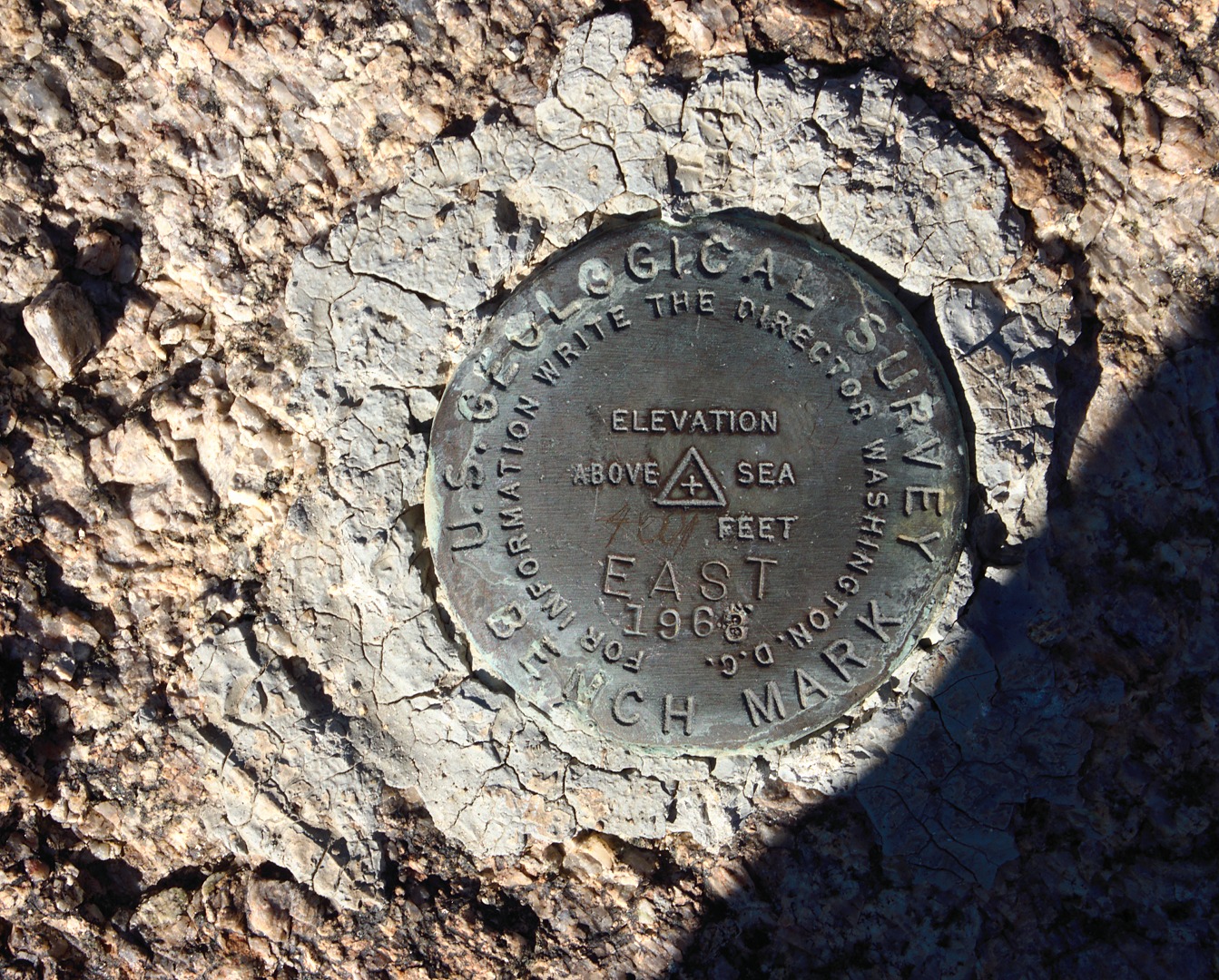
Bob took this photo of some Javelina that we saw on the saddle below us as we were descending.
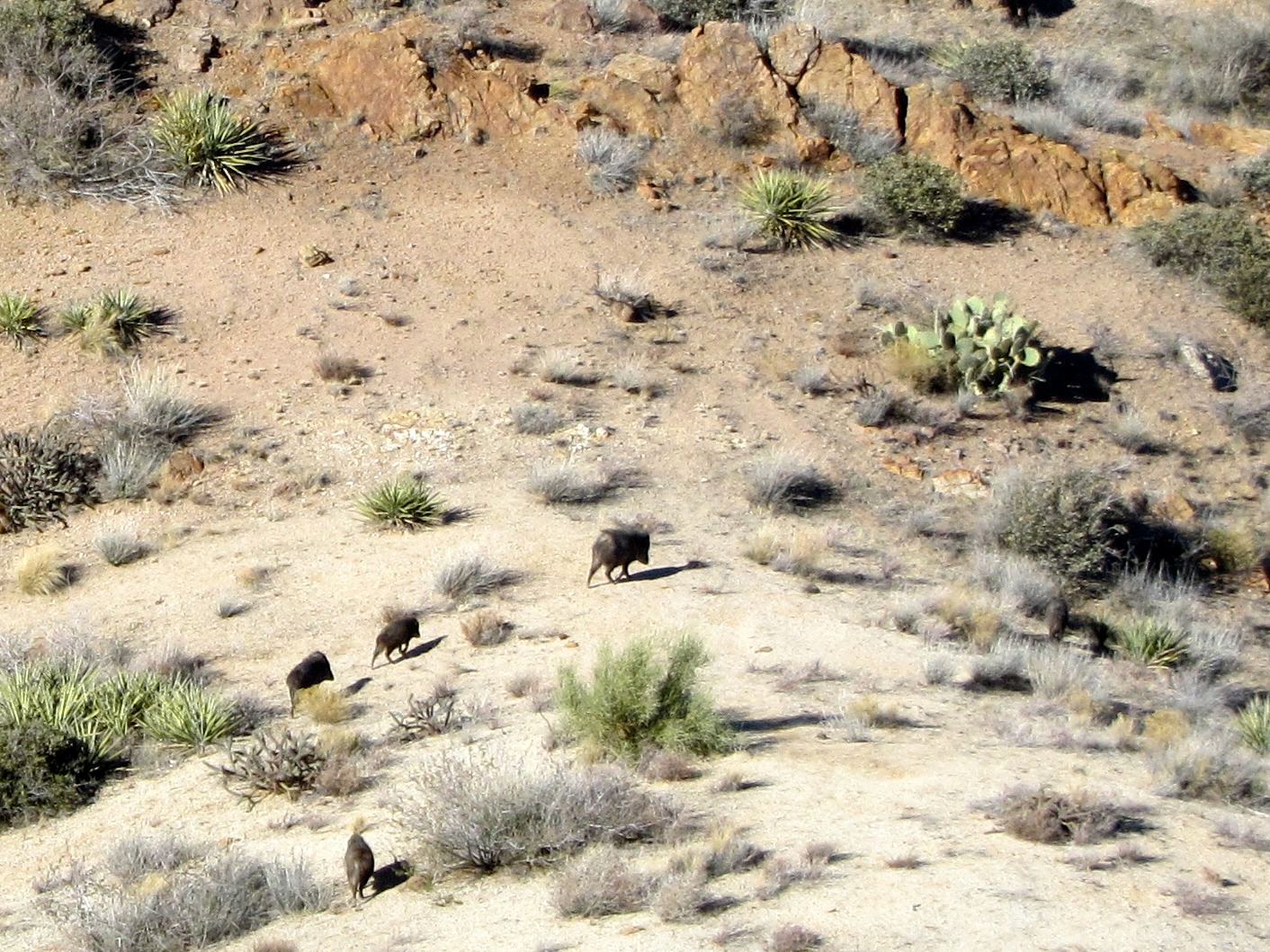
As we descended, both Glass Dome and Tom’s Thumb became visible.

We crossed the saddle where we saw the Javelina and came upon this rock (at the right) which we decided to call Mitten Rock.
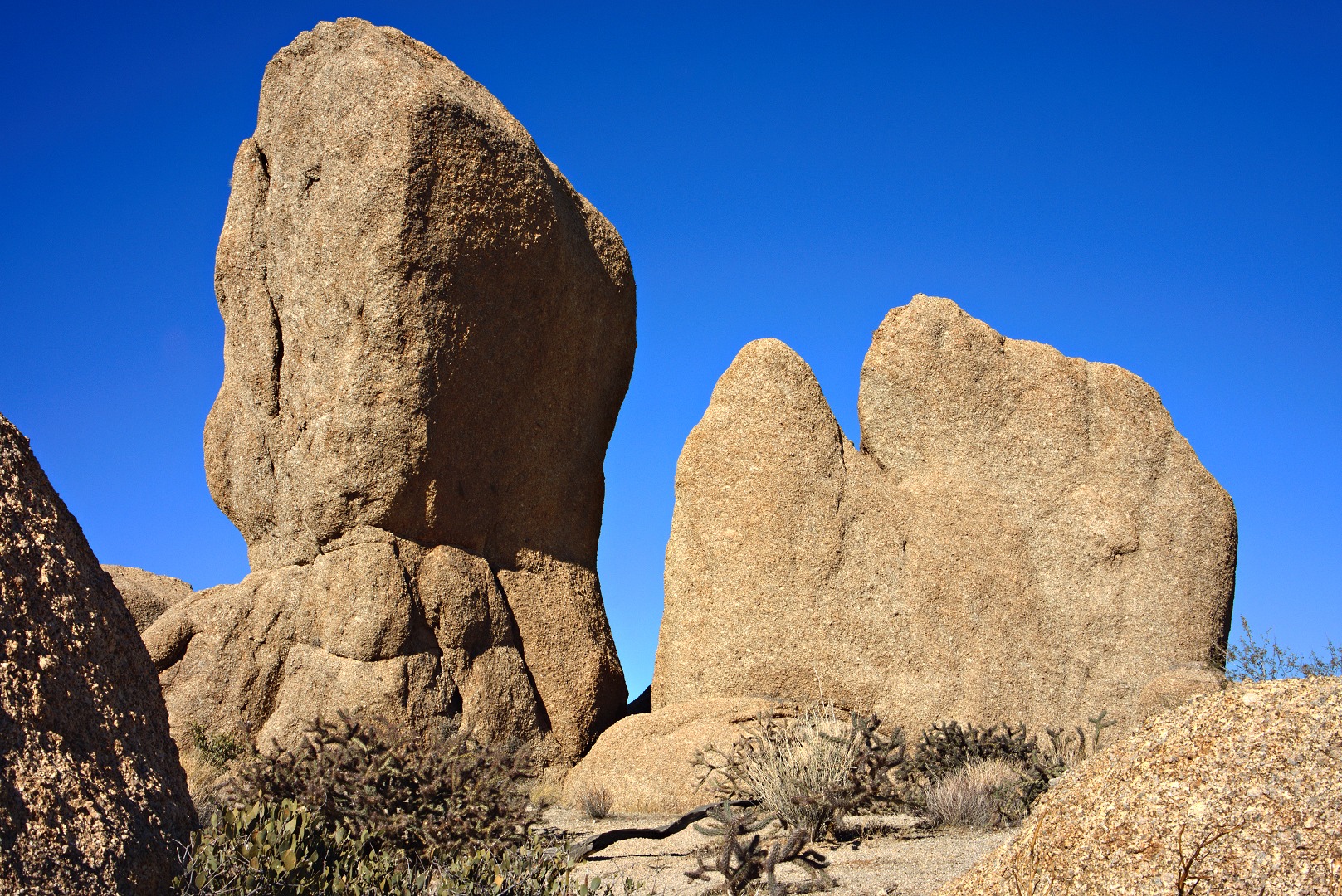
A view of another rock formation to the southeast.
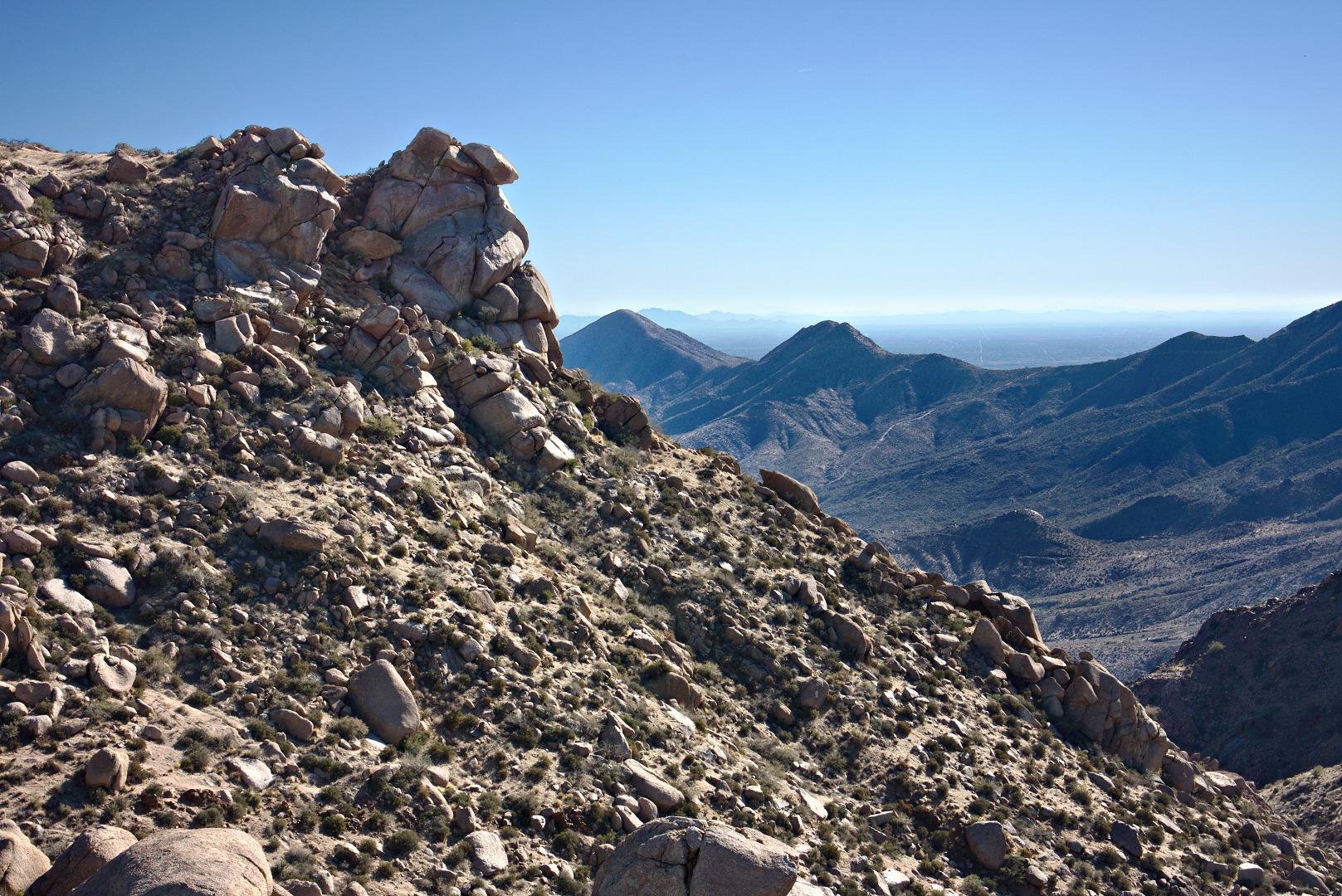
Looking down on Gardner’s Wall and Tom’s Thumb:

Bob took this photo of me as we descended further:
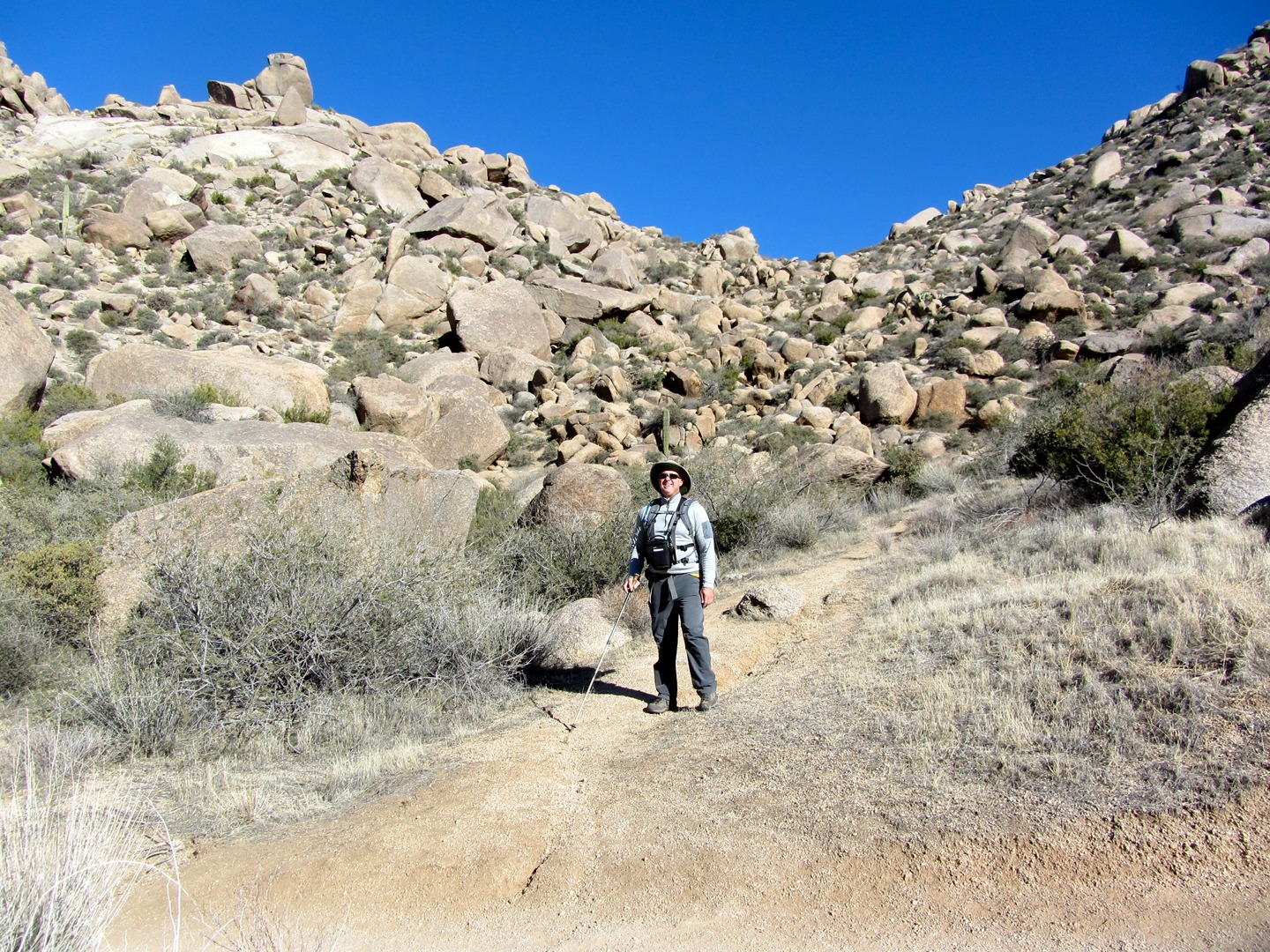
A view of Pinnacle Peak and part of Troon. Part of the Tom’s Thumb Trail is also visible in this photo.

Glass Dome and Tom’s Thumb:

Once we intersected the Tom’s Thumb Trail, we hiked over to the intersection with the East End Trail and took another climber’s access trail down past Gardner’s Wall. On the way, we saw this roadrunner, below. Bob took this photo – he had more zoom on the lens of his camera. It’s a much better shot of the roadrunner than any that I took.
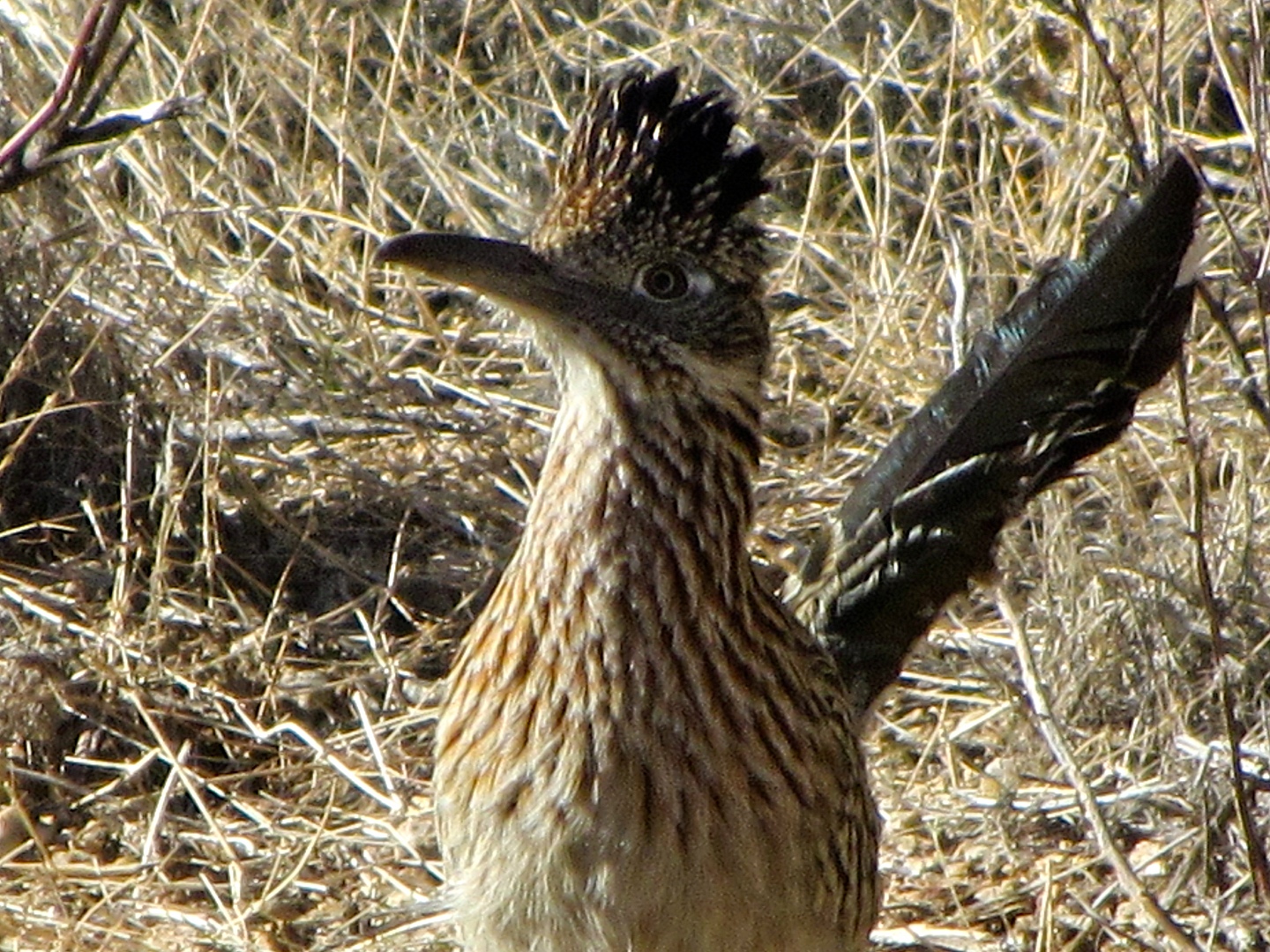
A short ways further, we saw this rock, which sort of reminds me of a dinosaur head:

I liked this view of the saguaro standing next to a large boulder only slightly taller than the saguaro:
